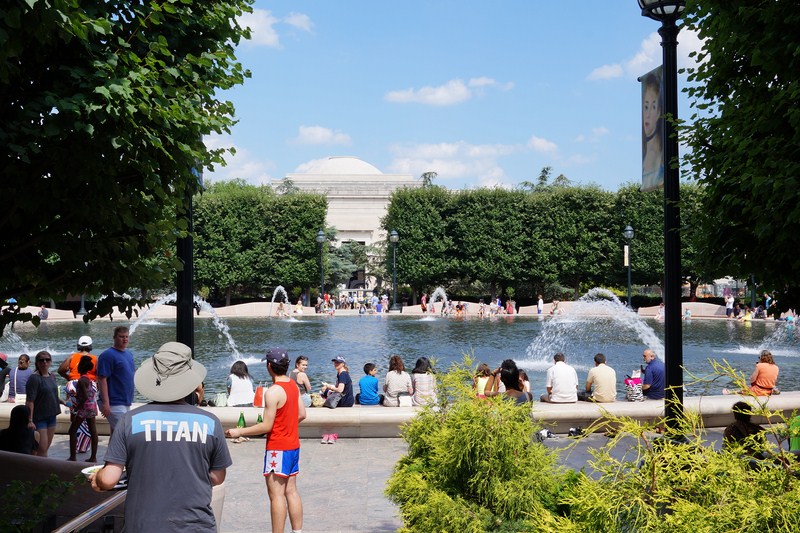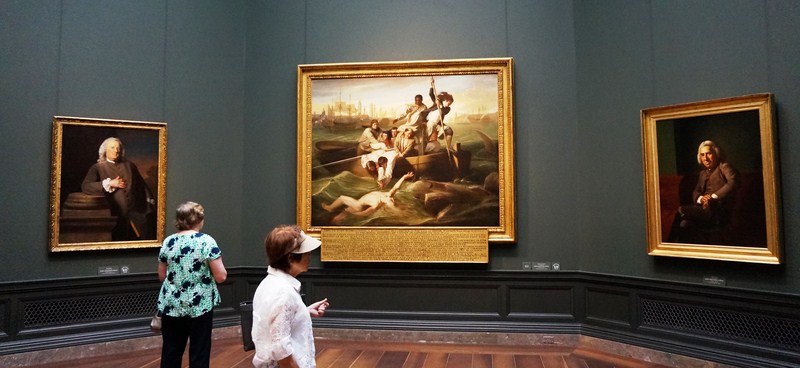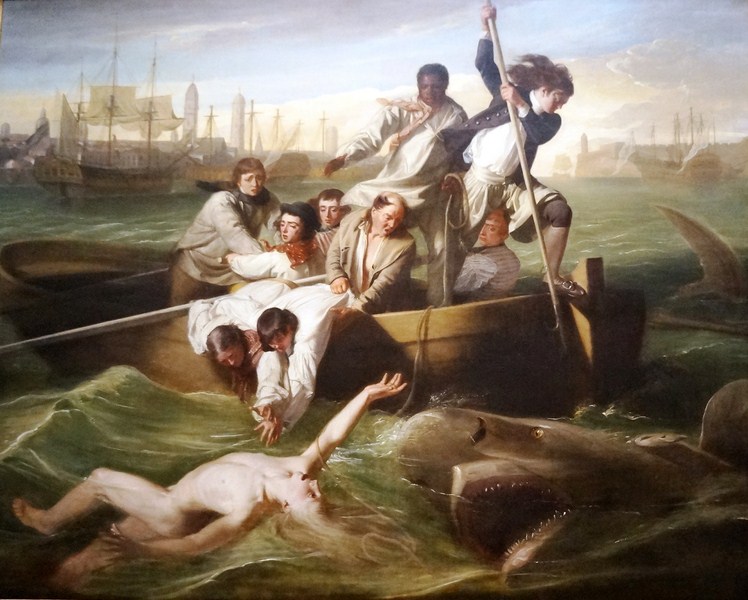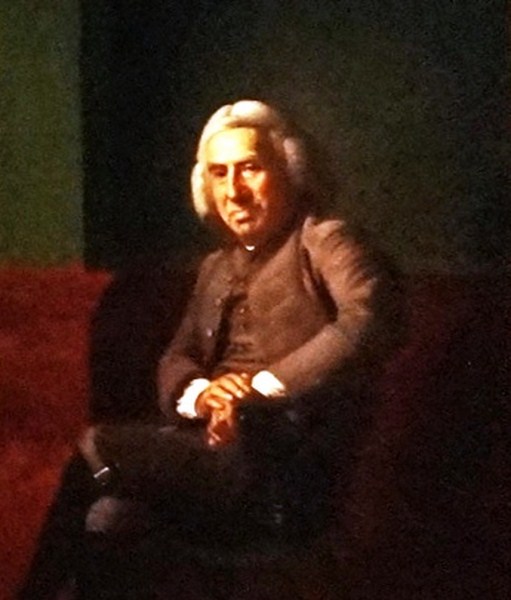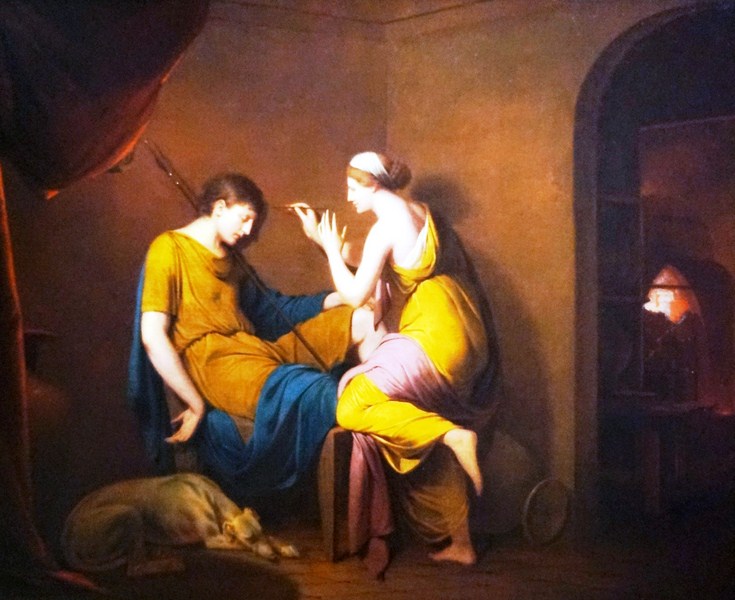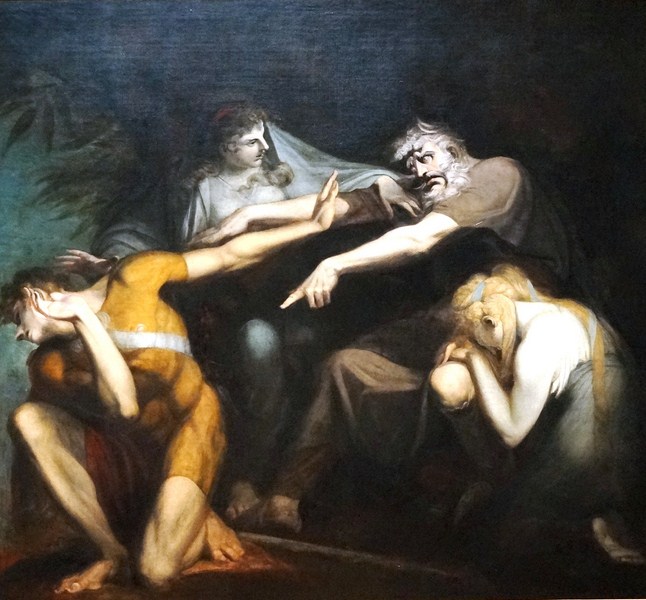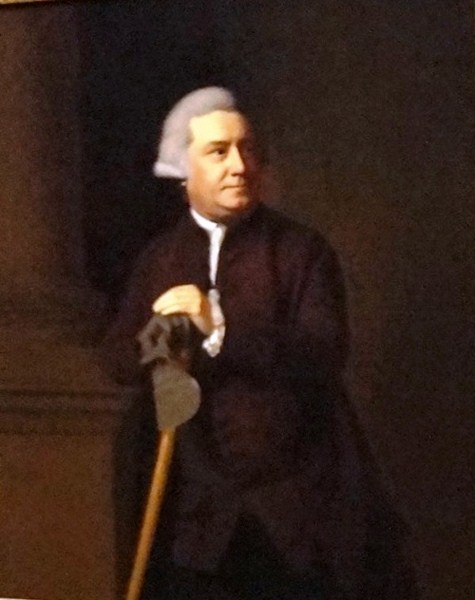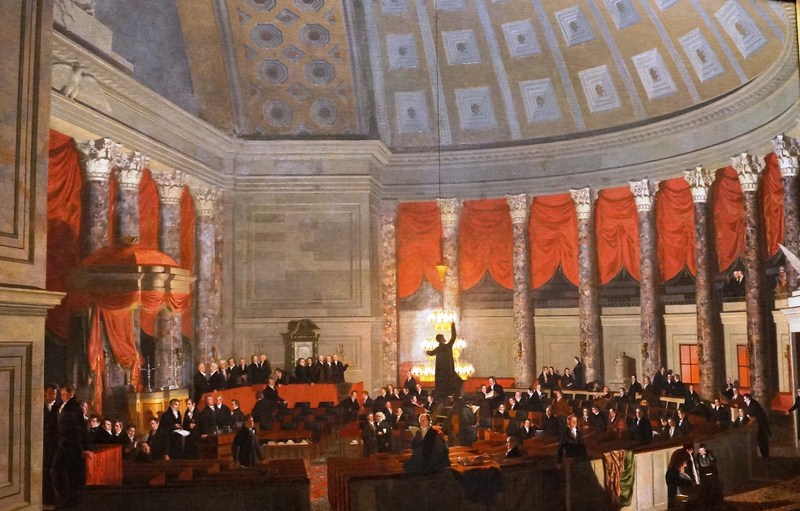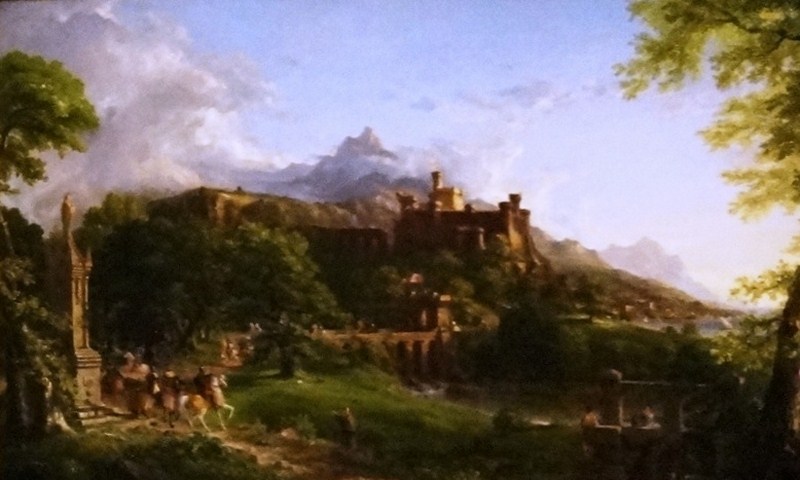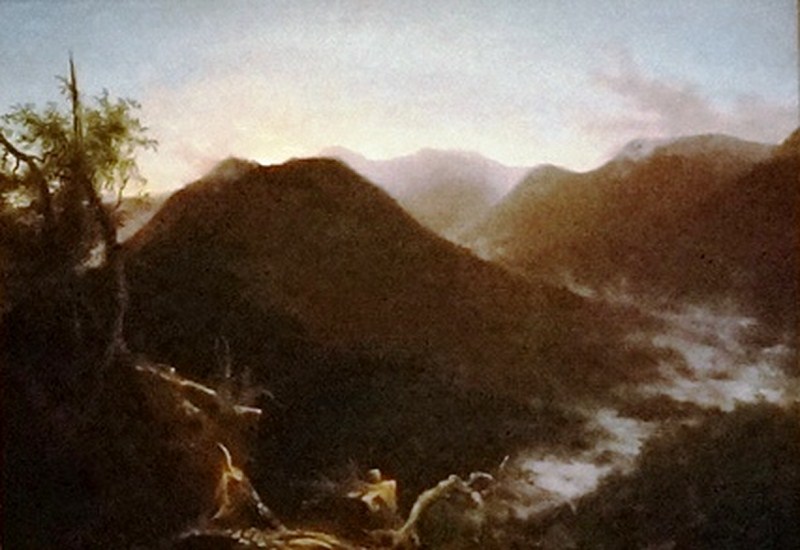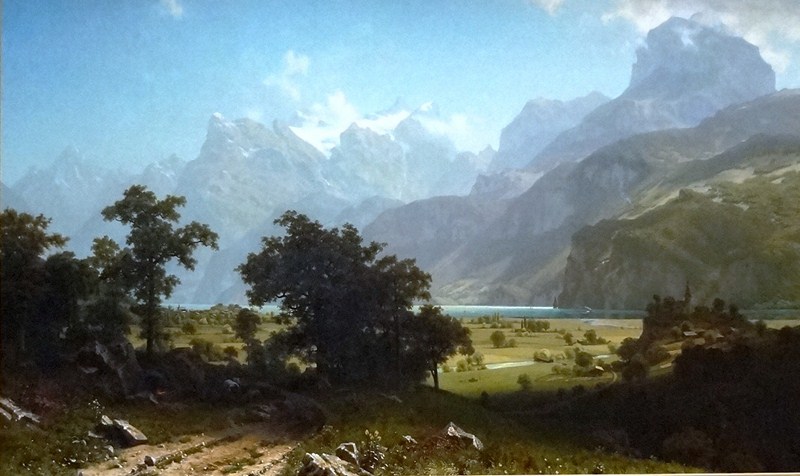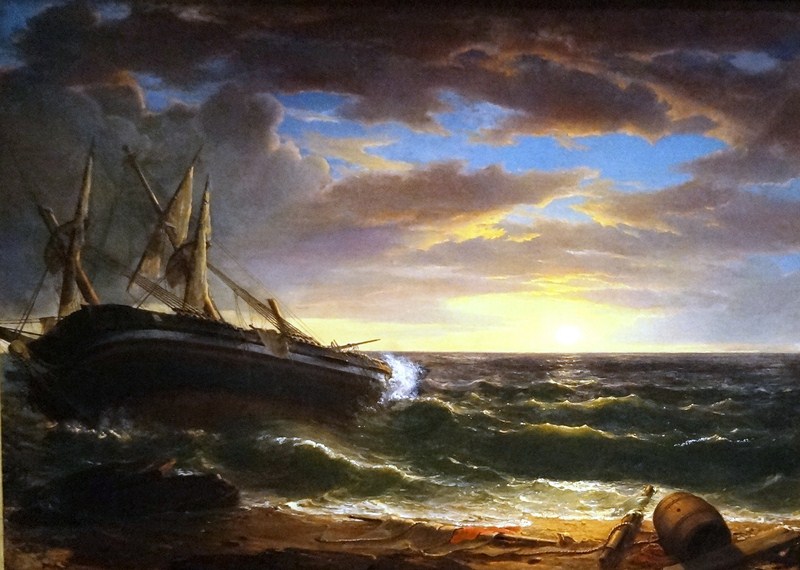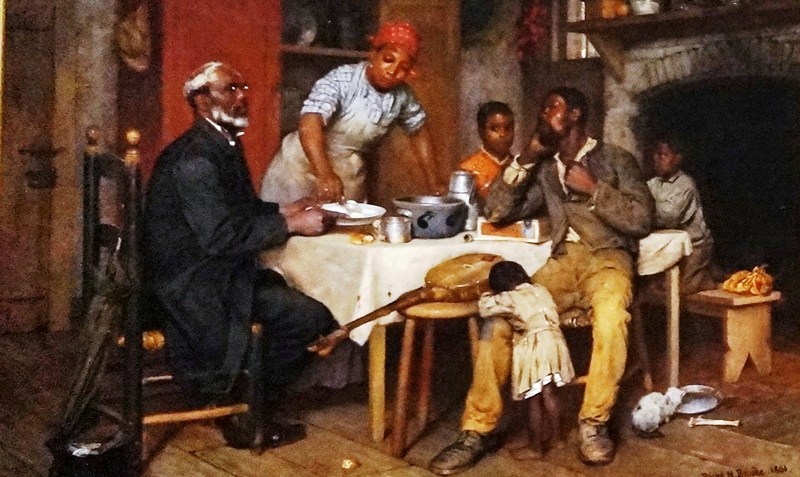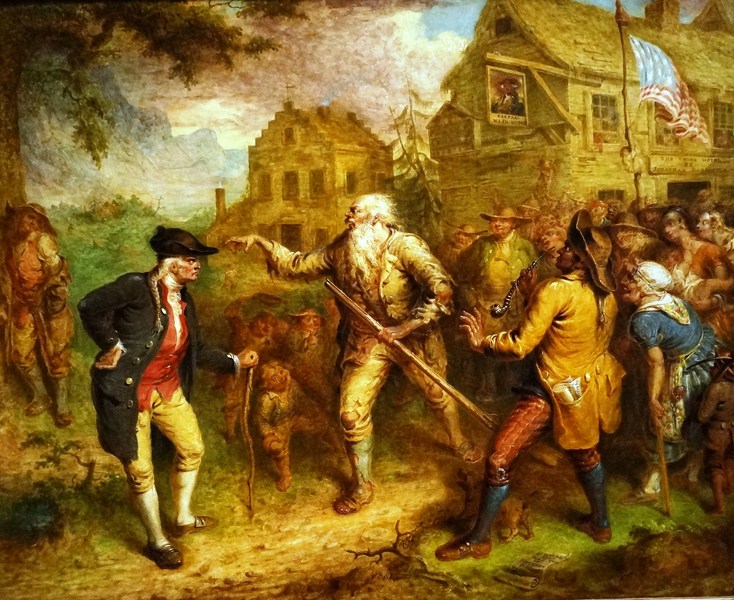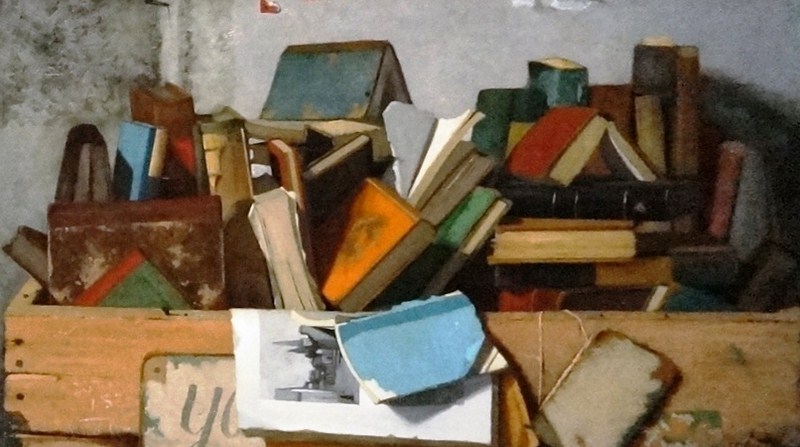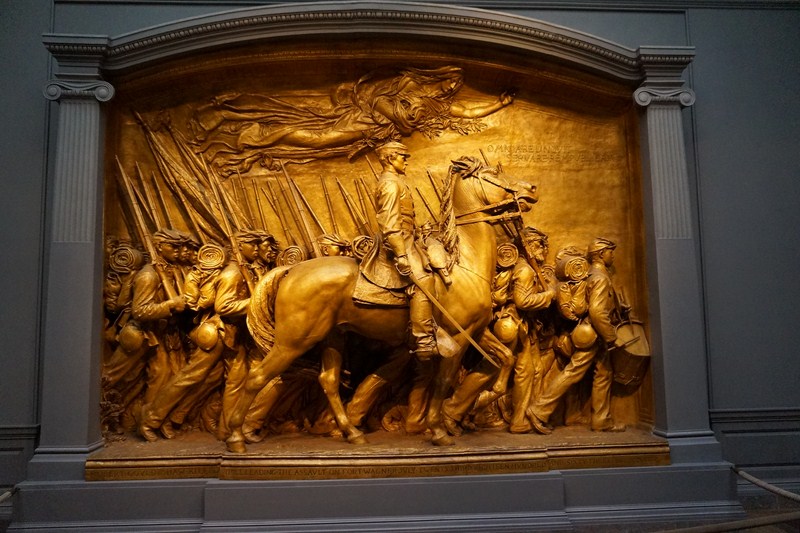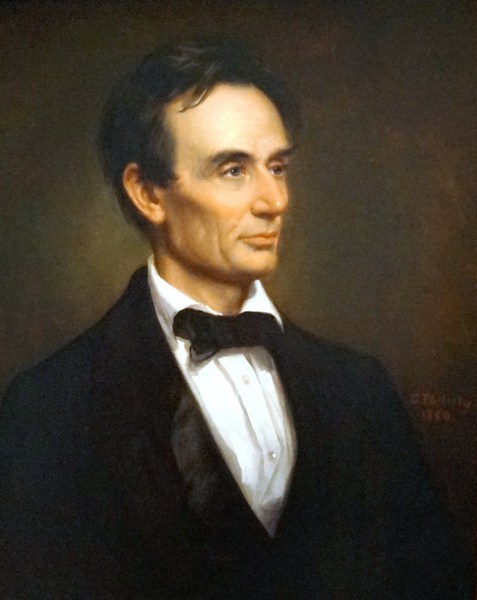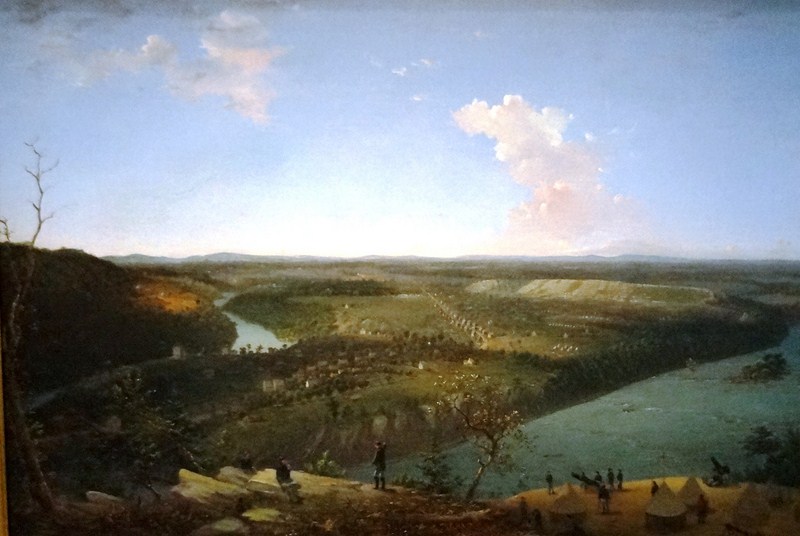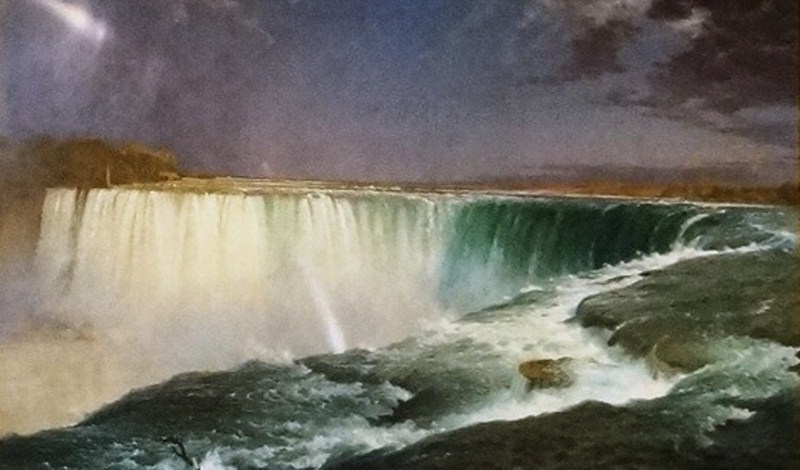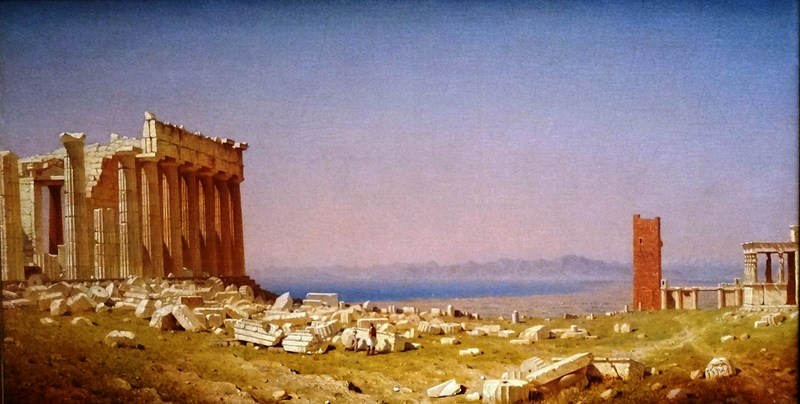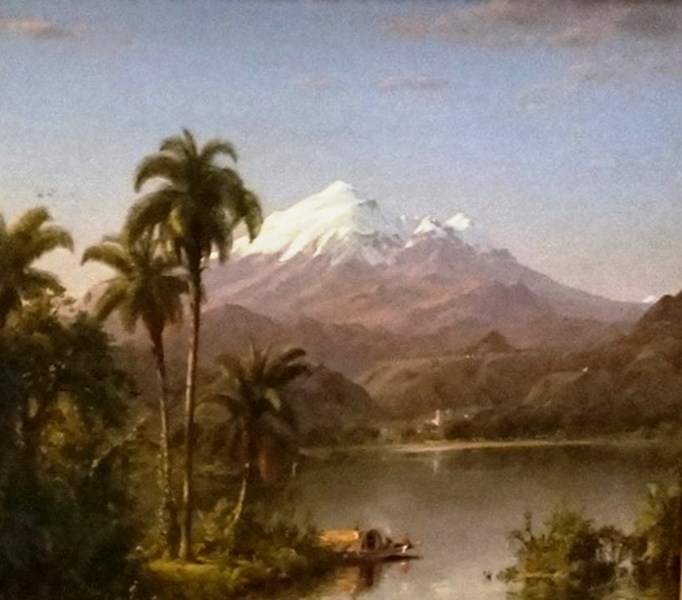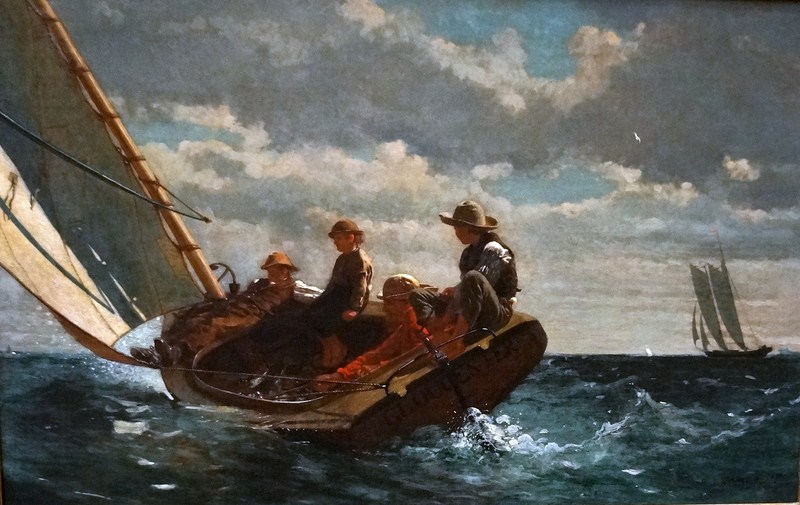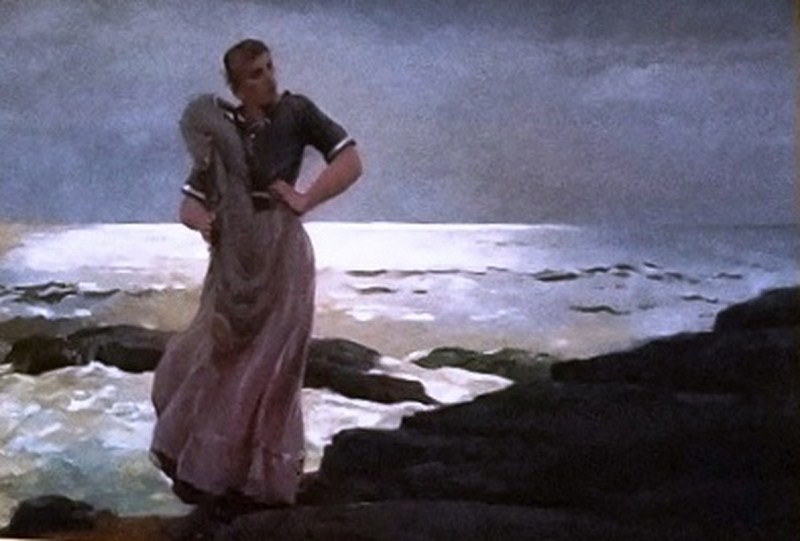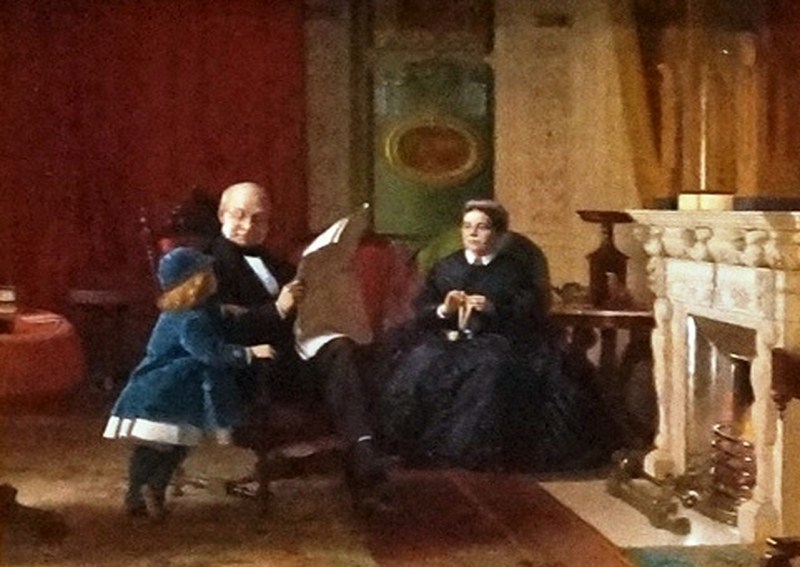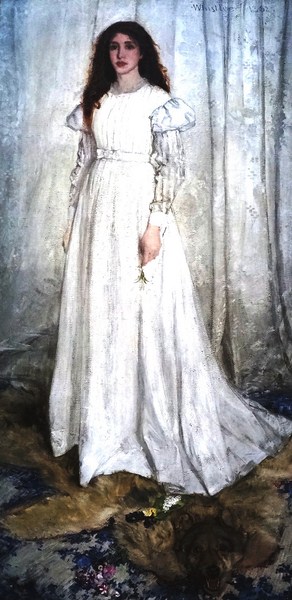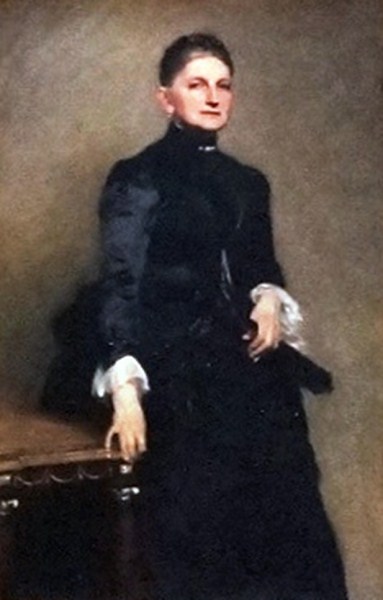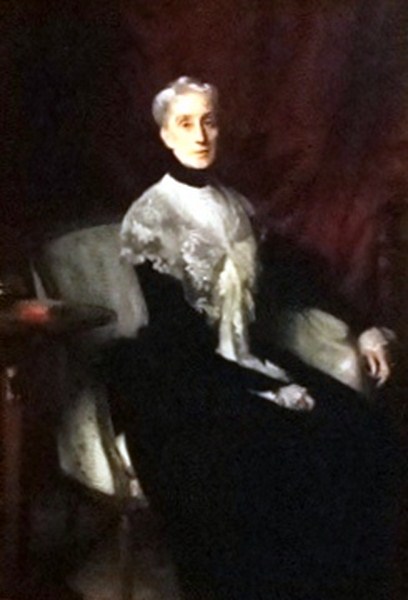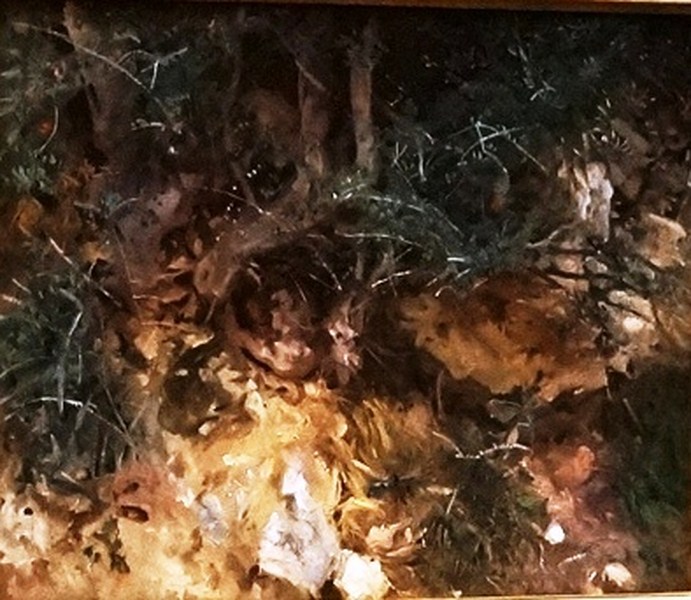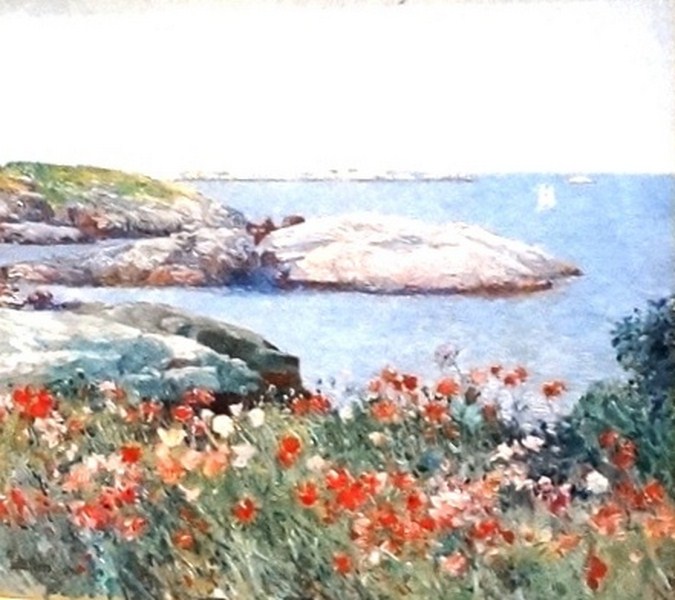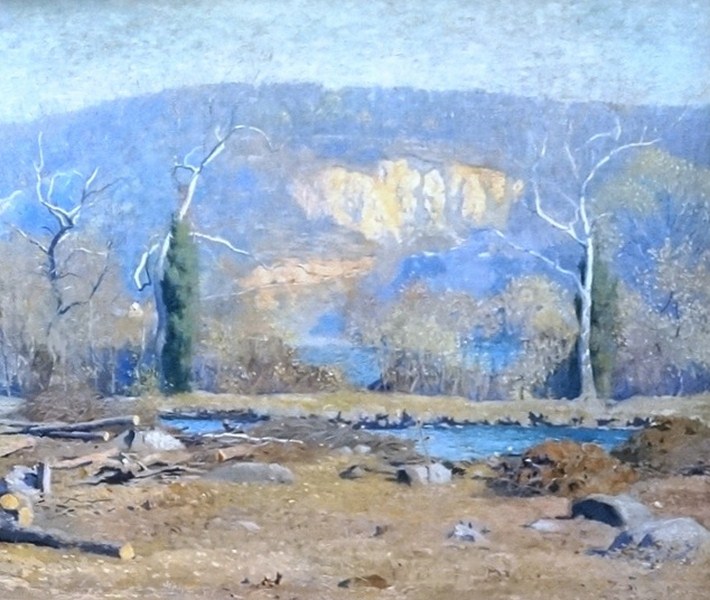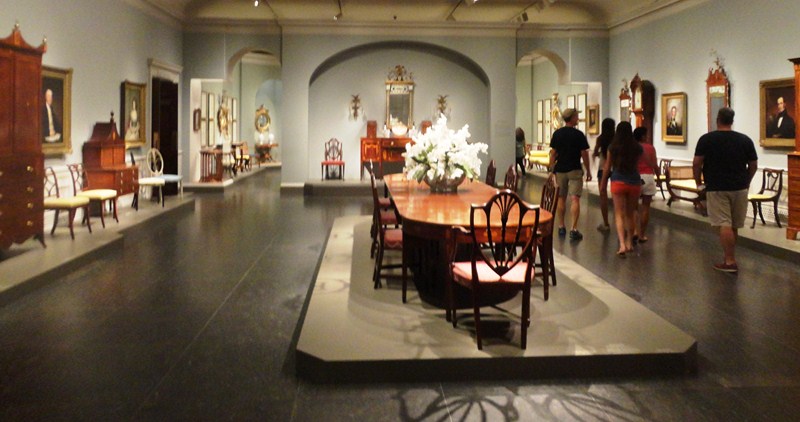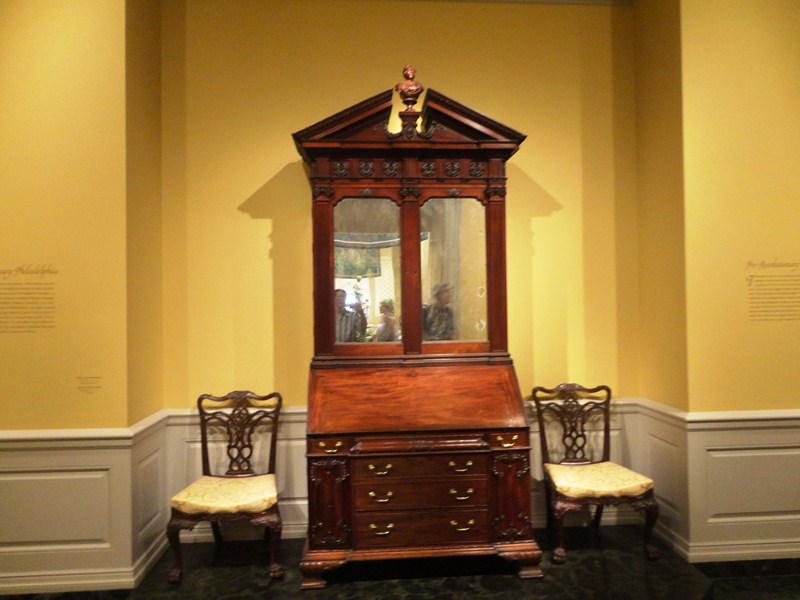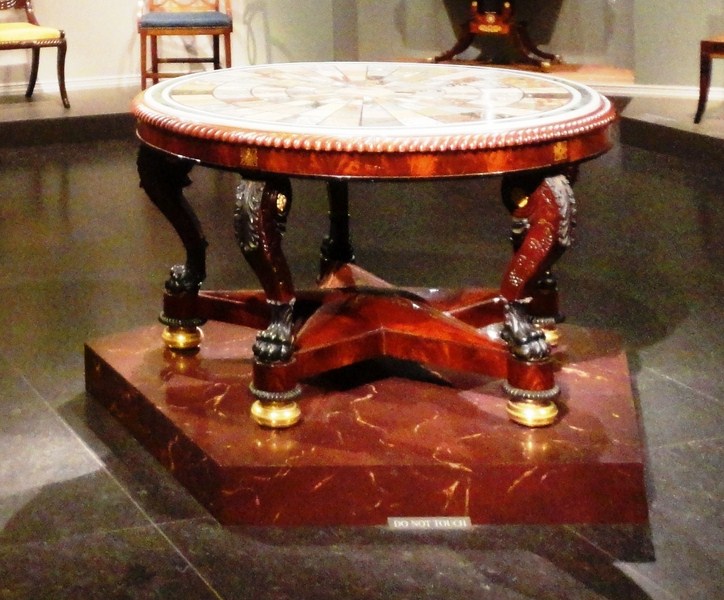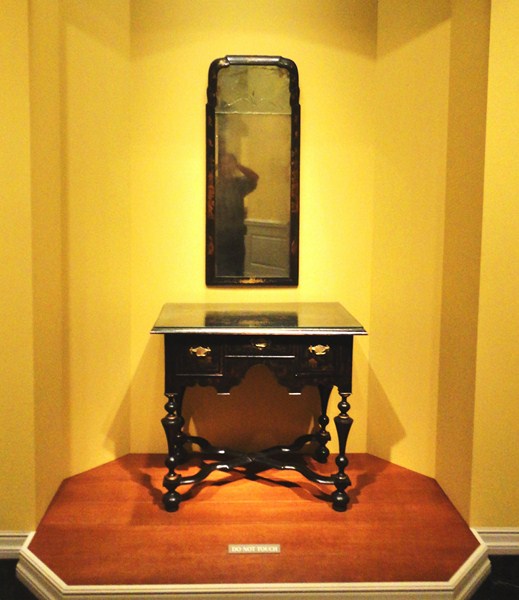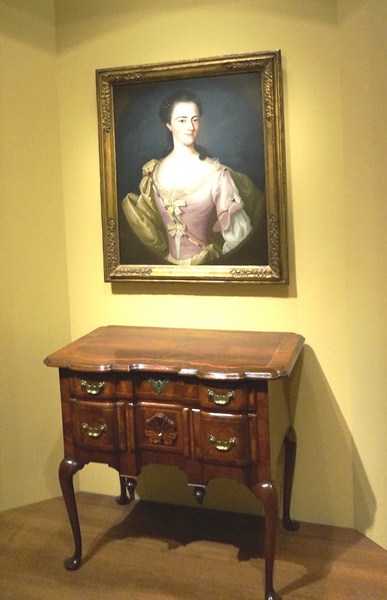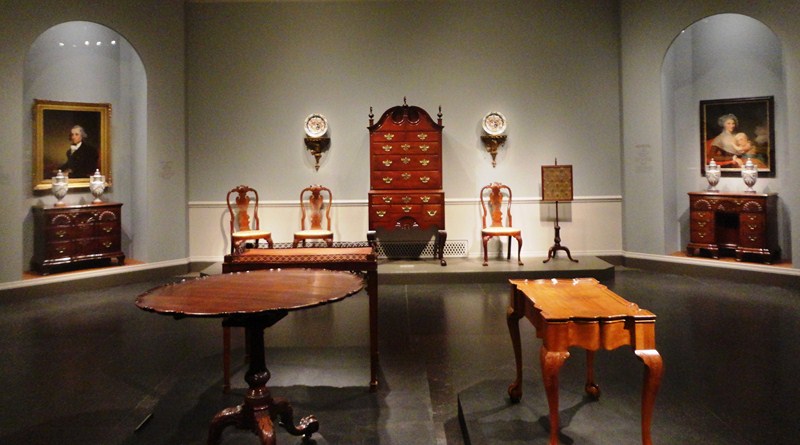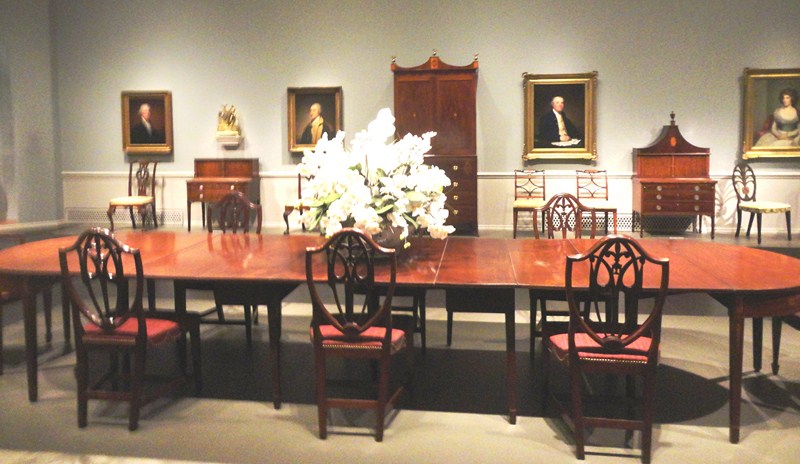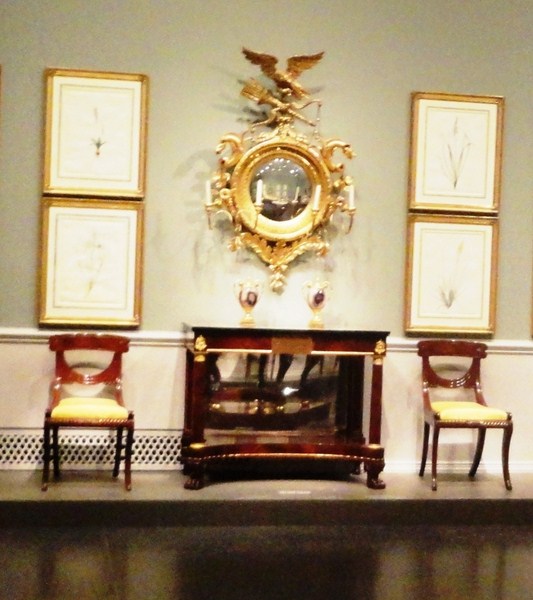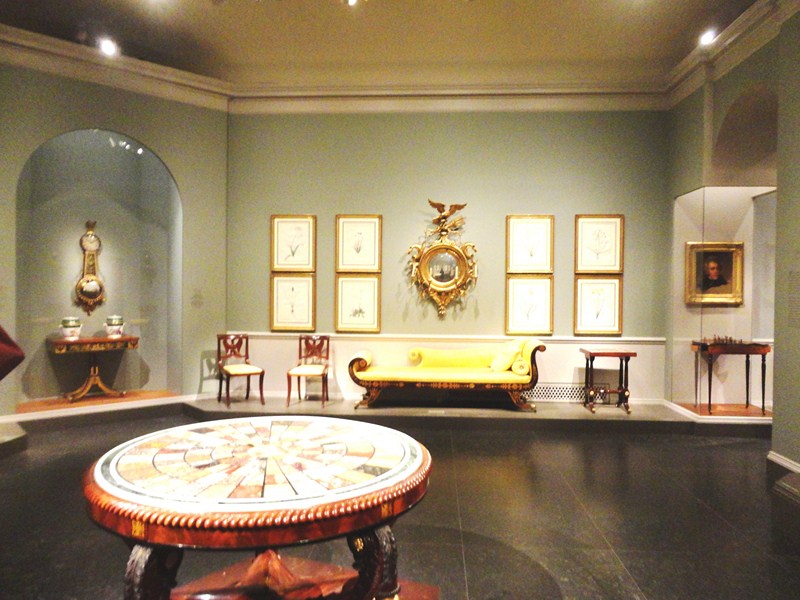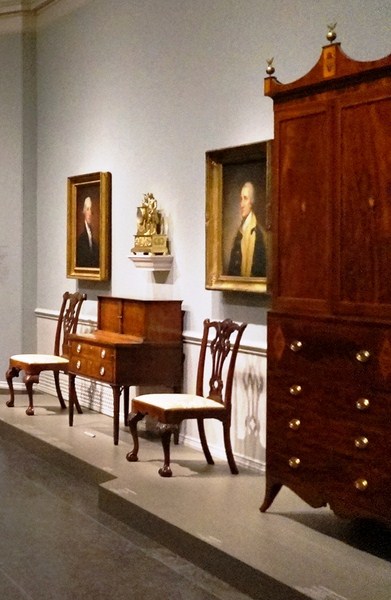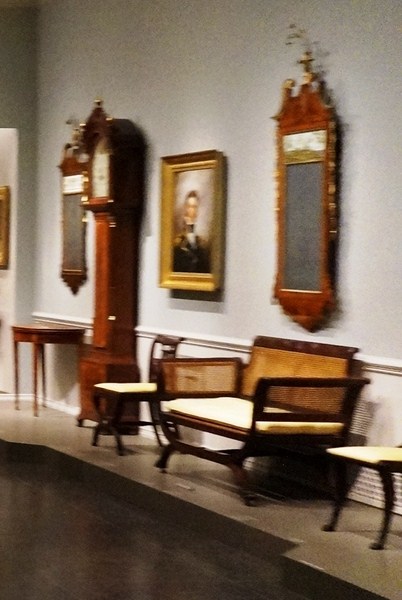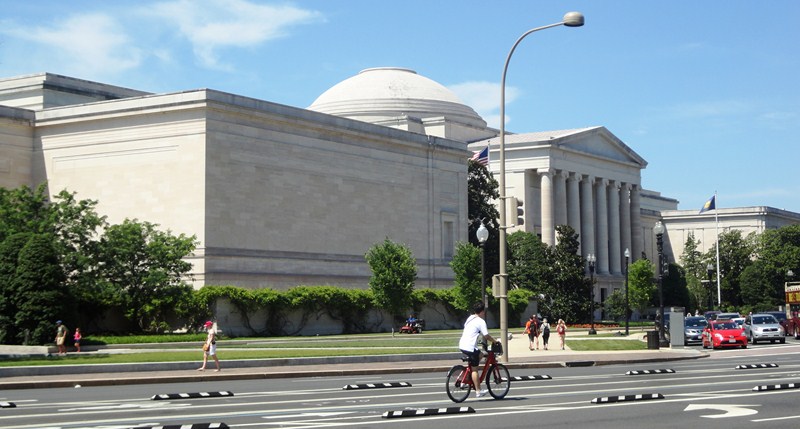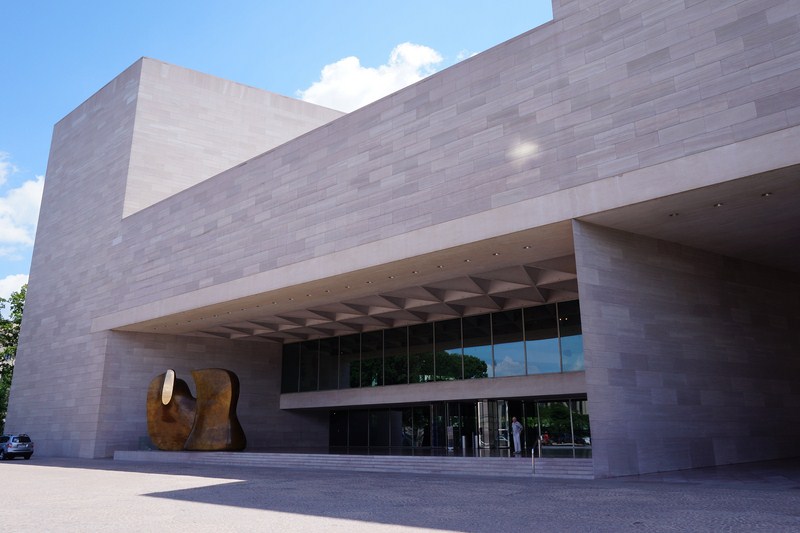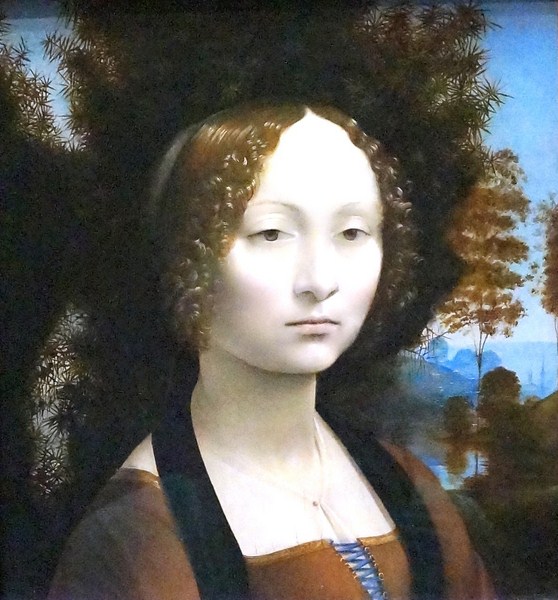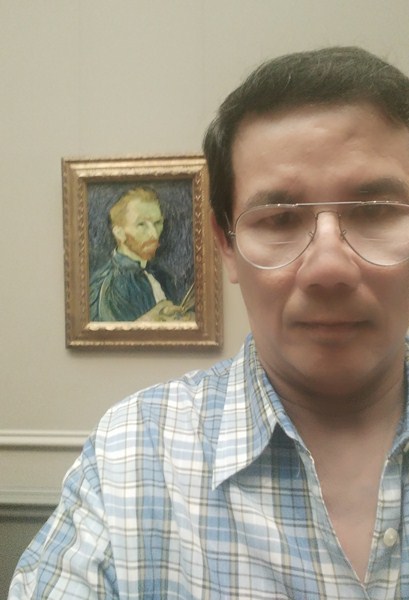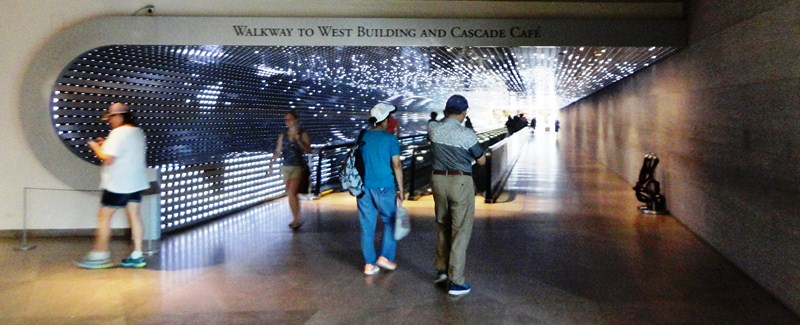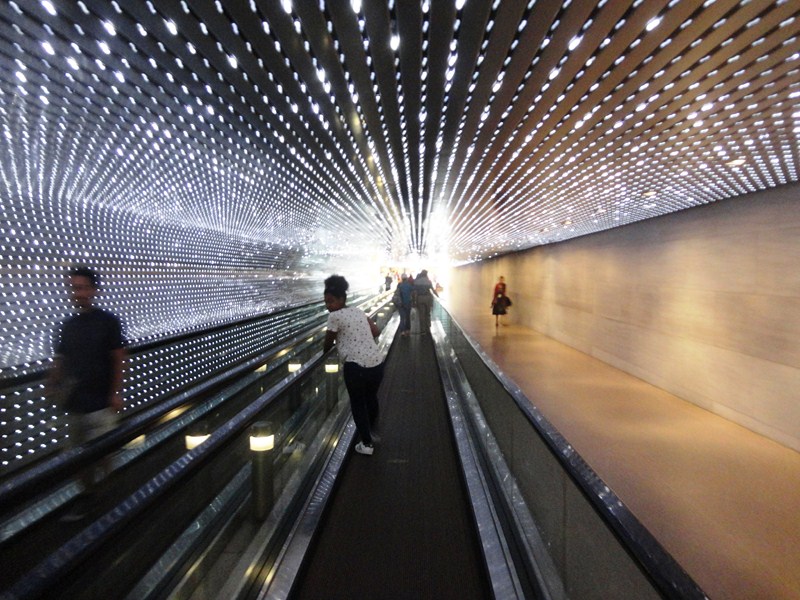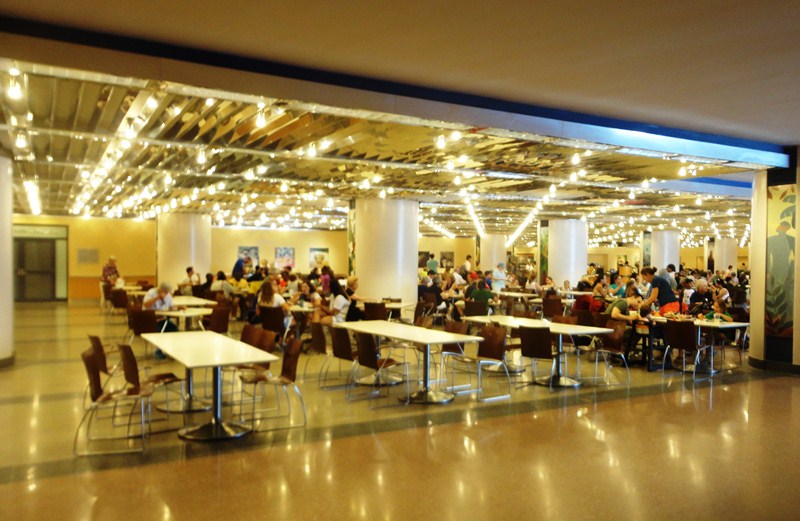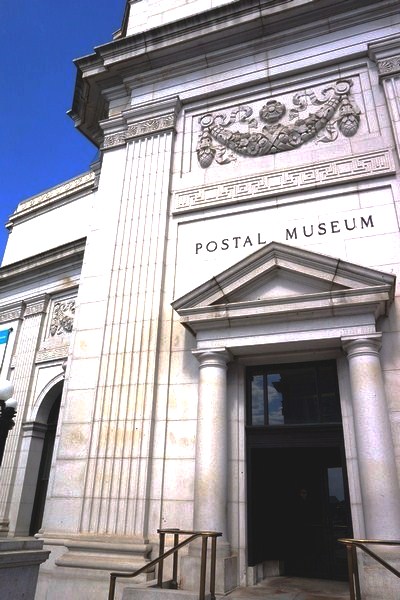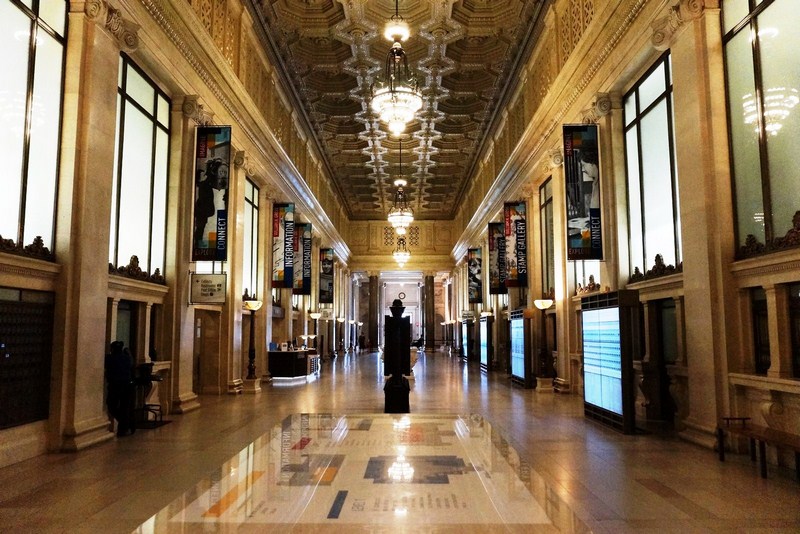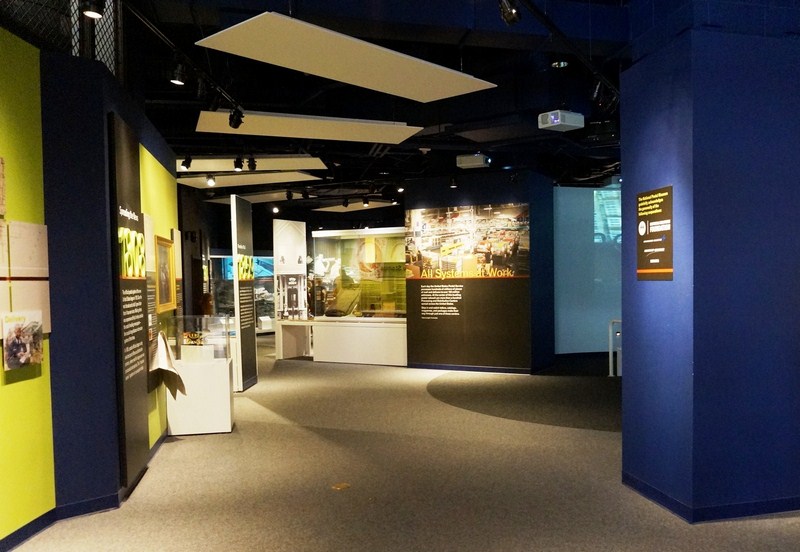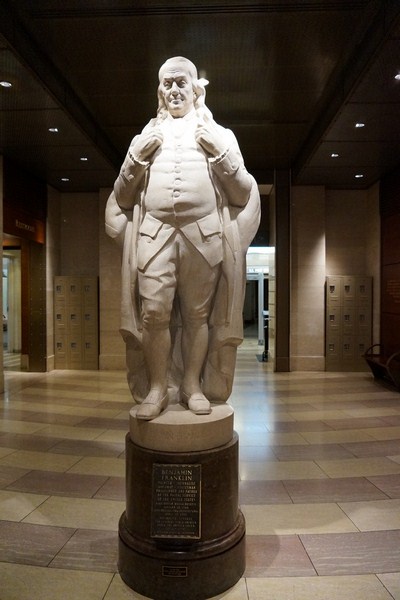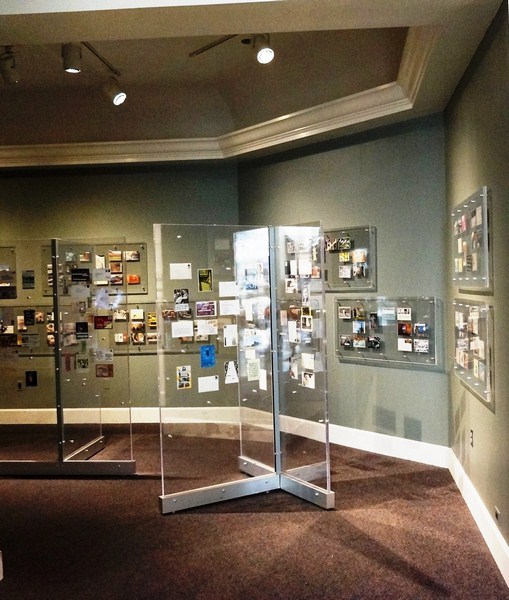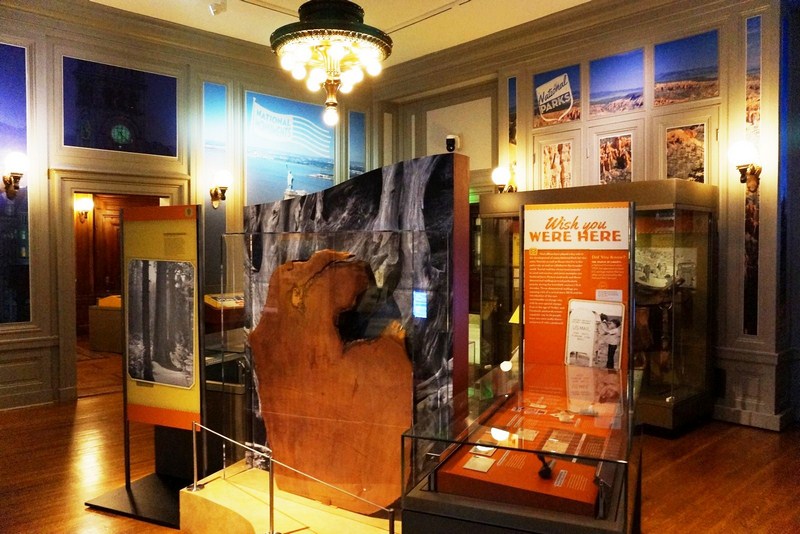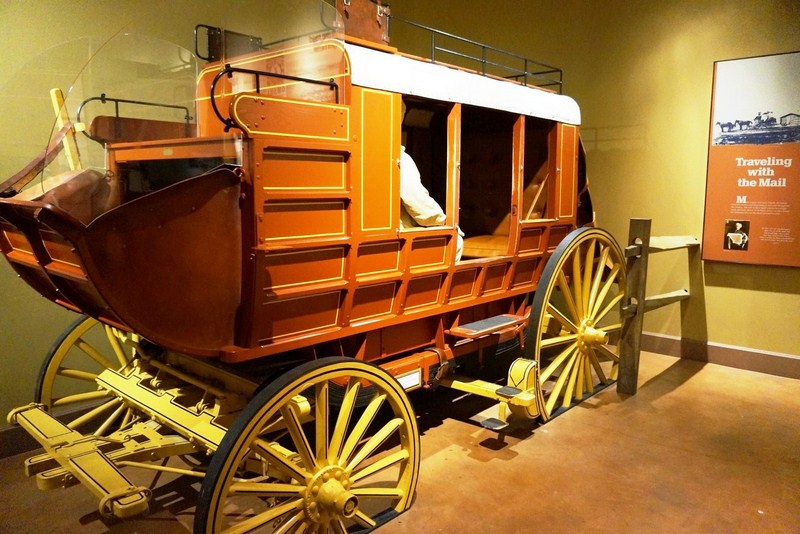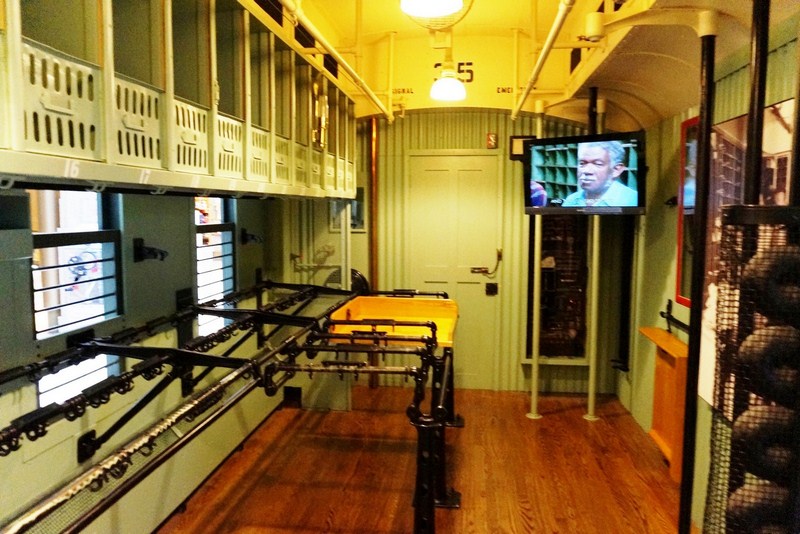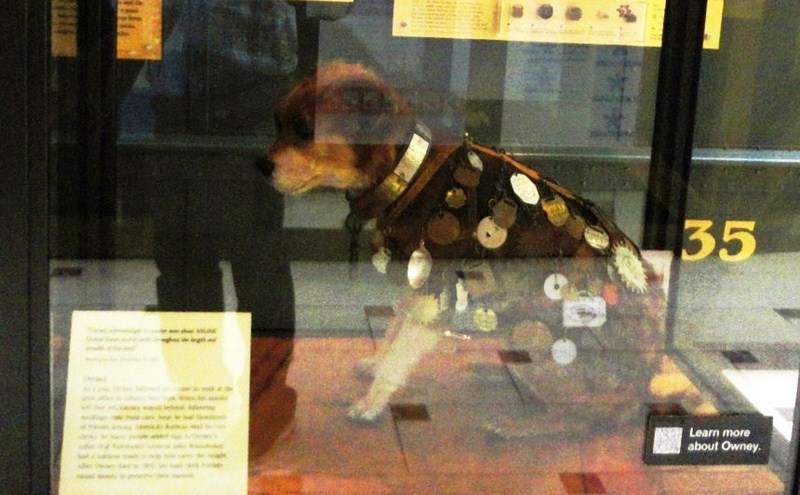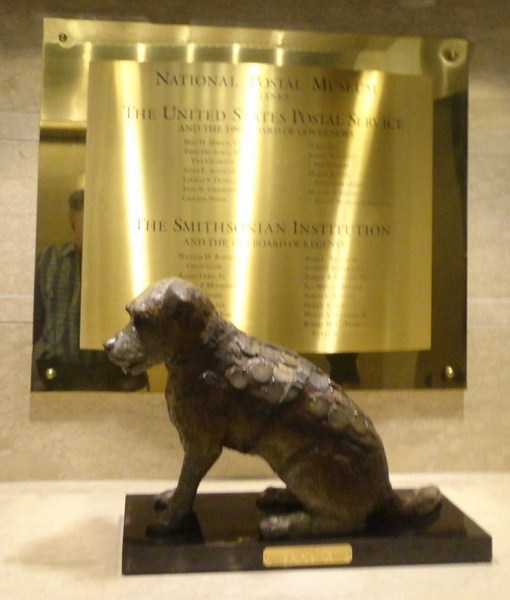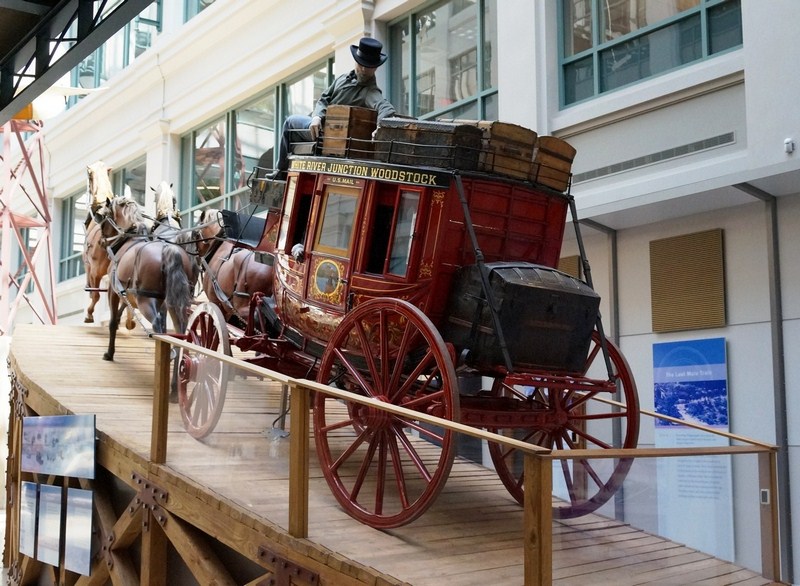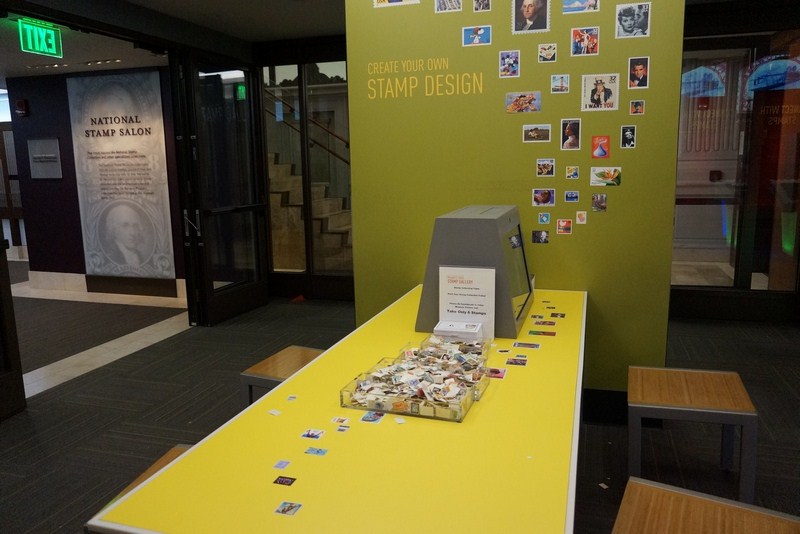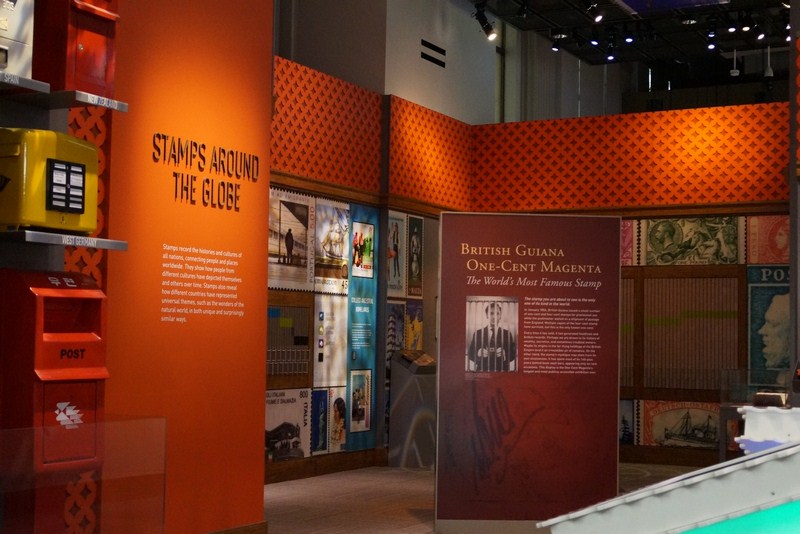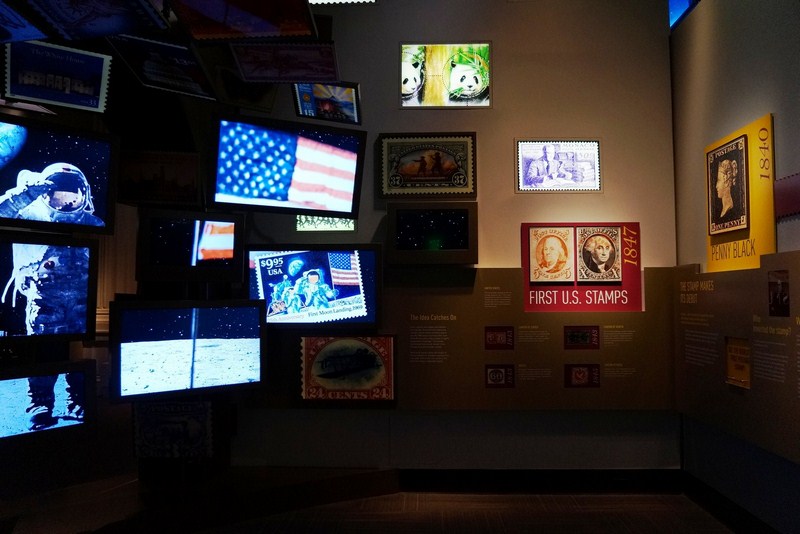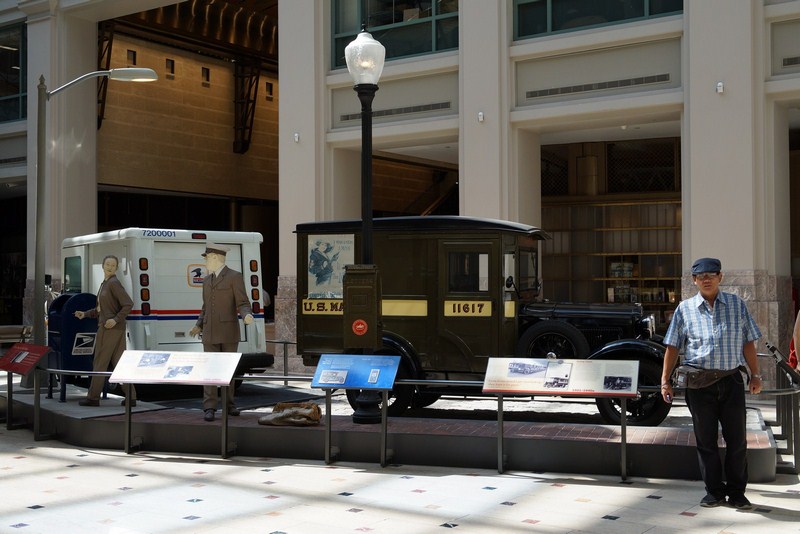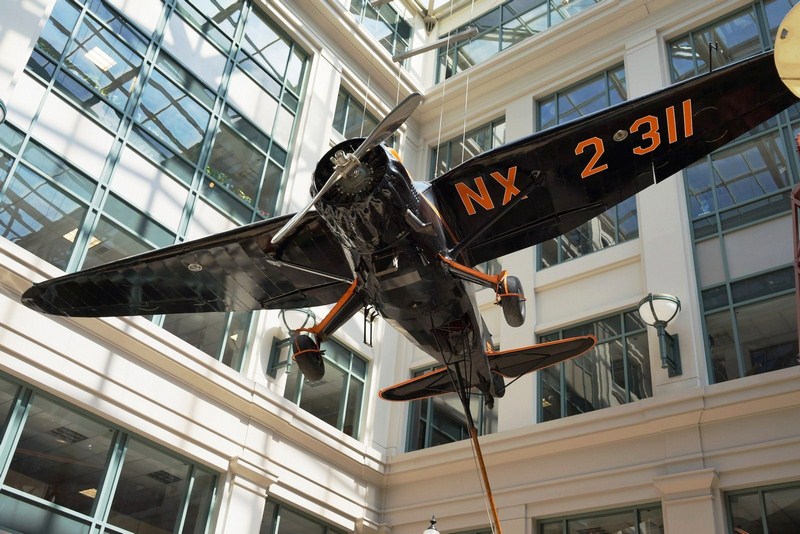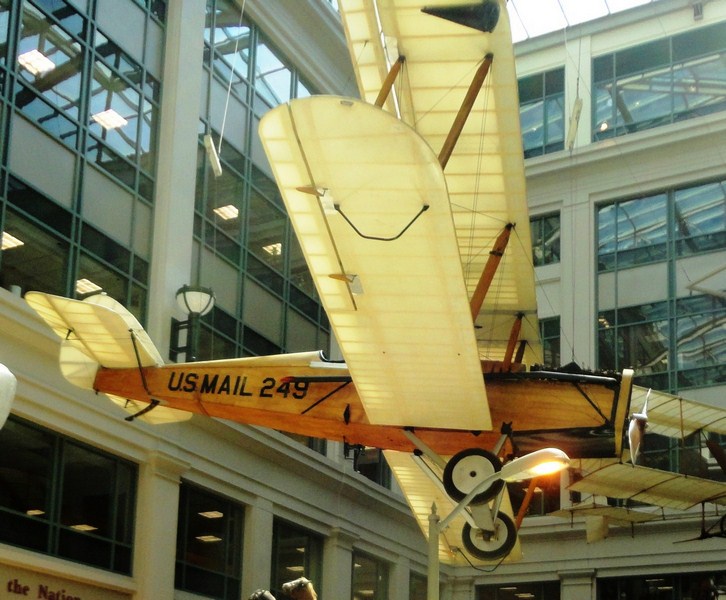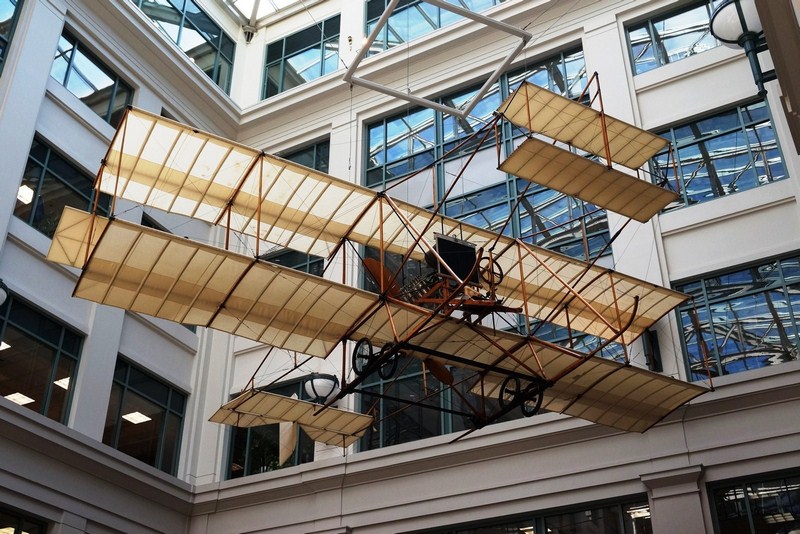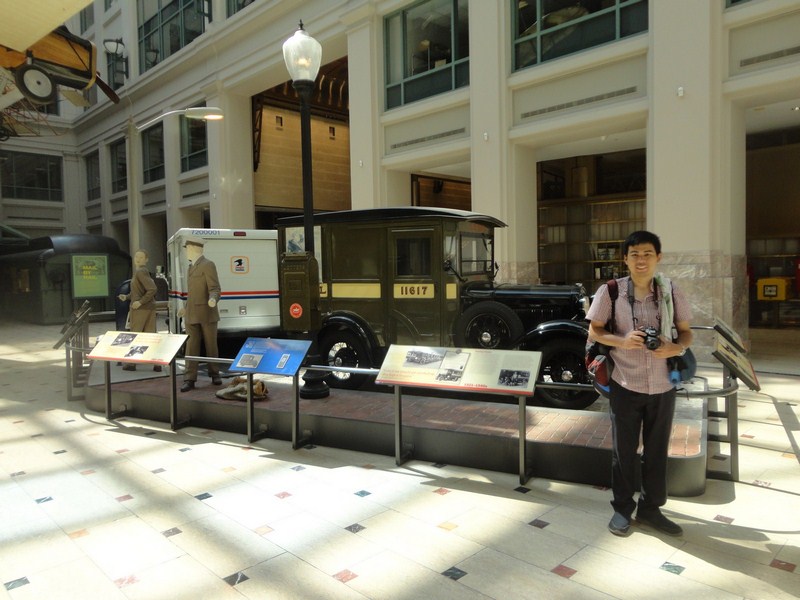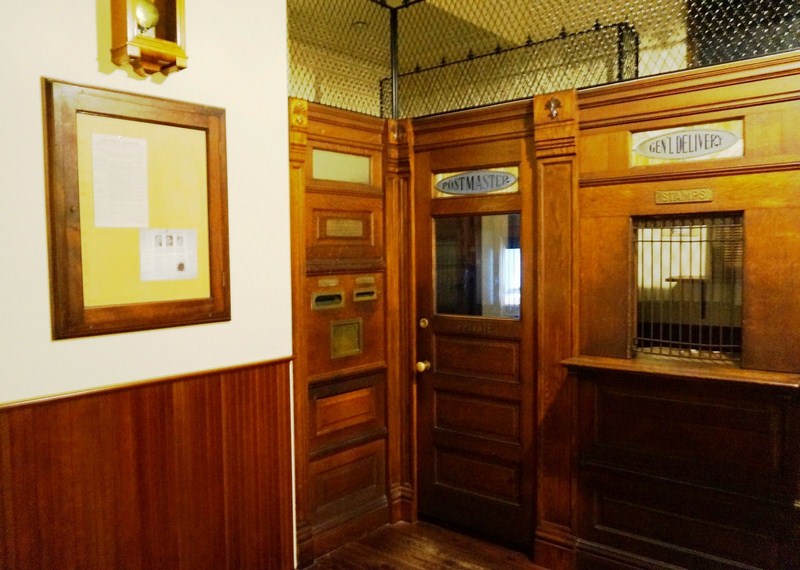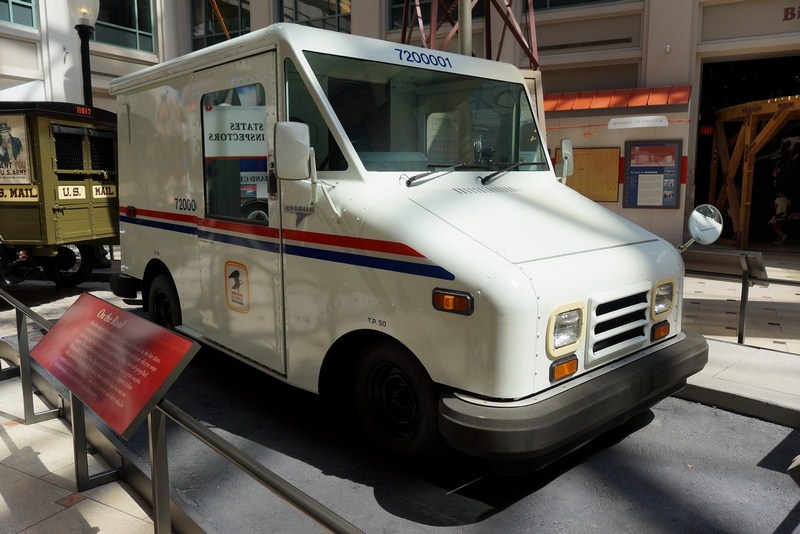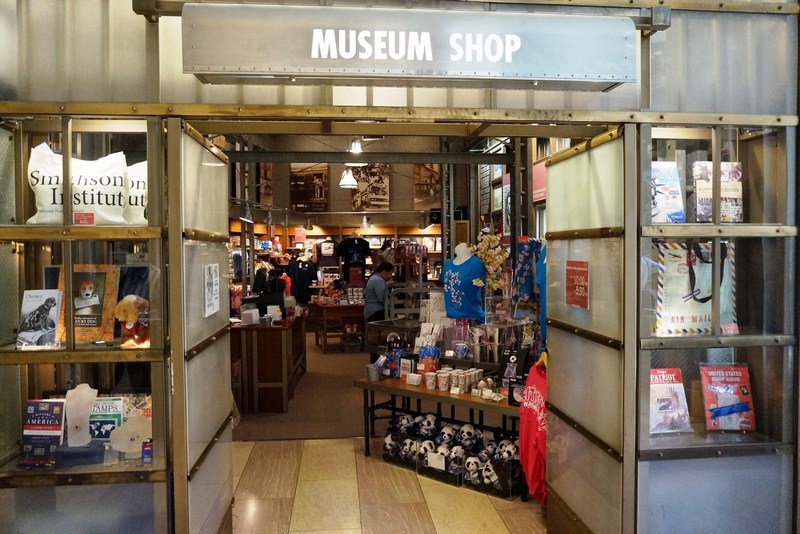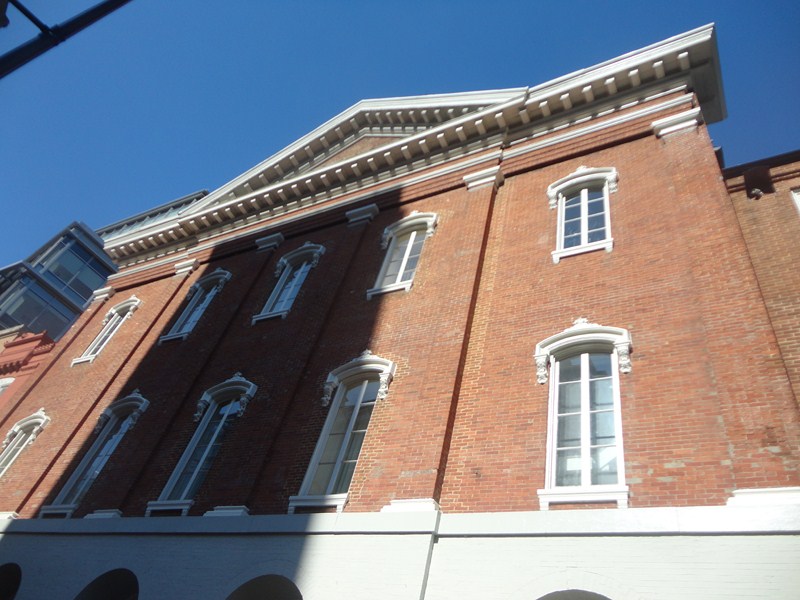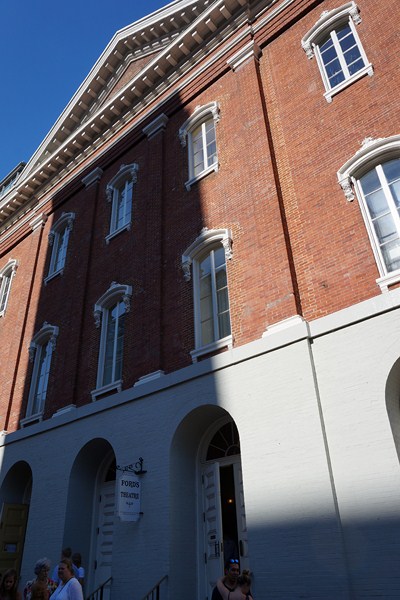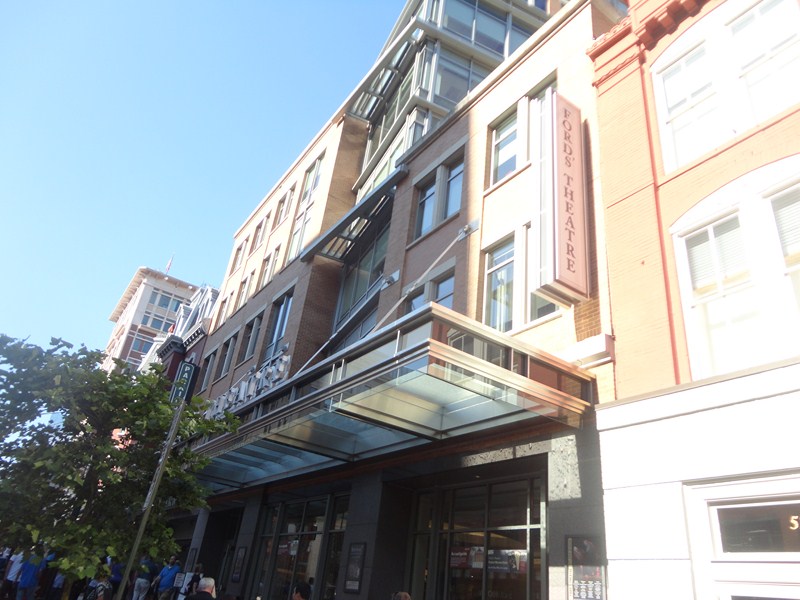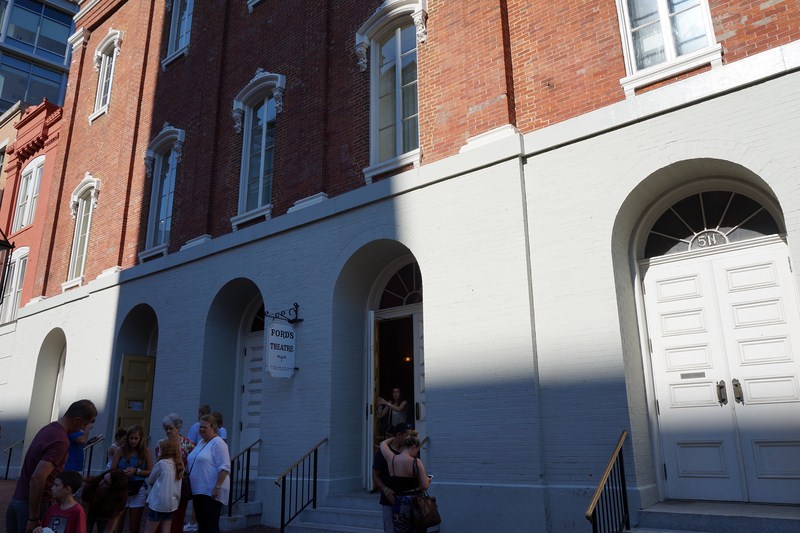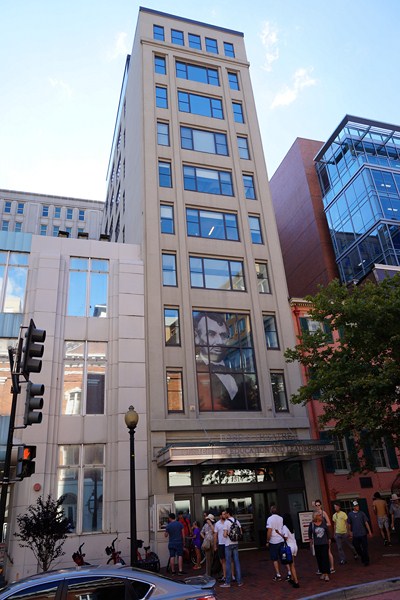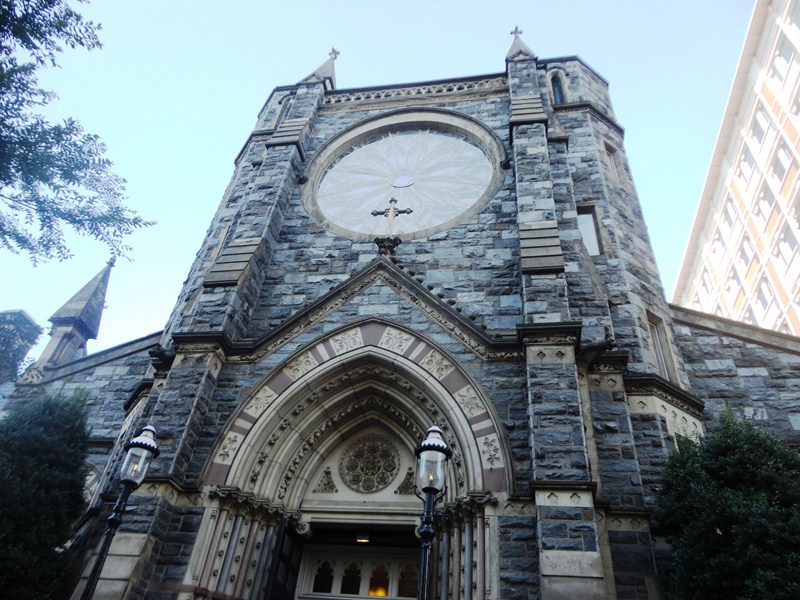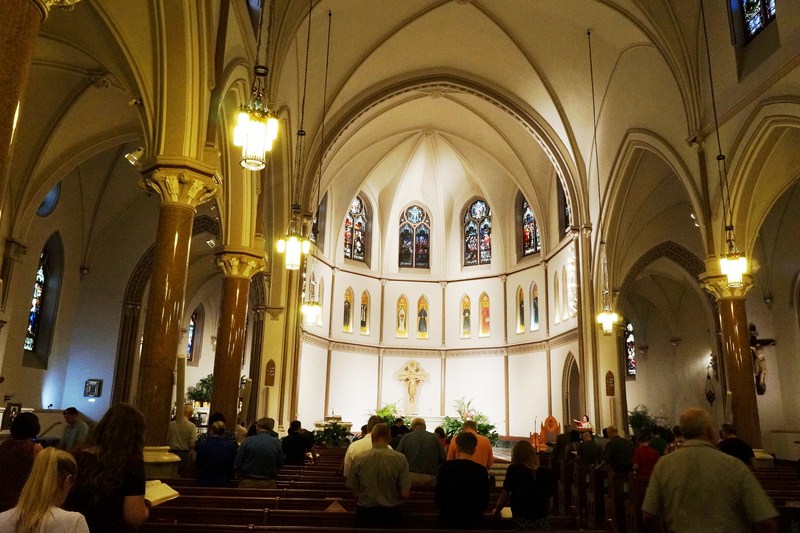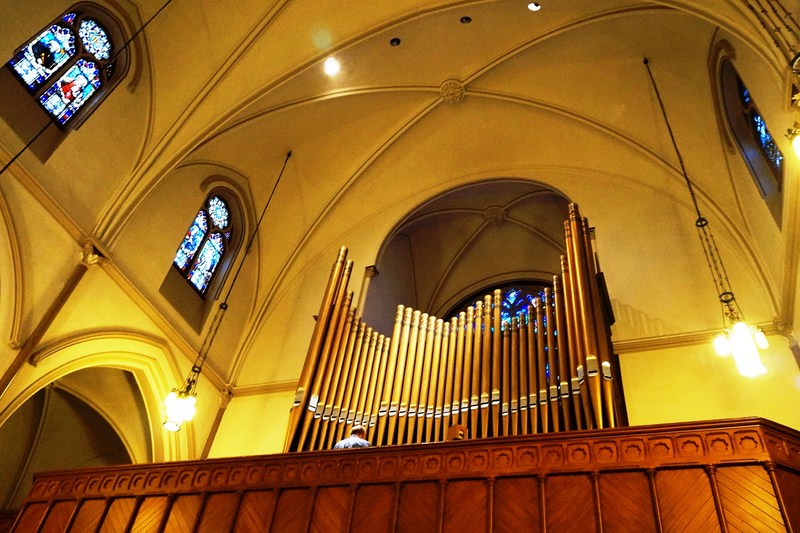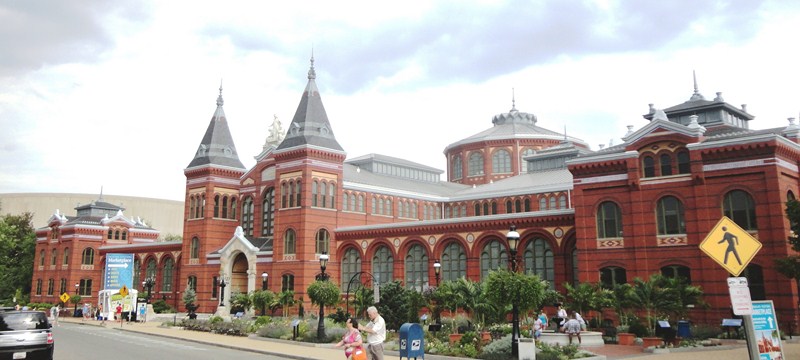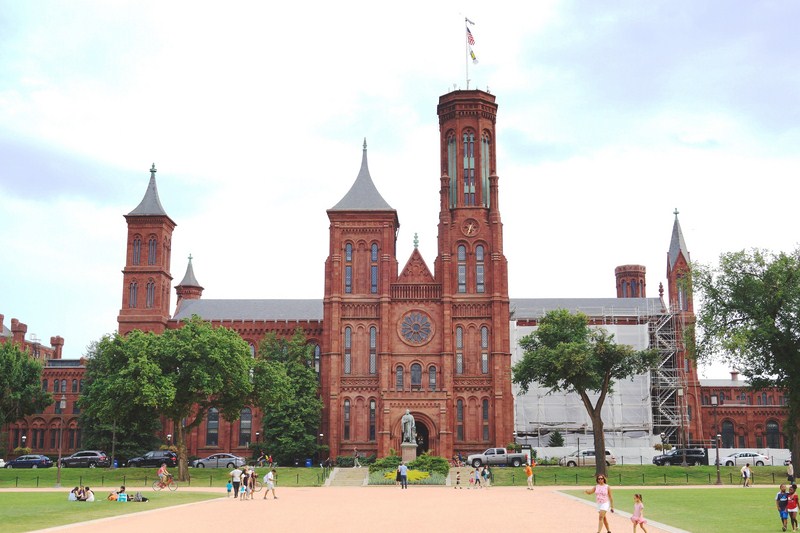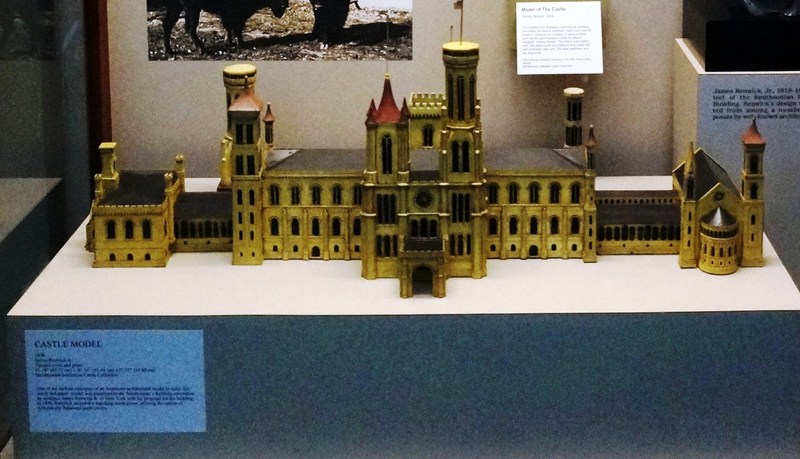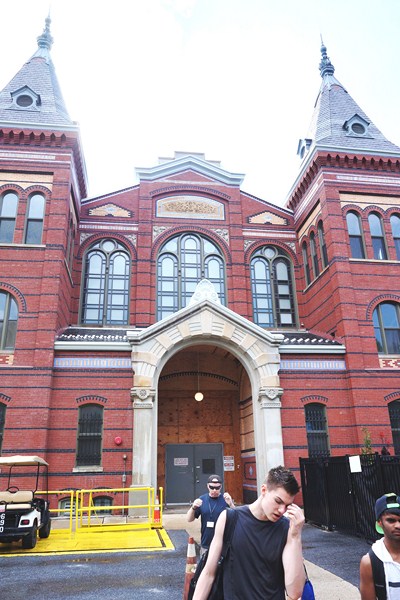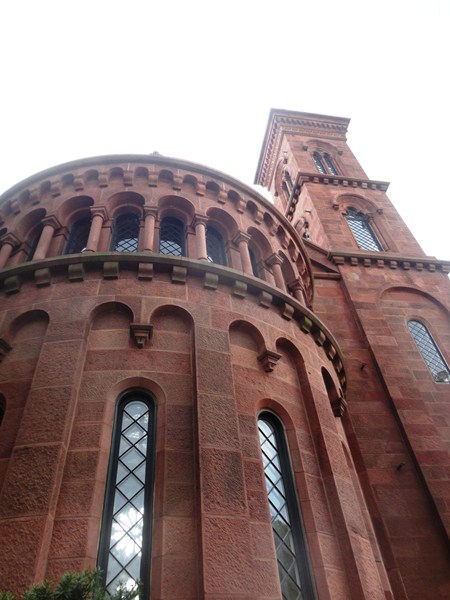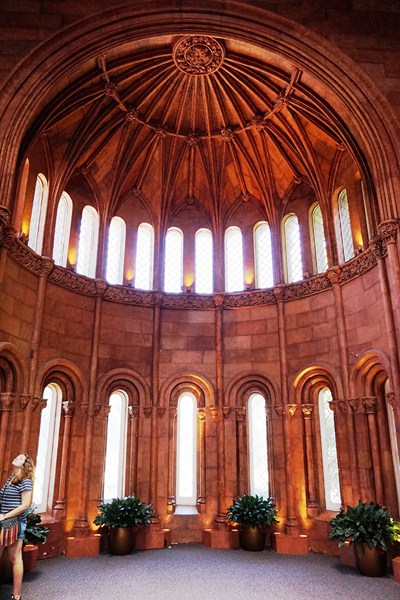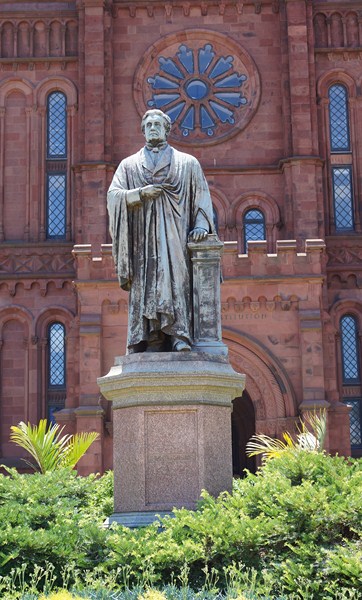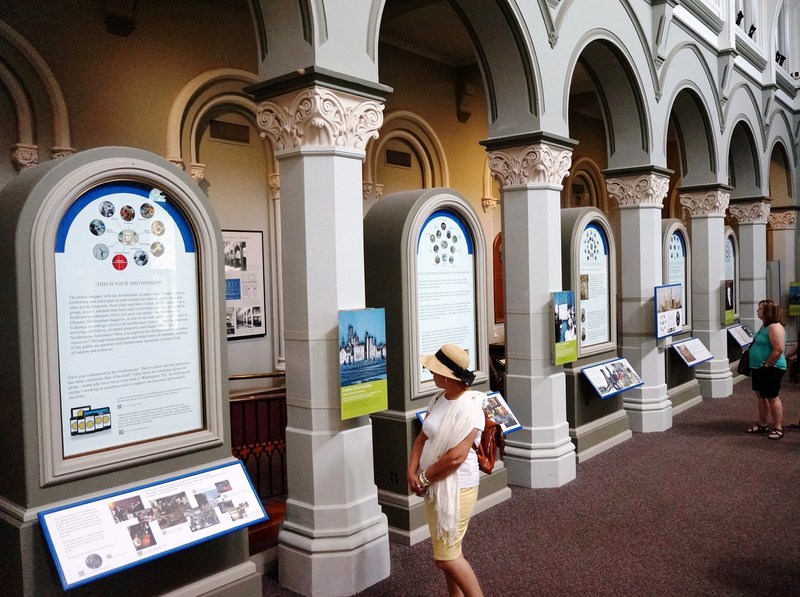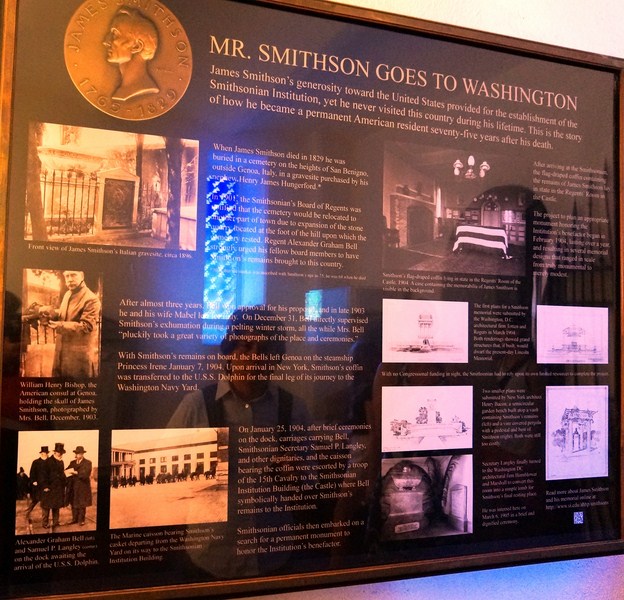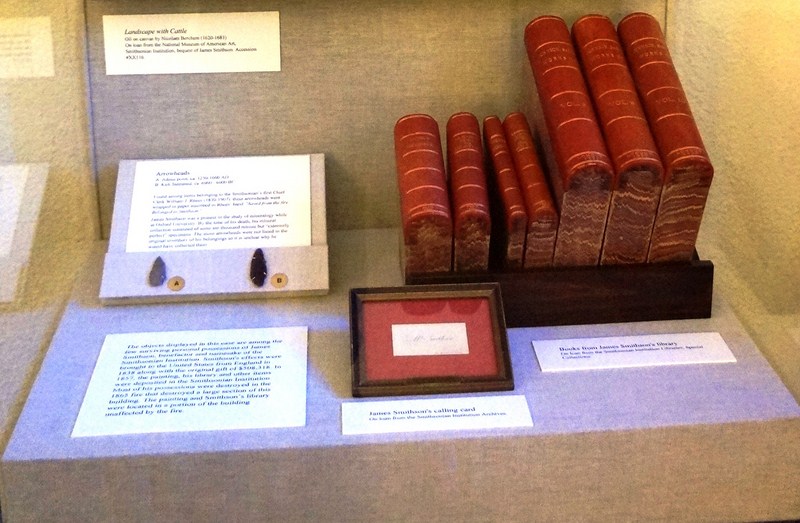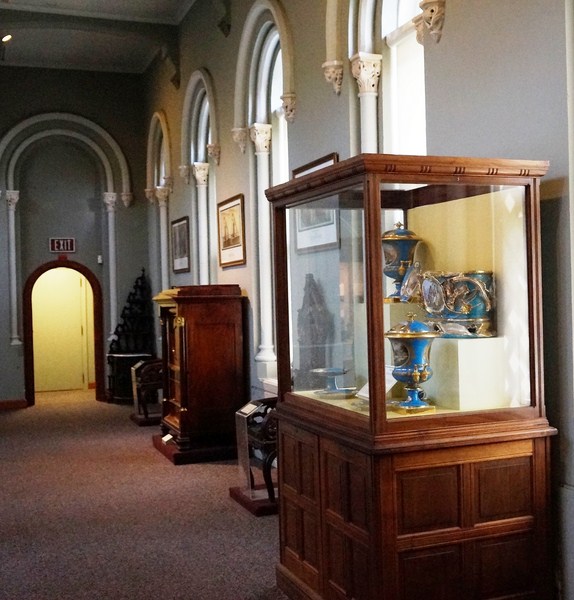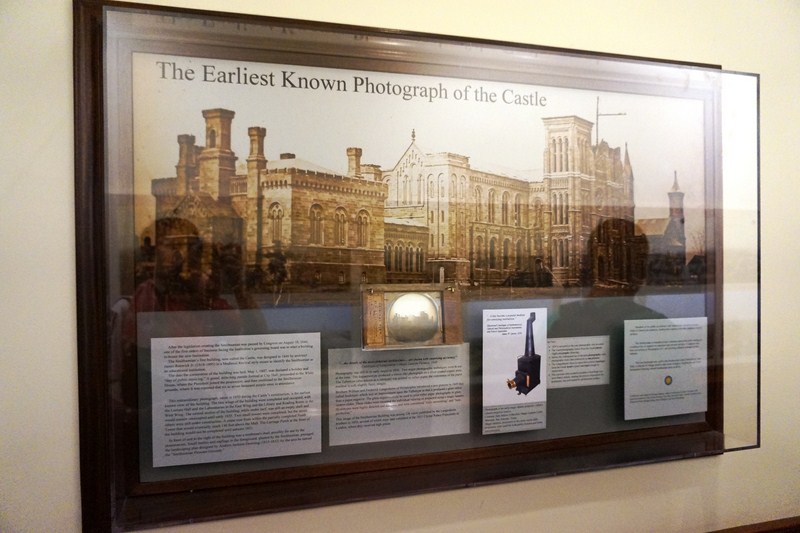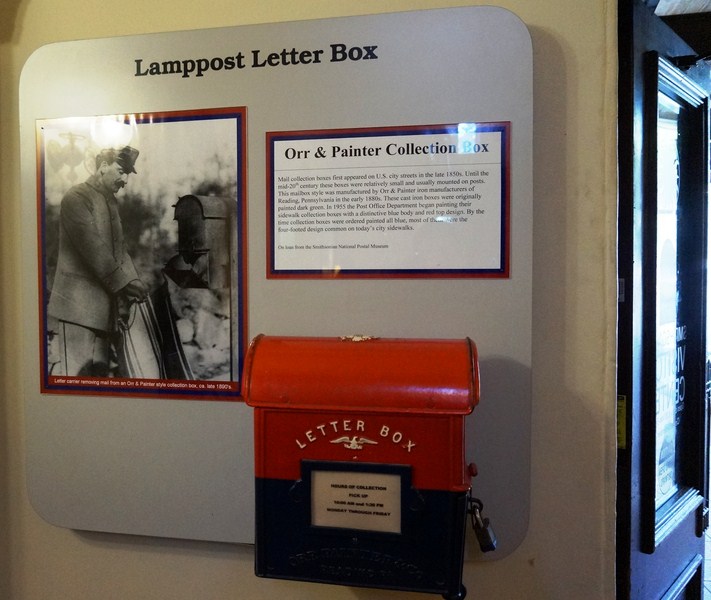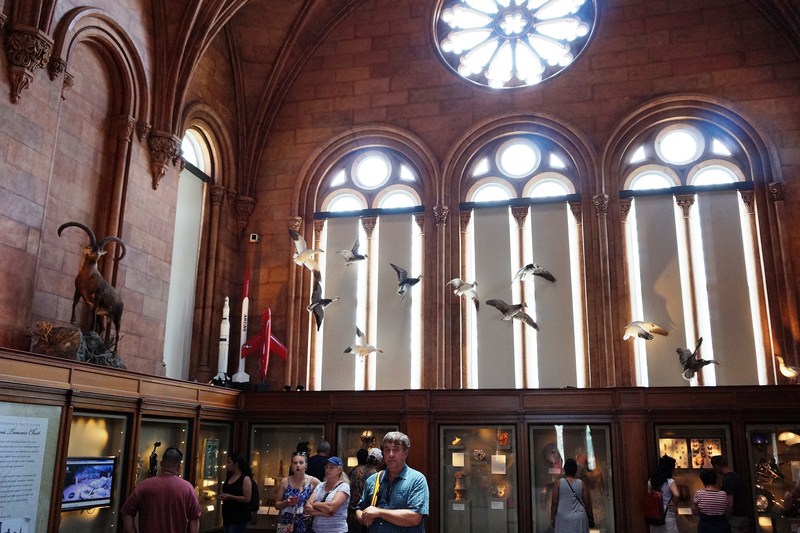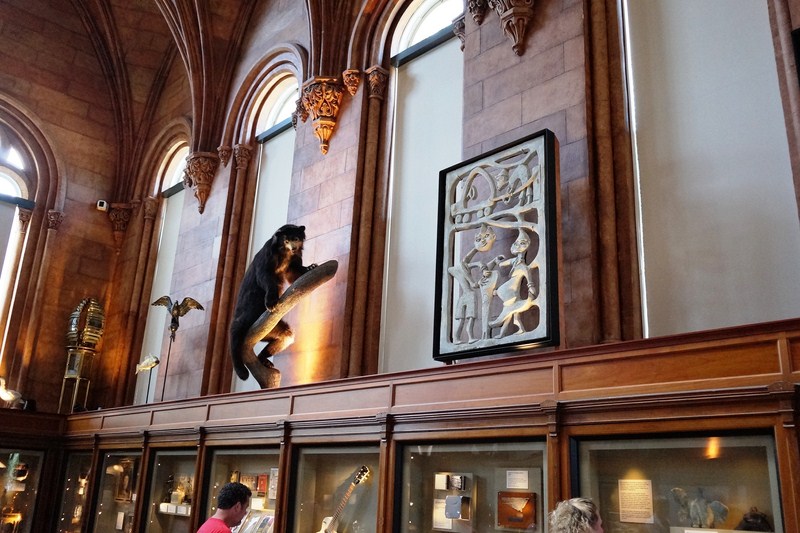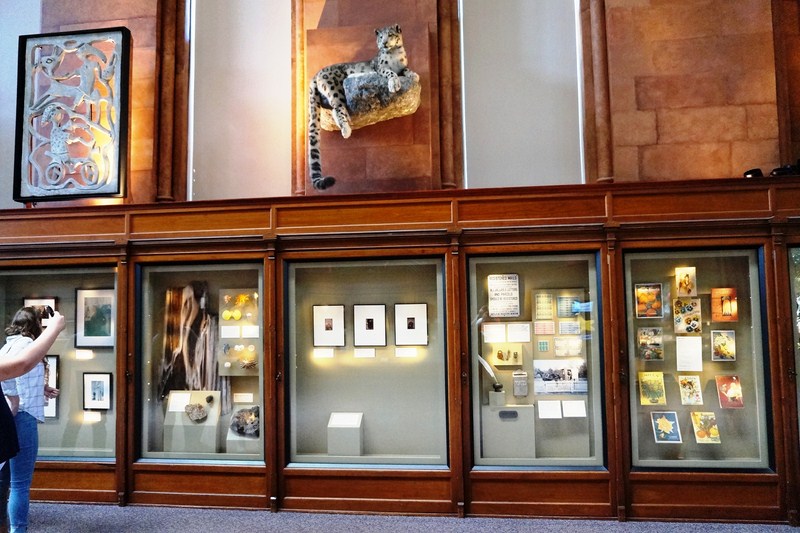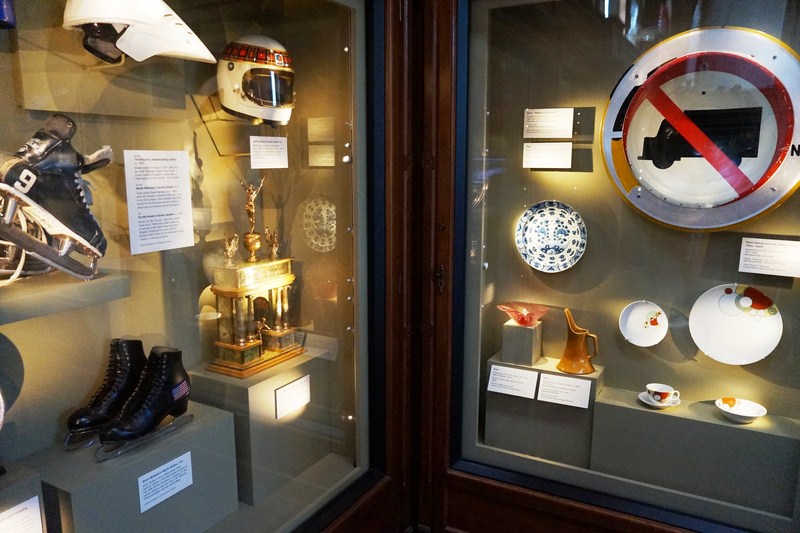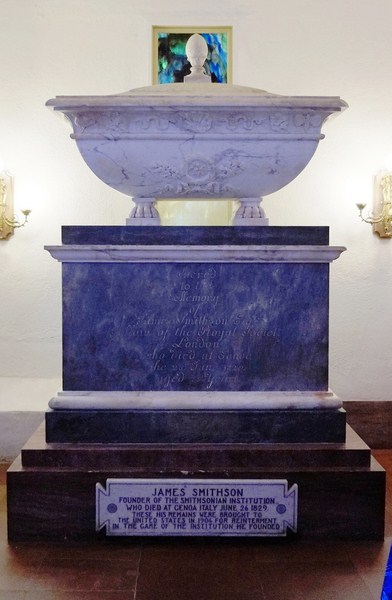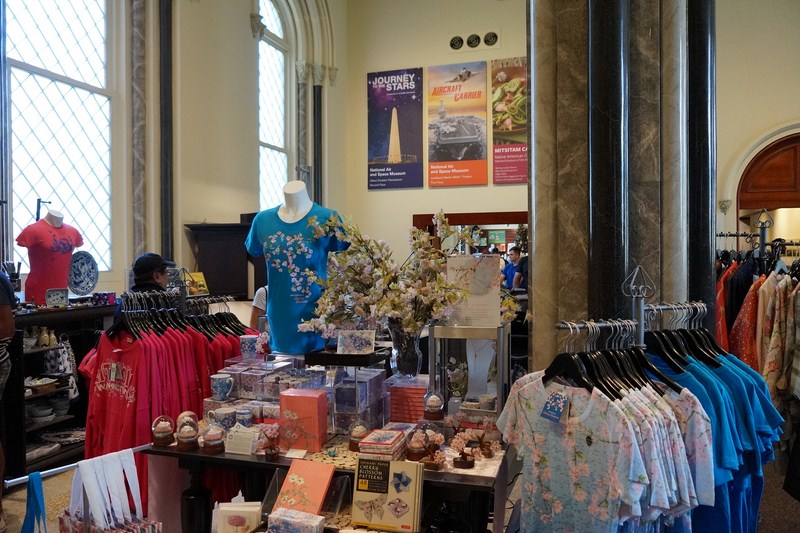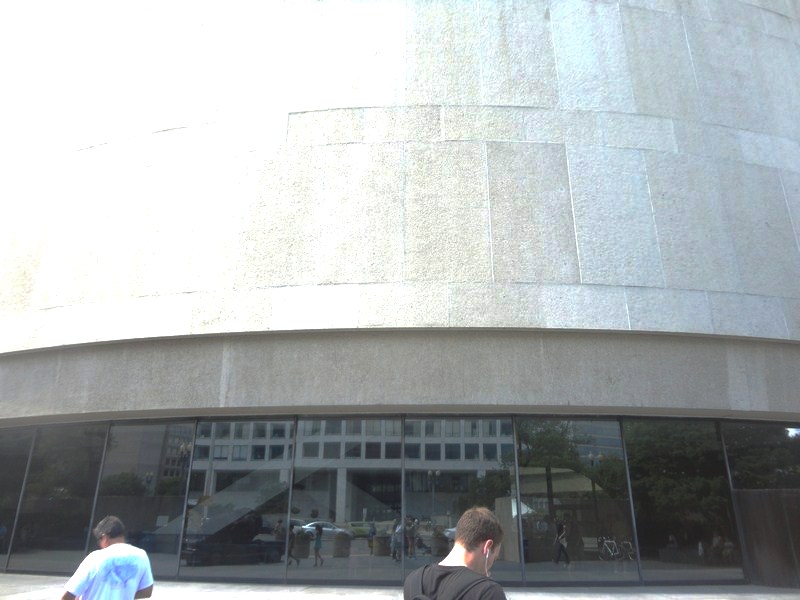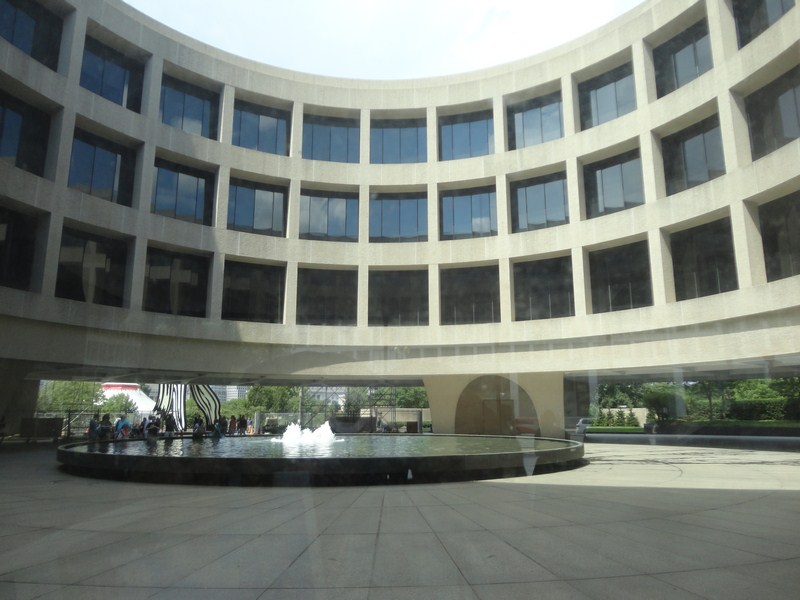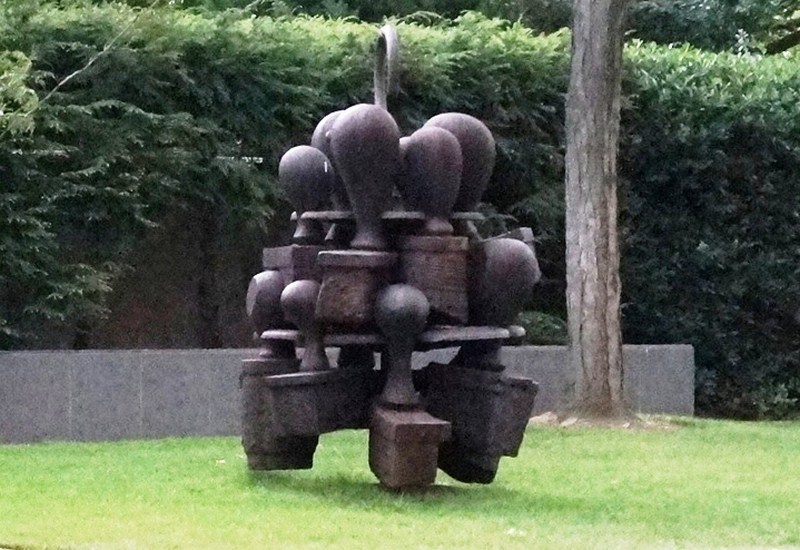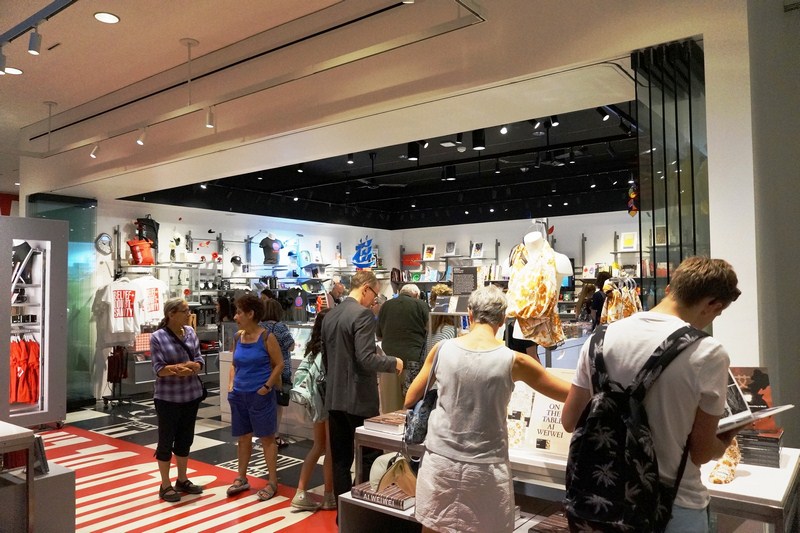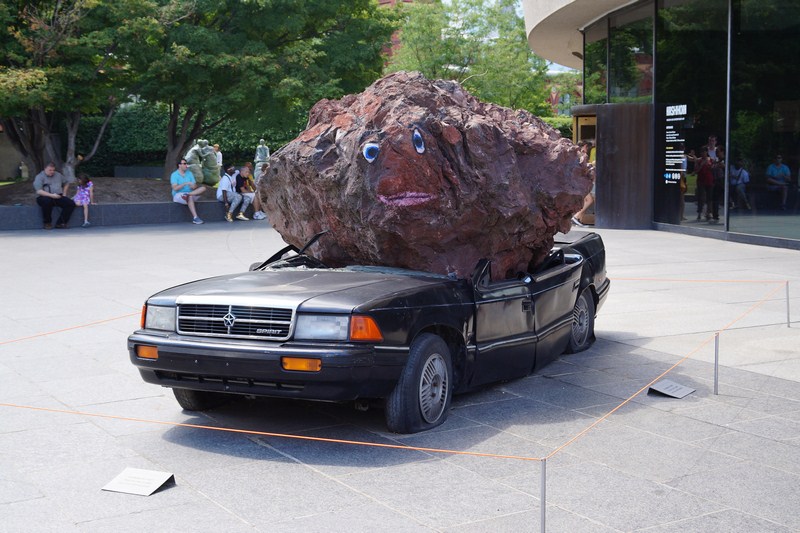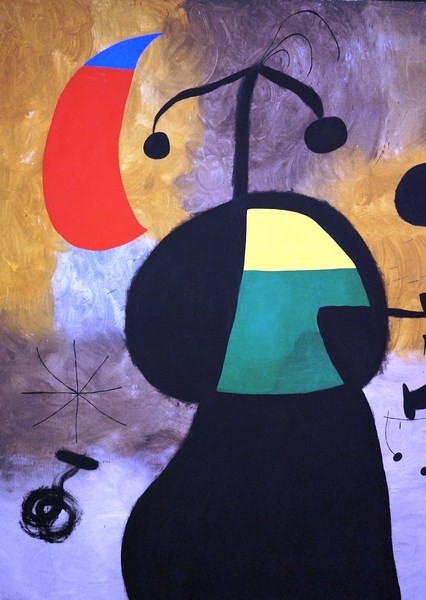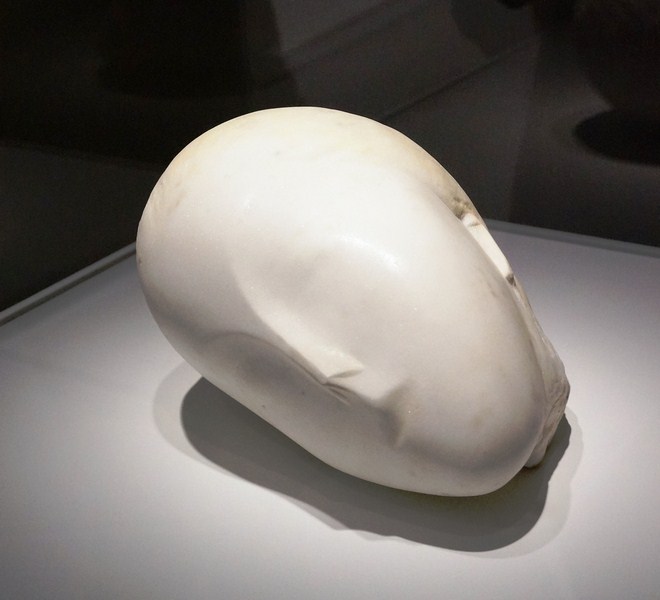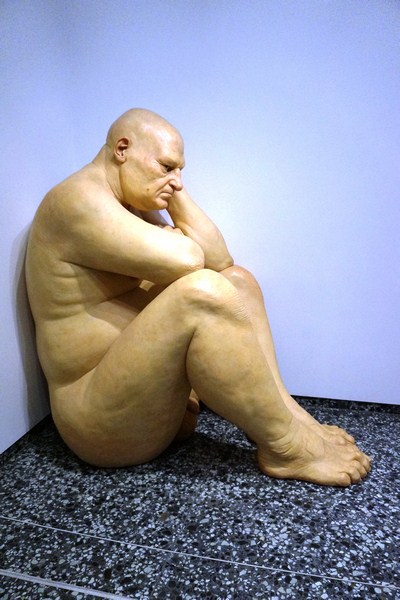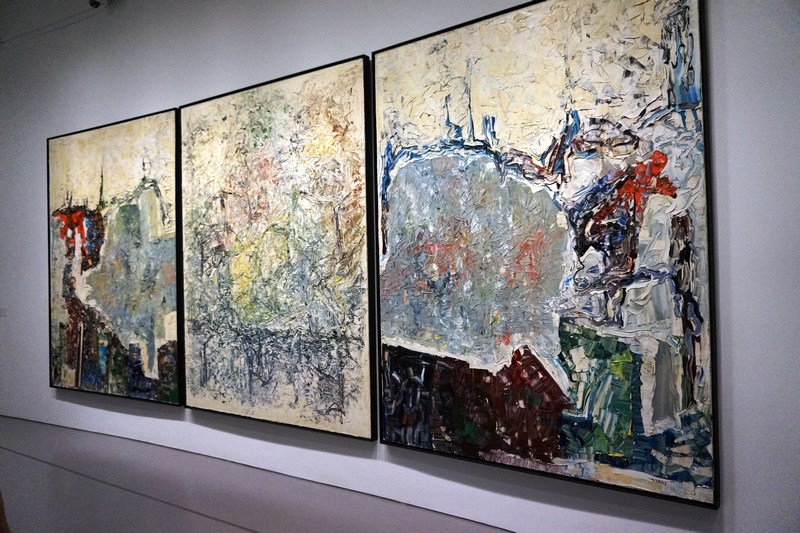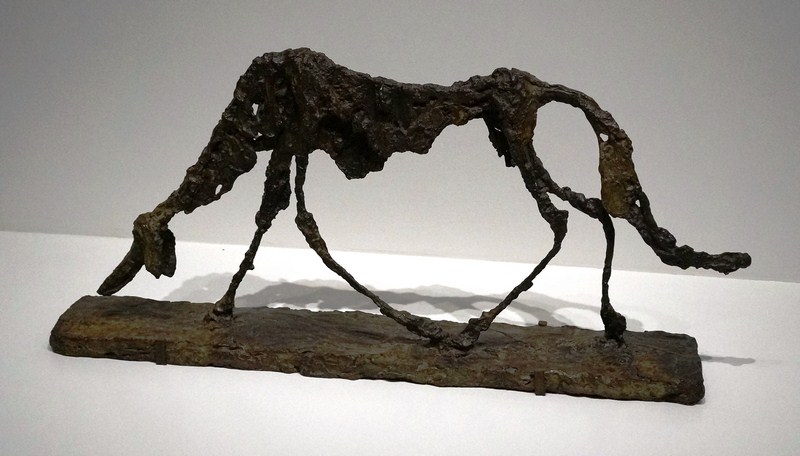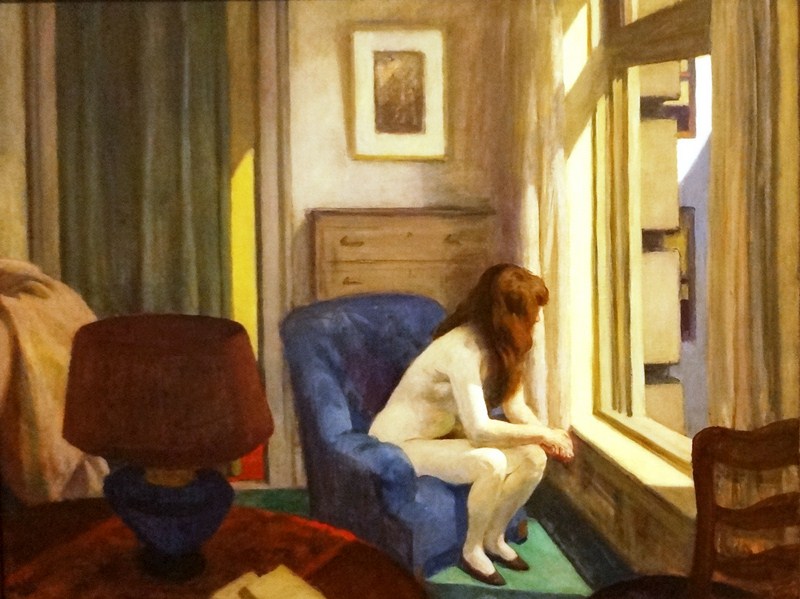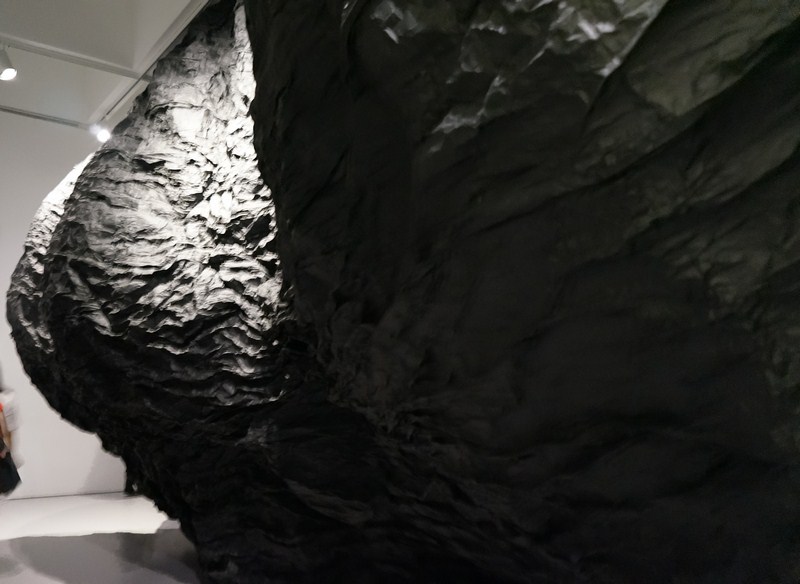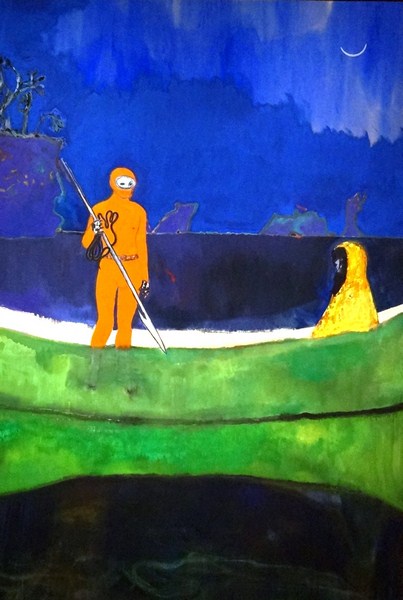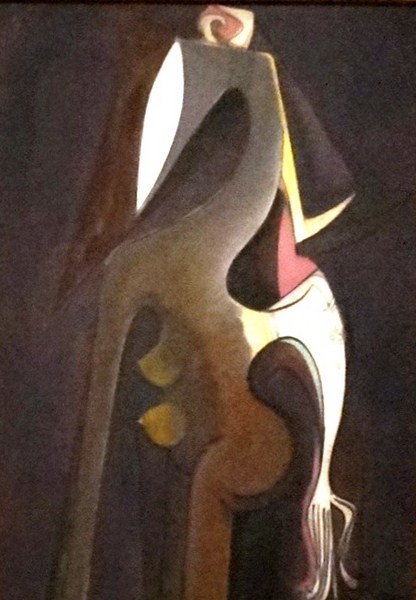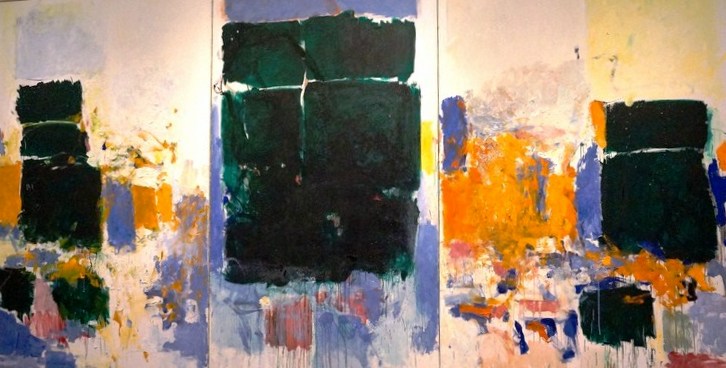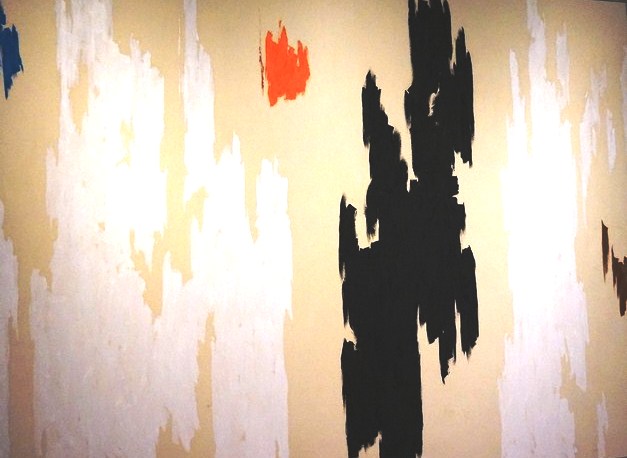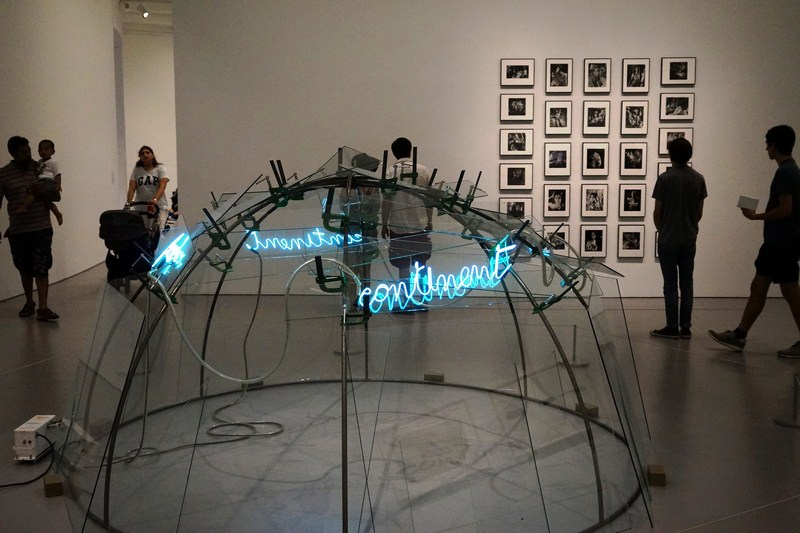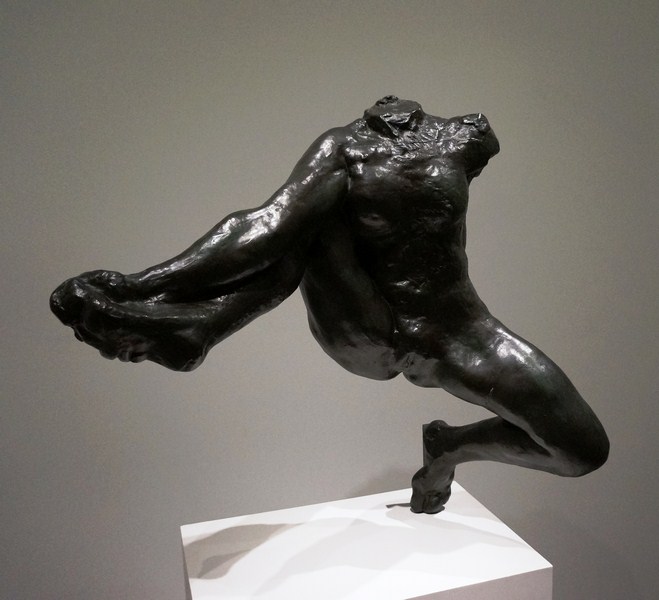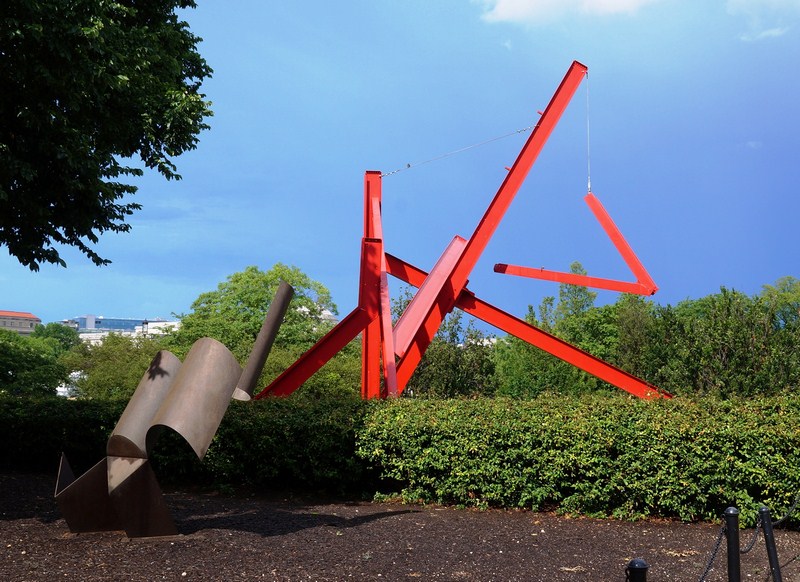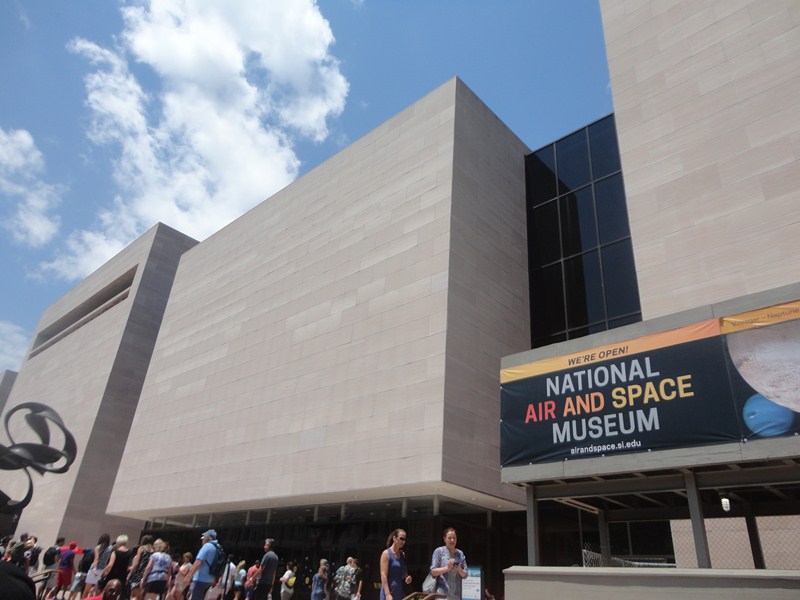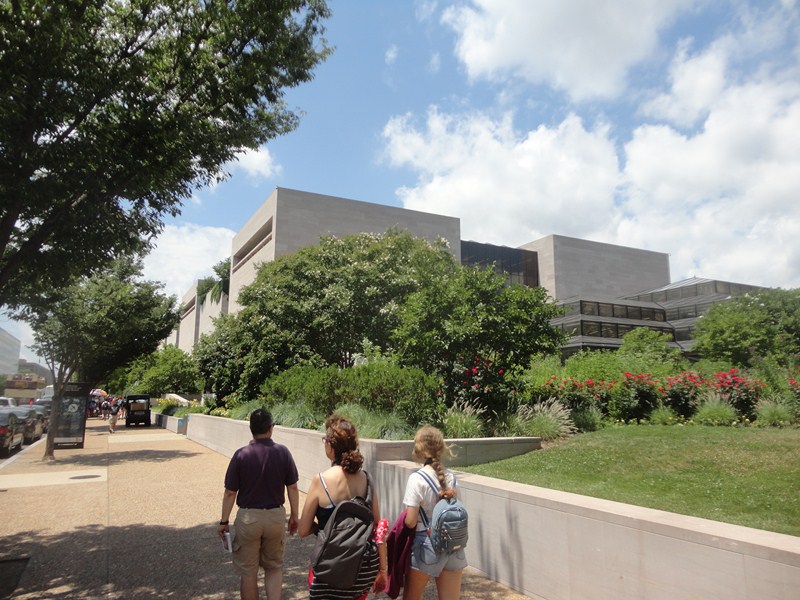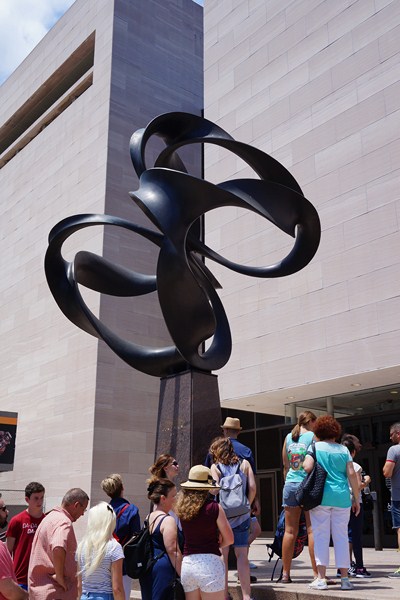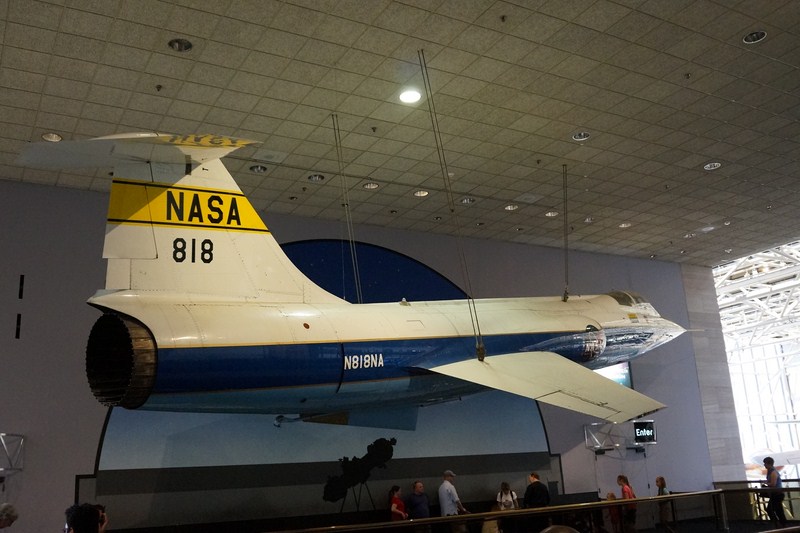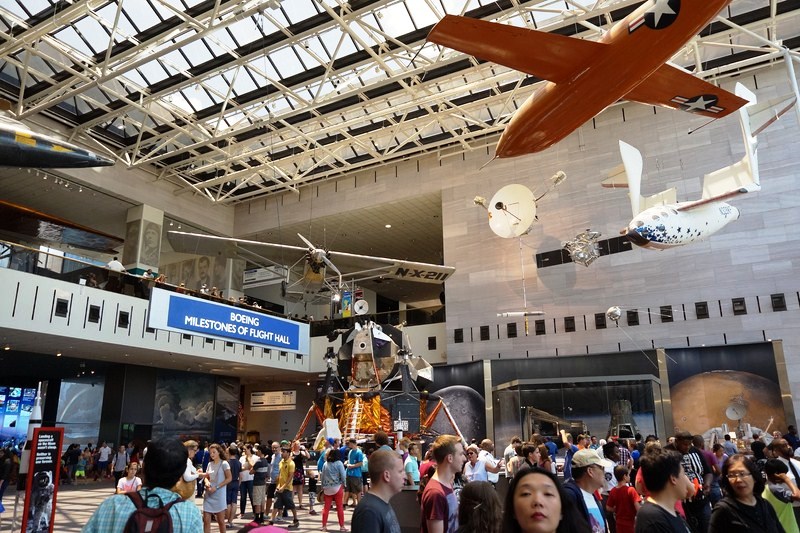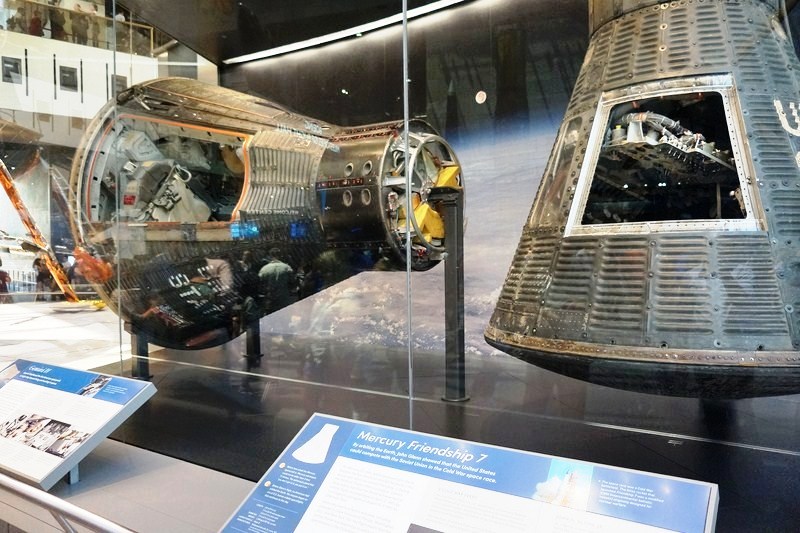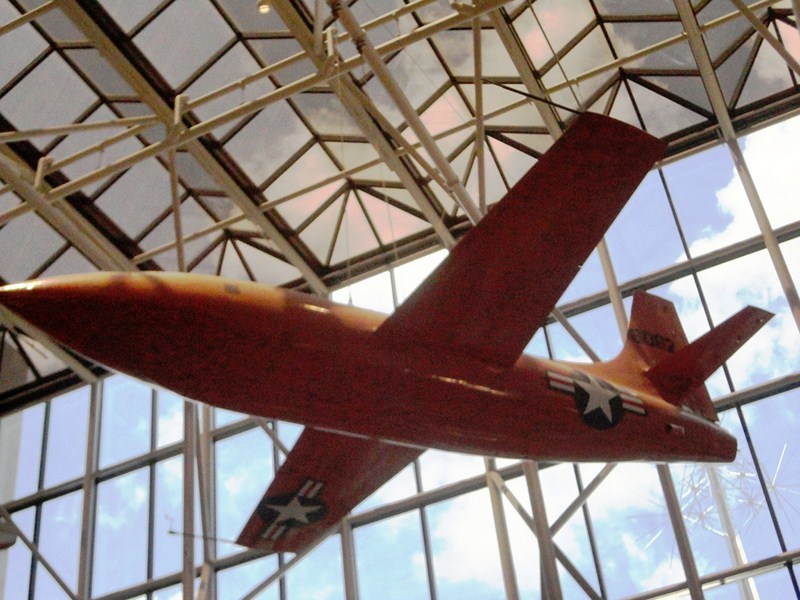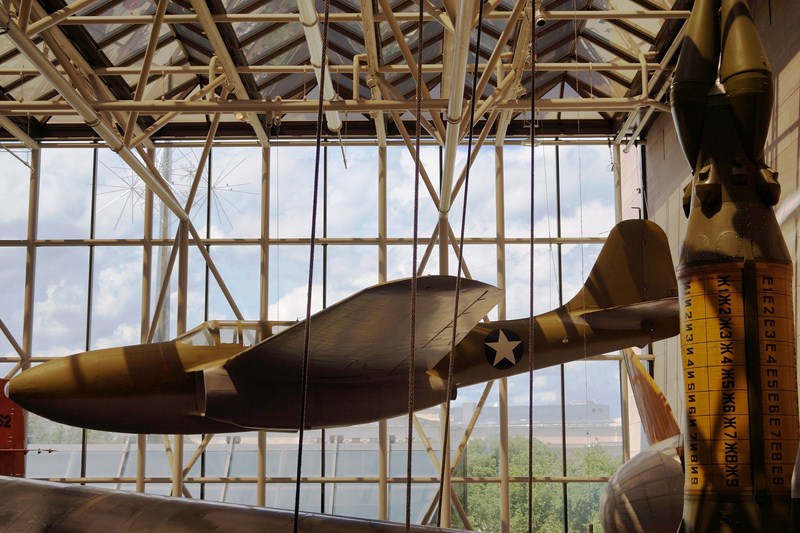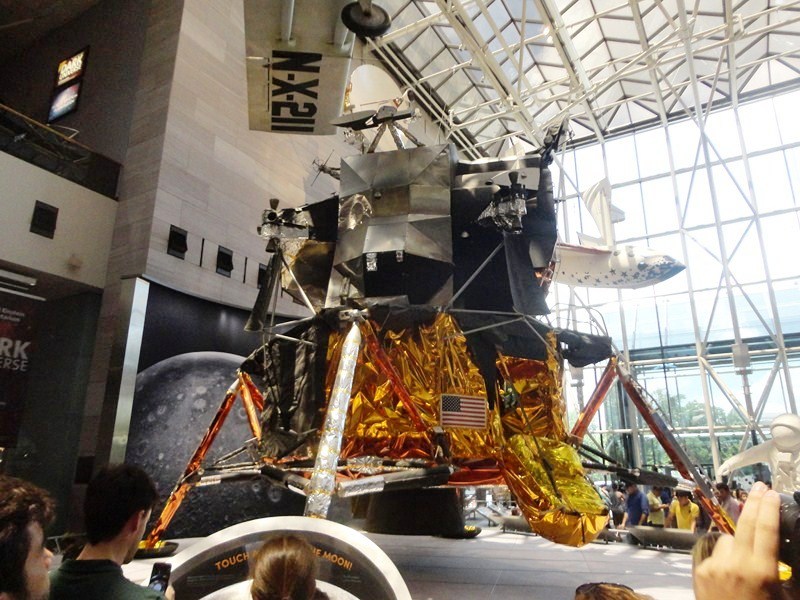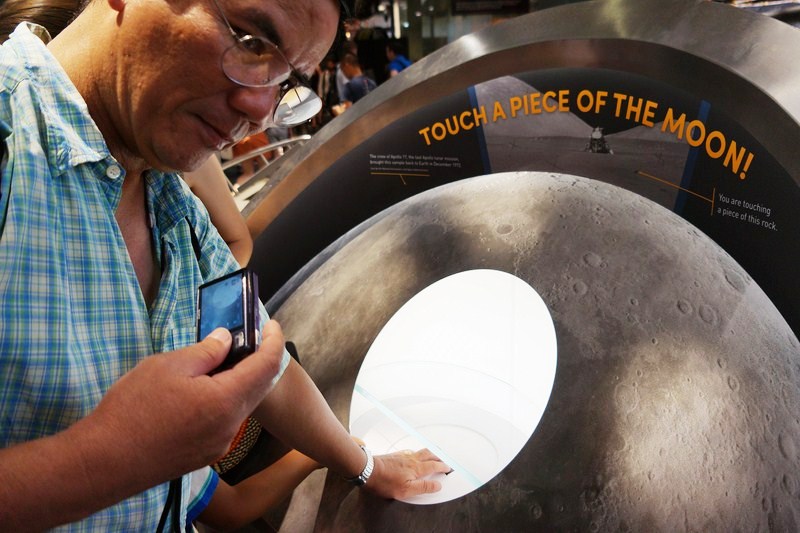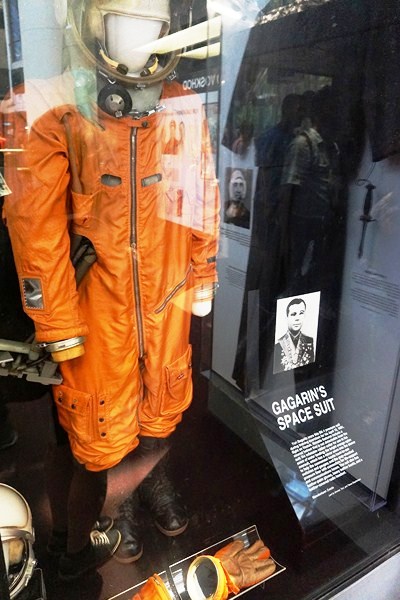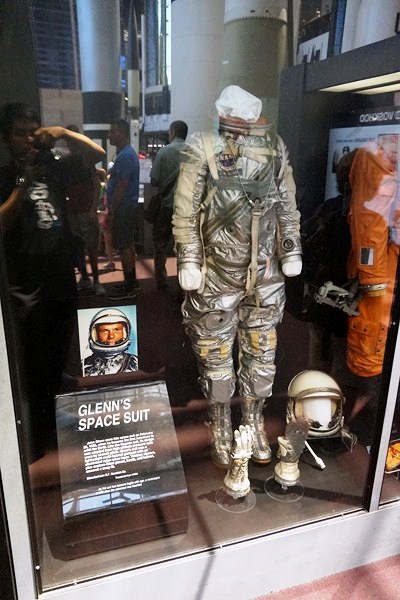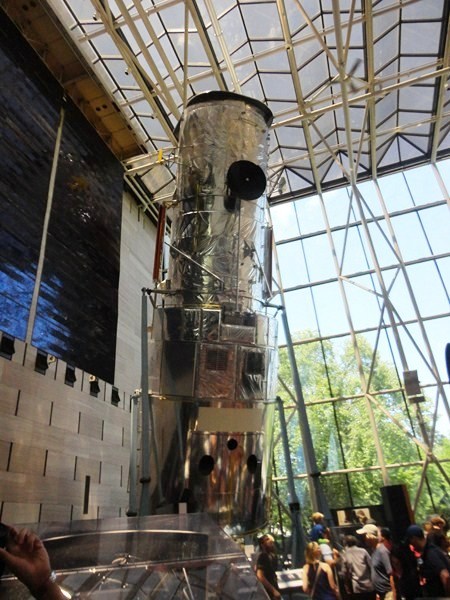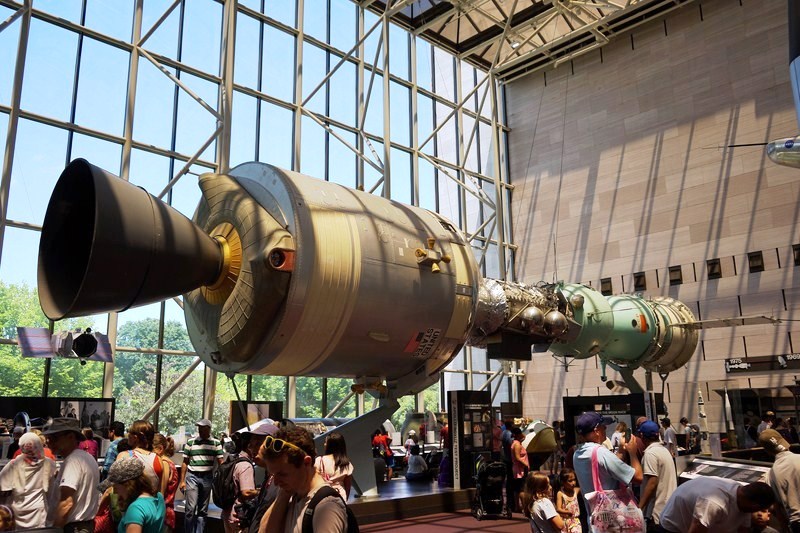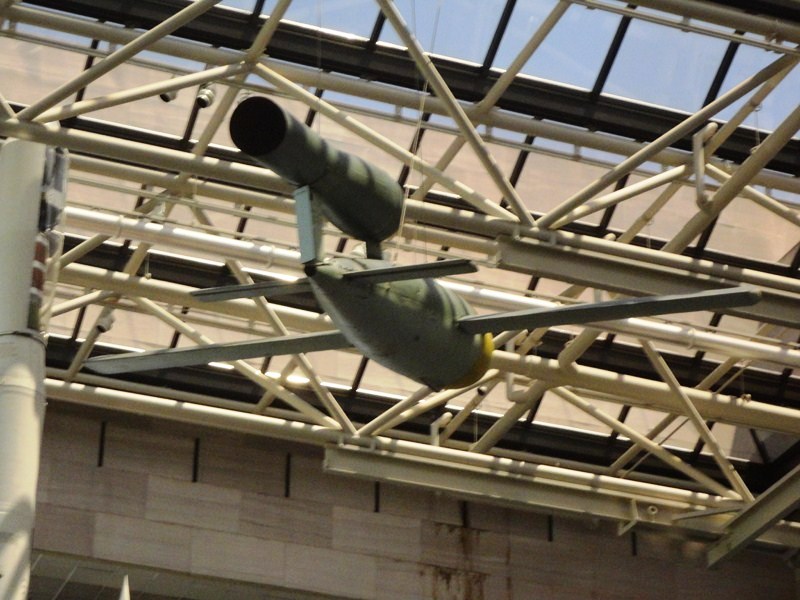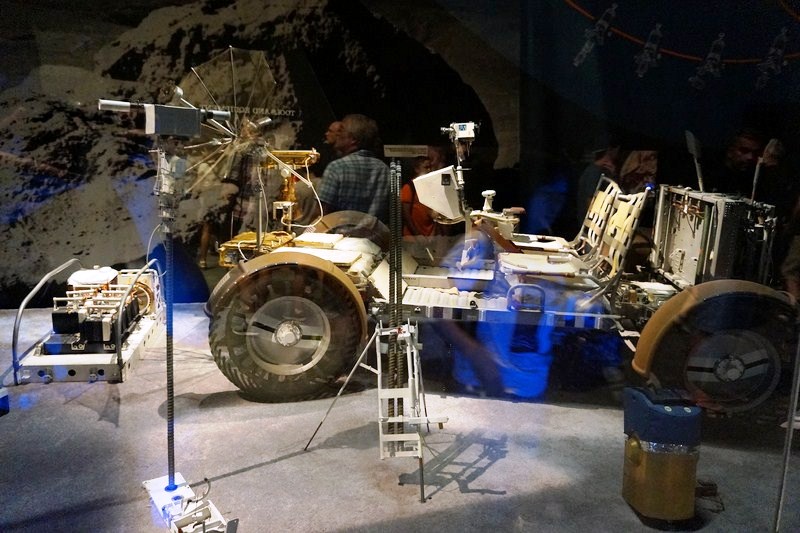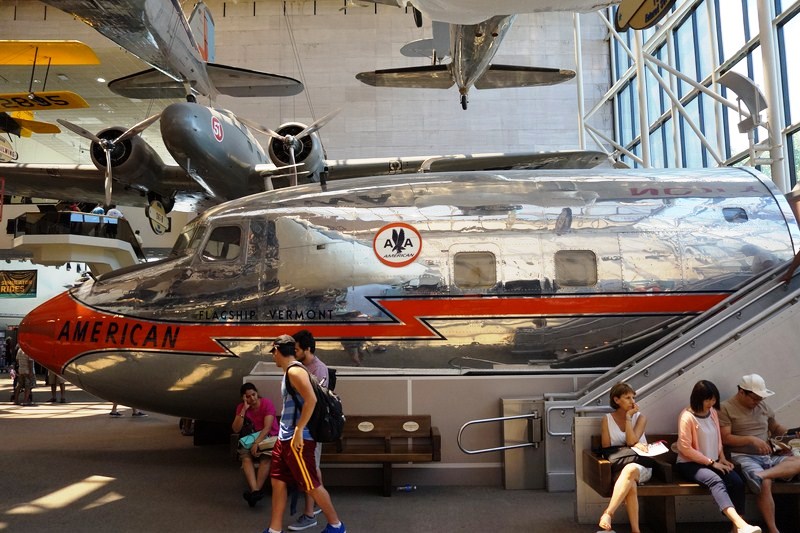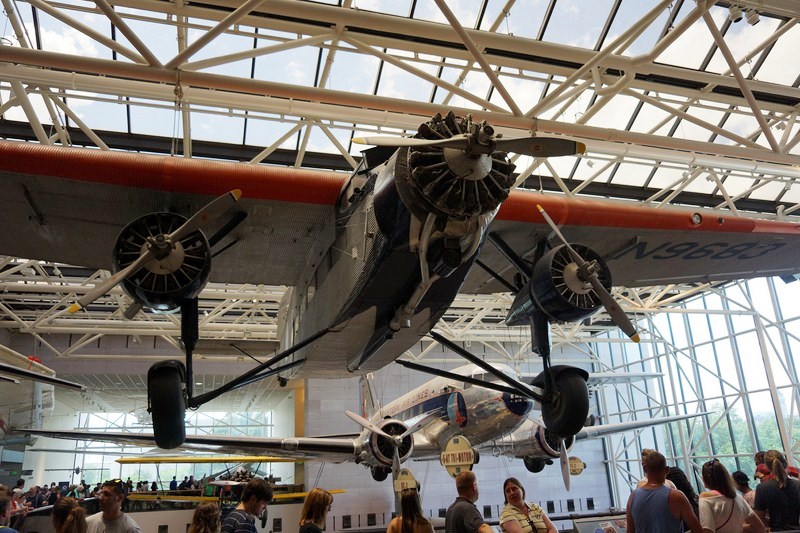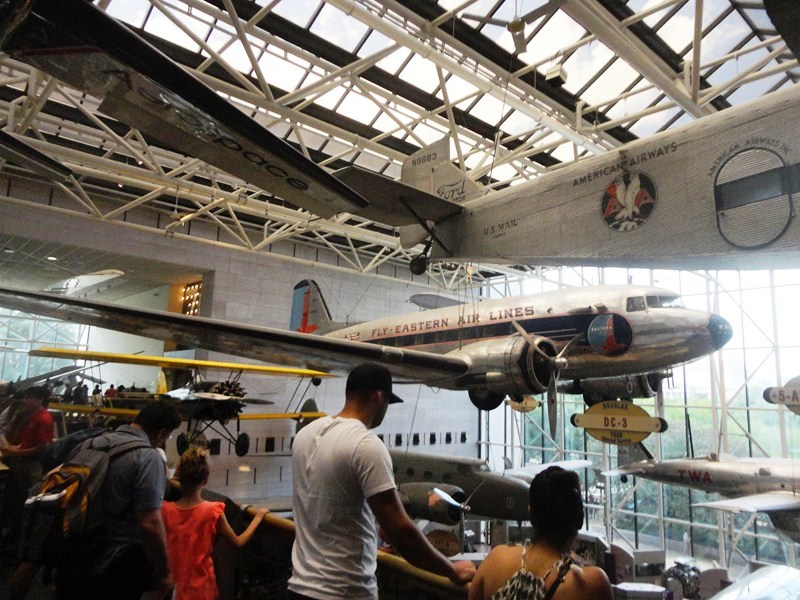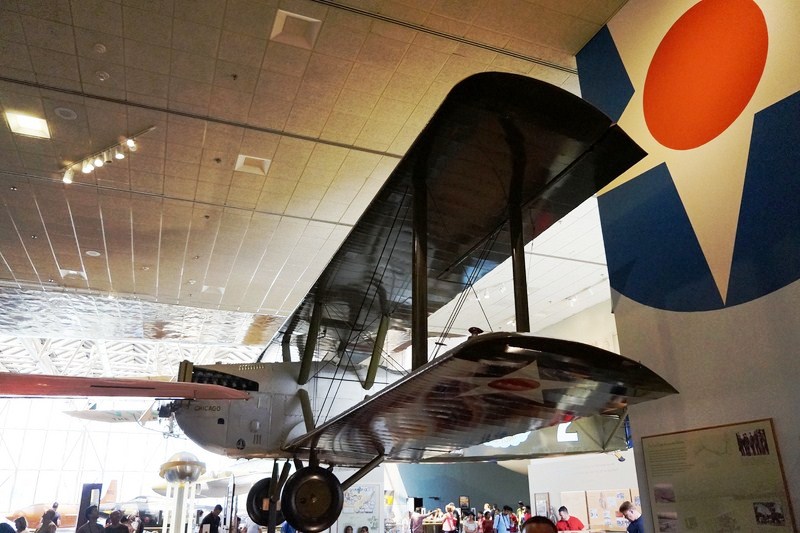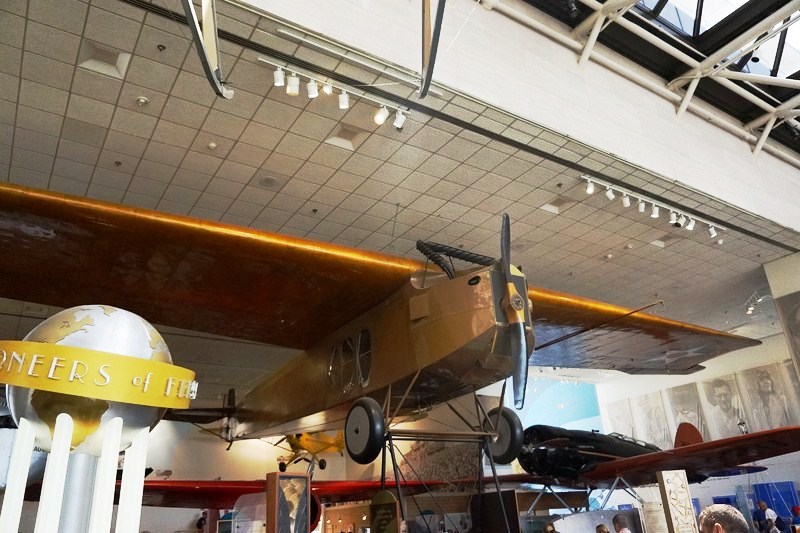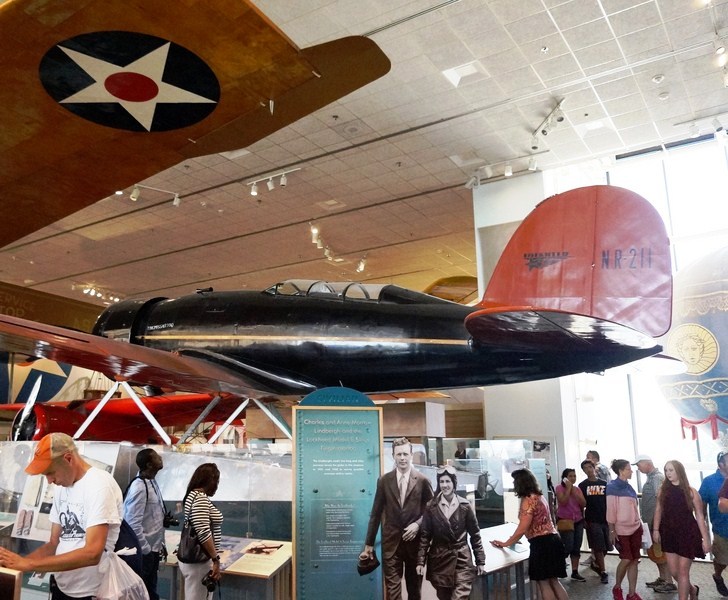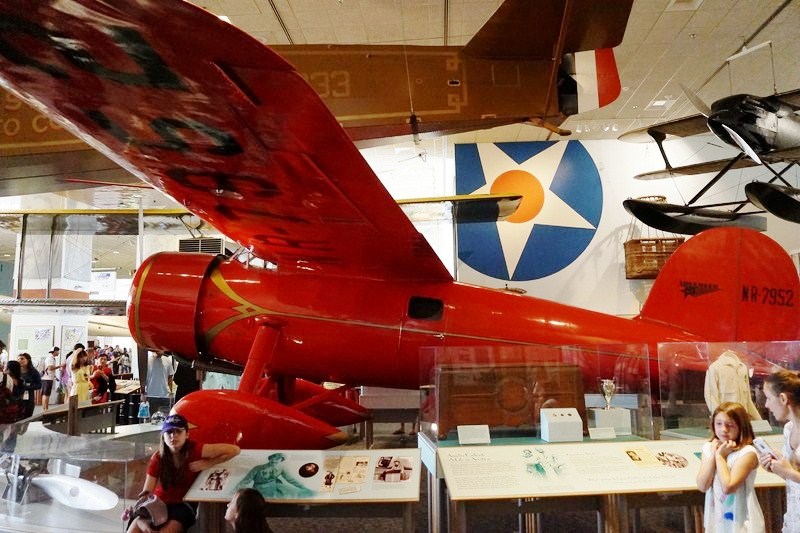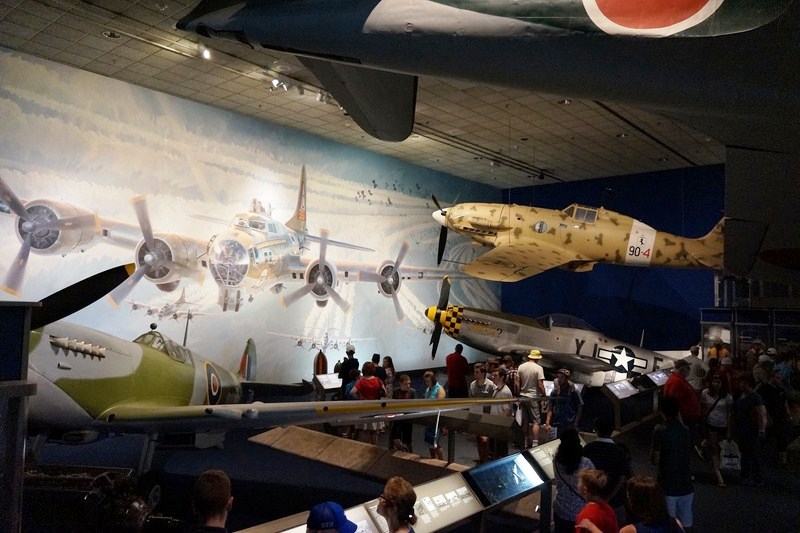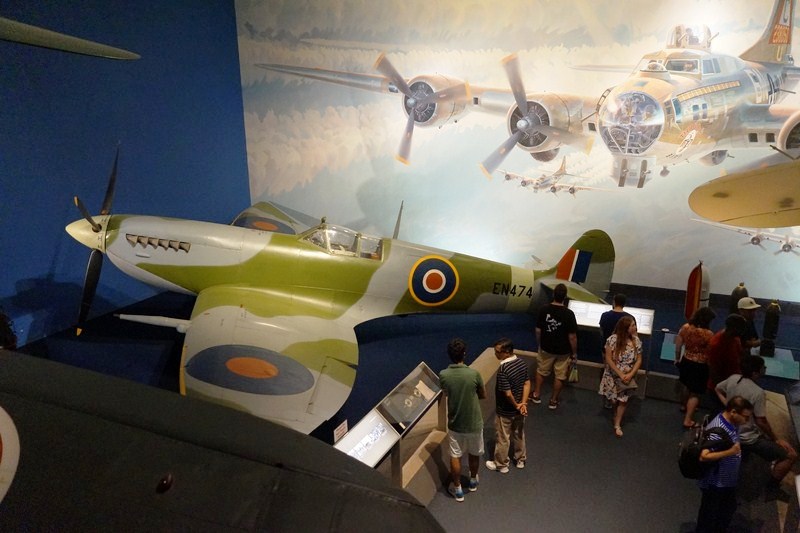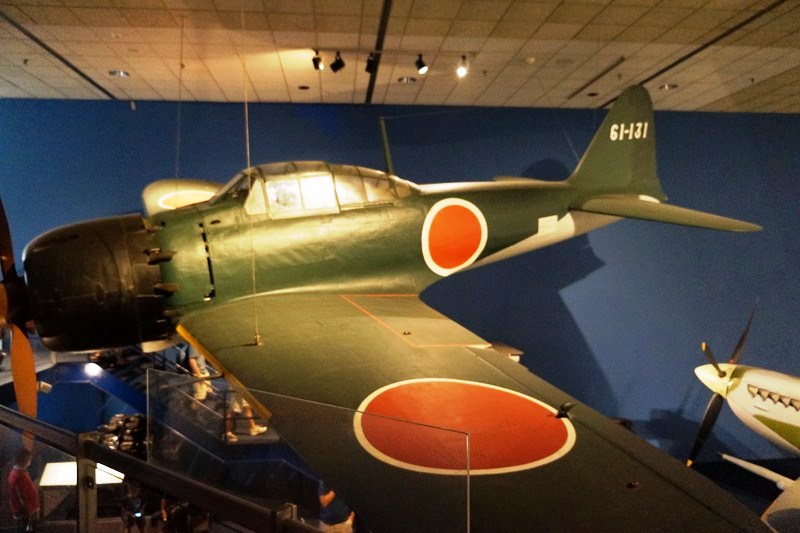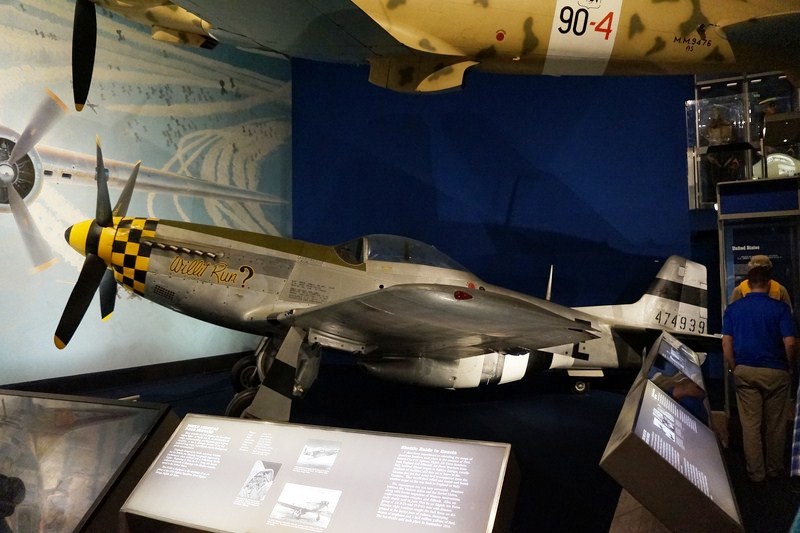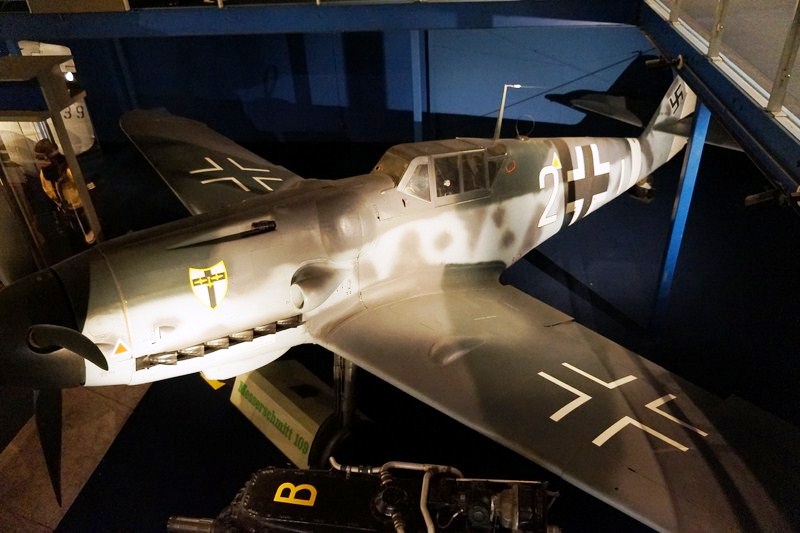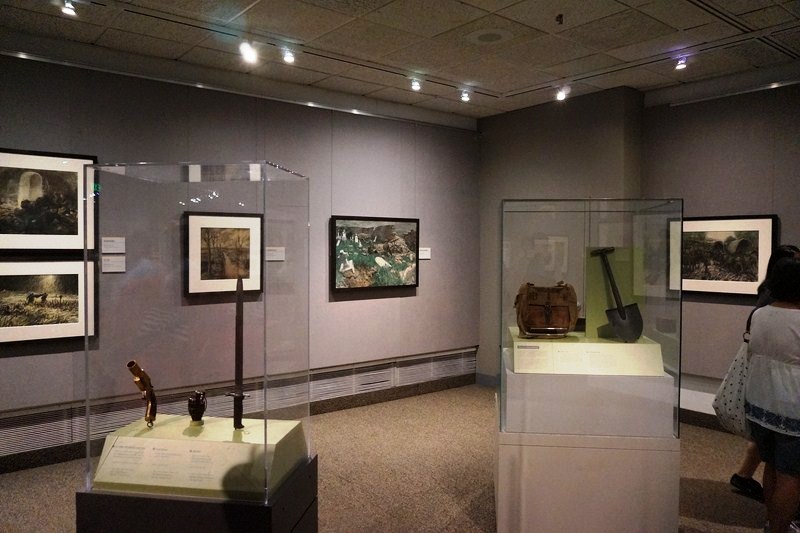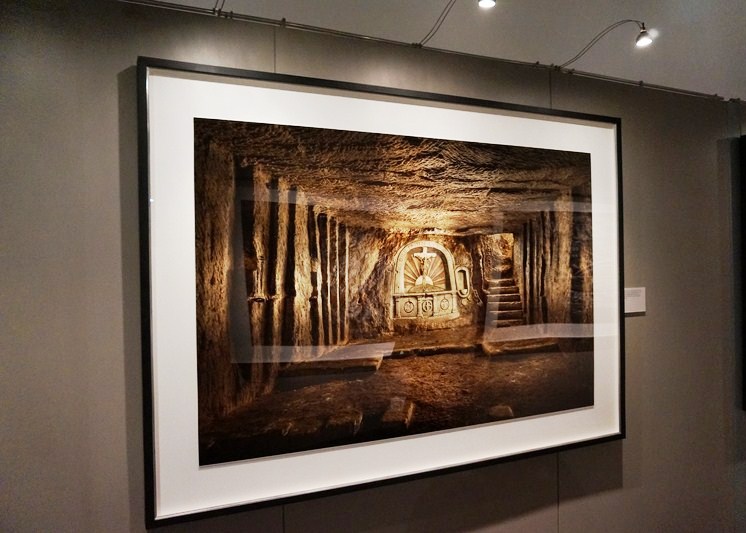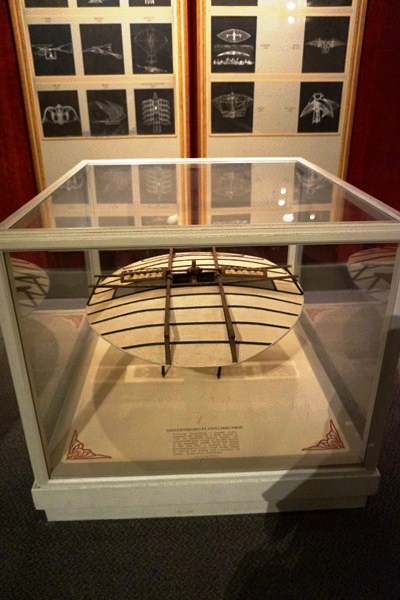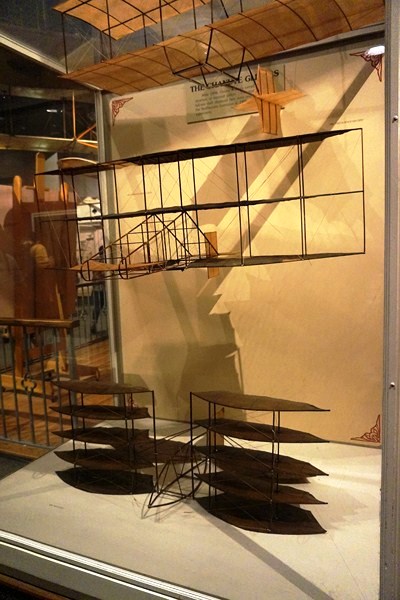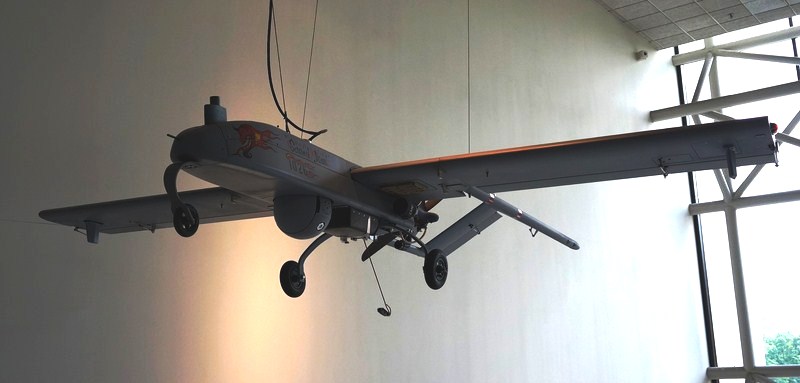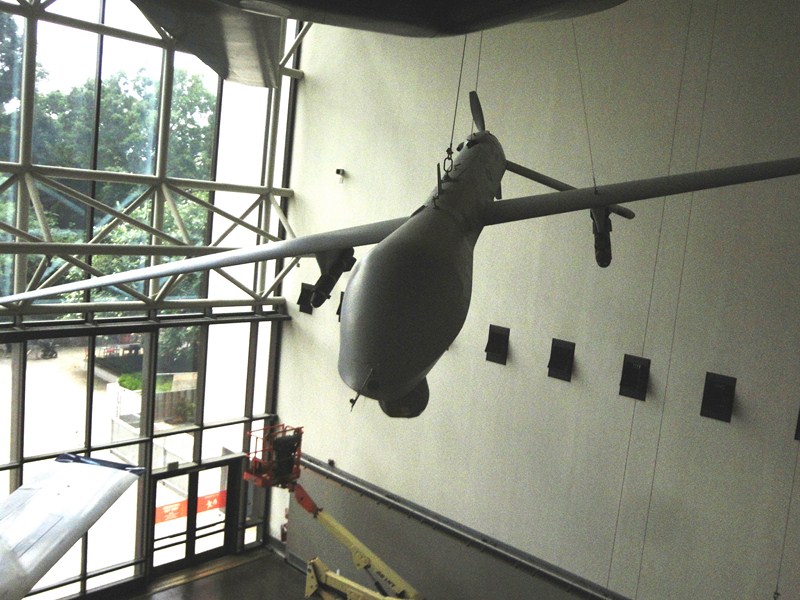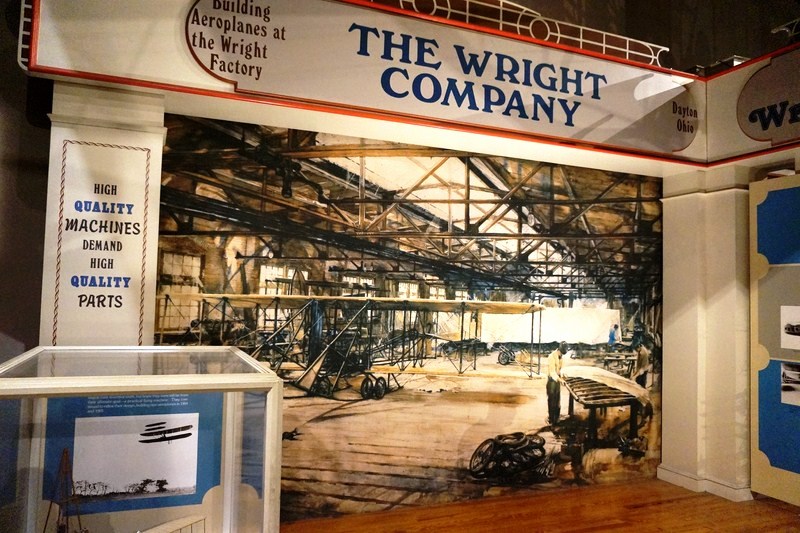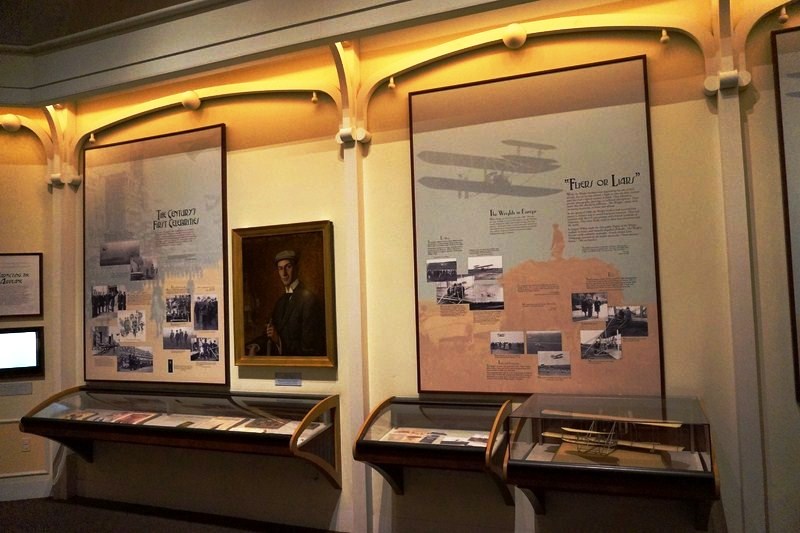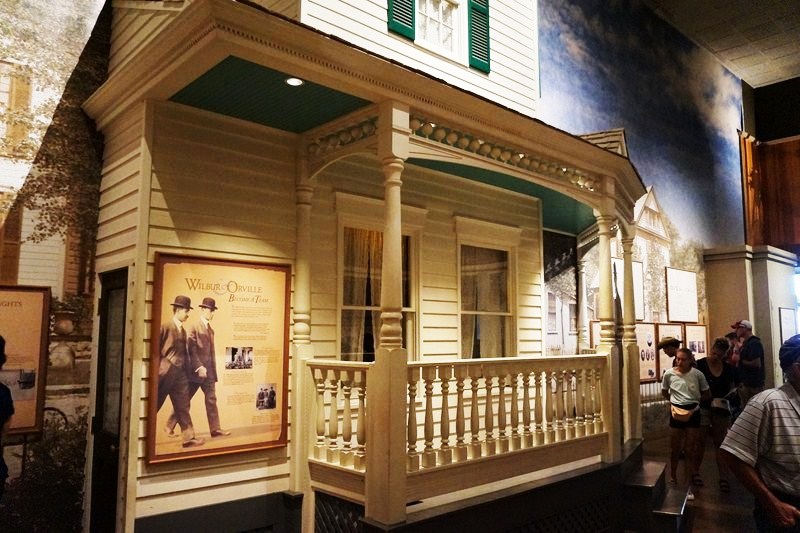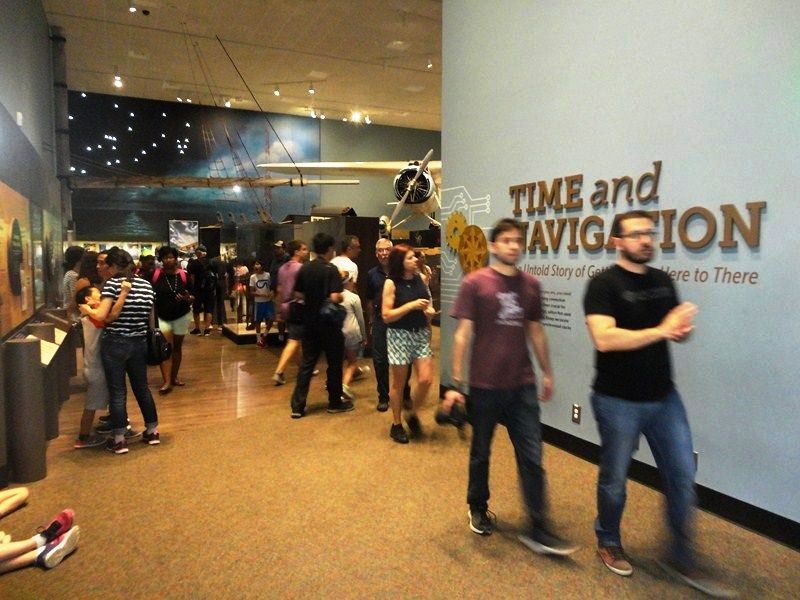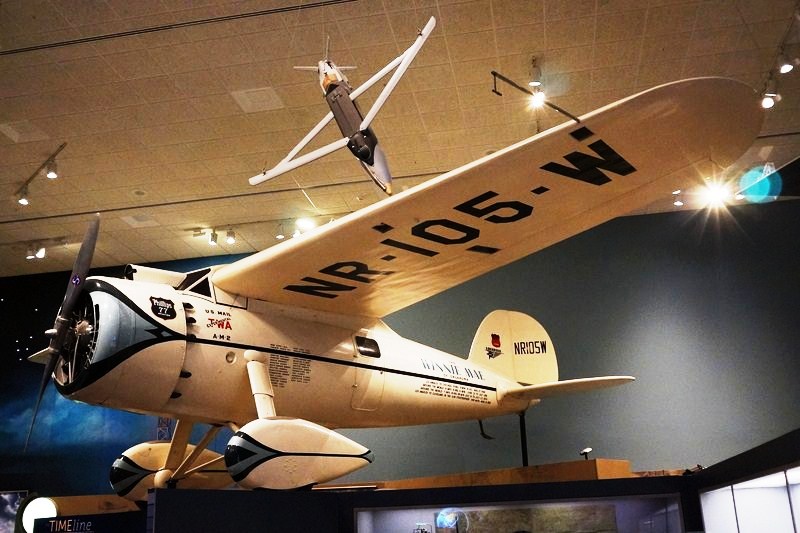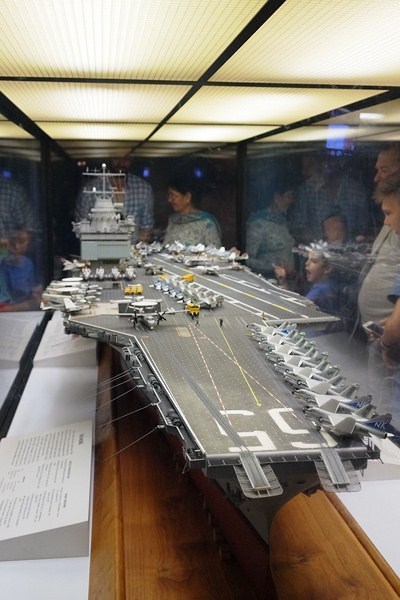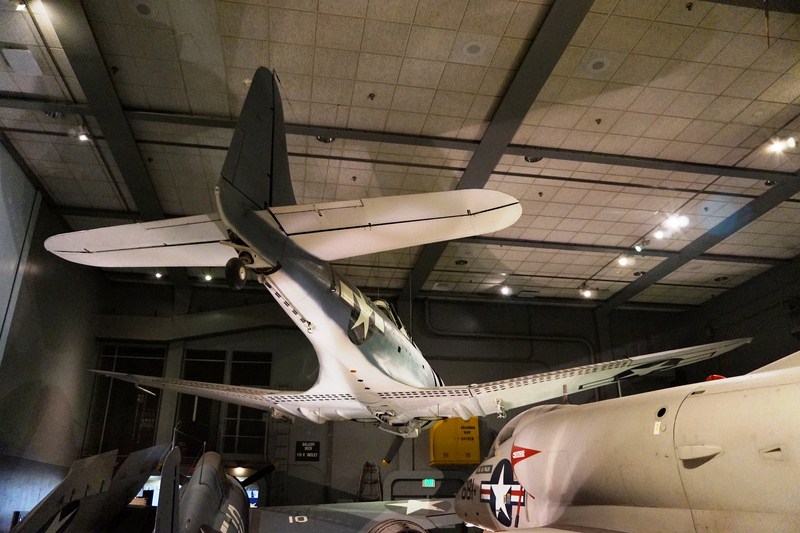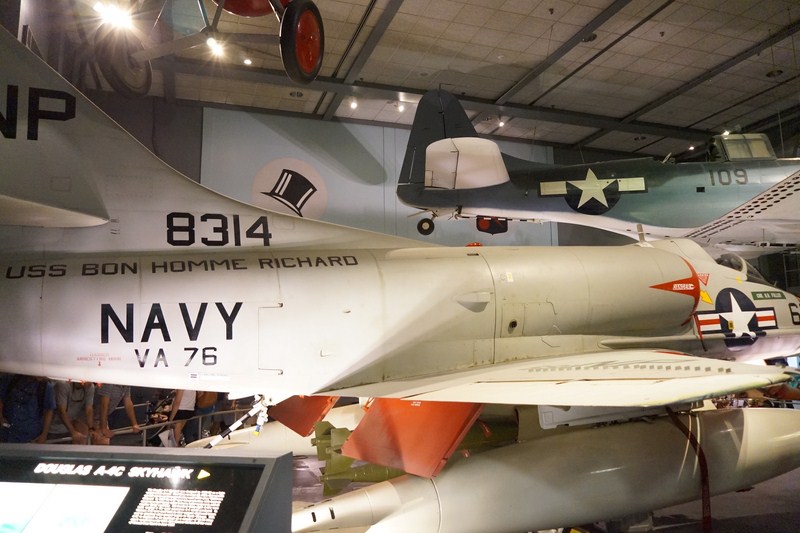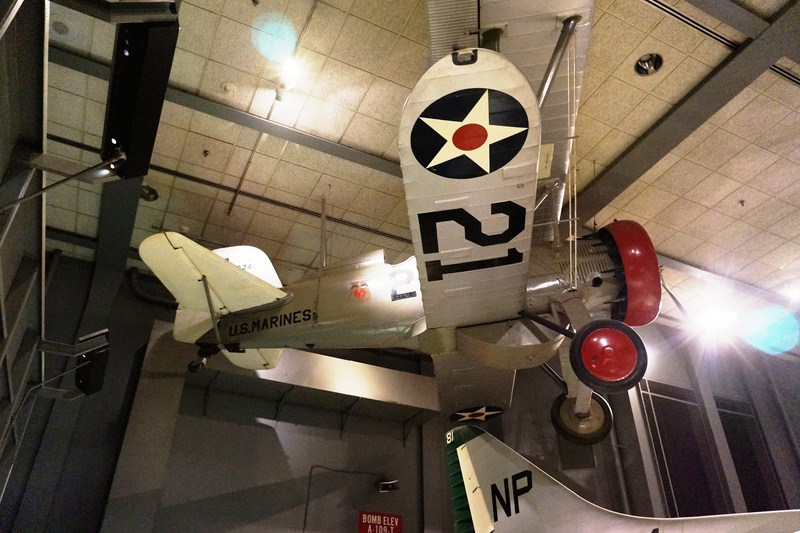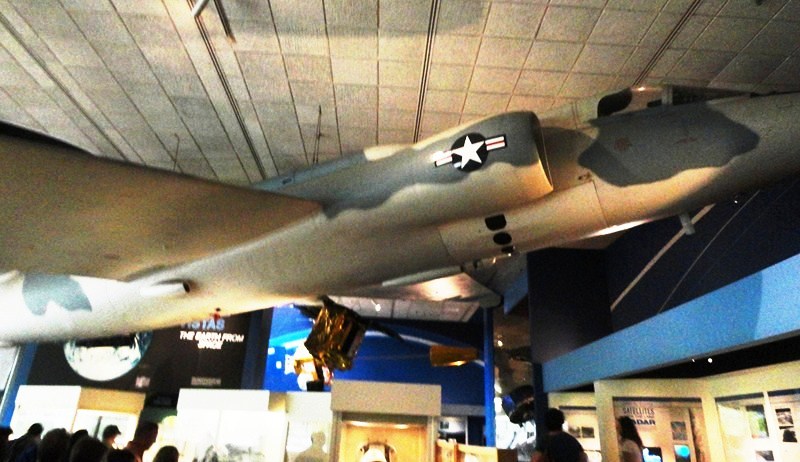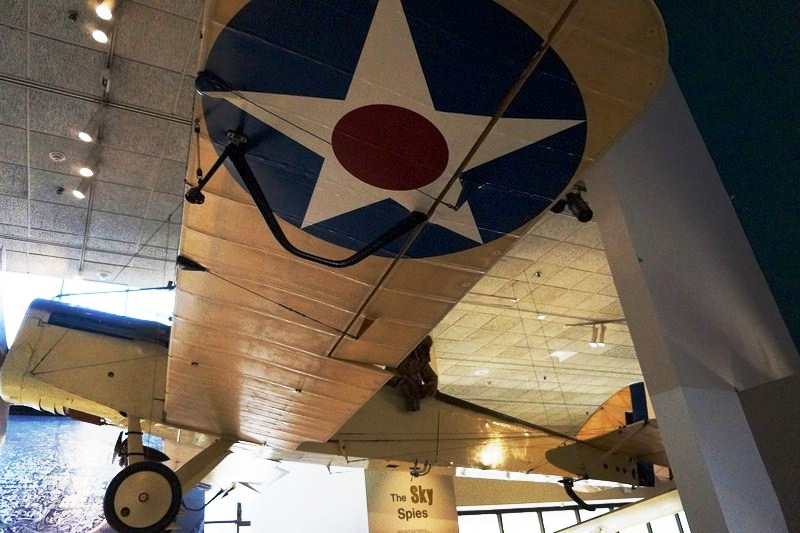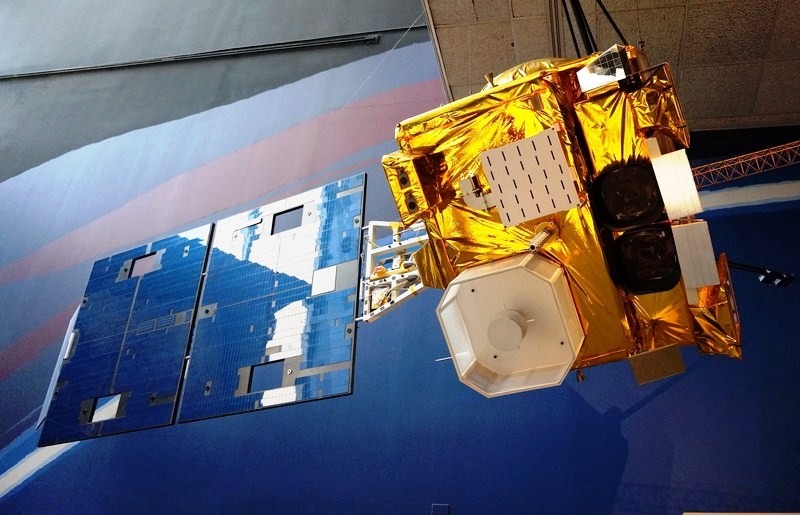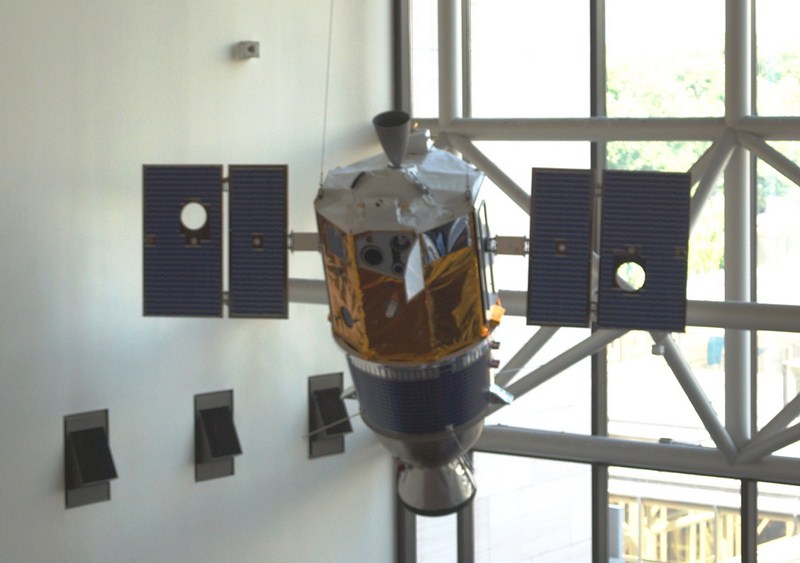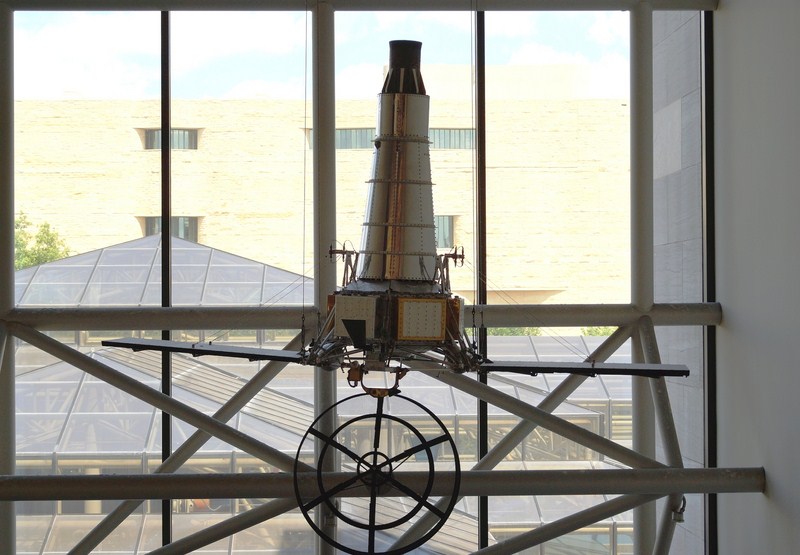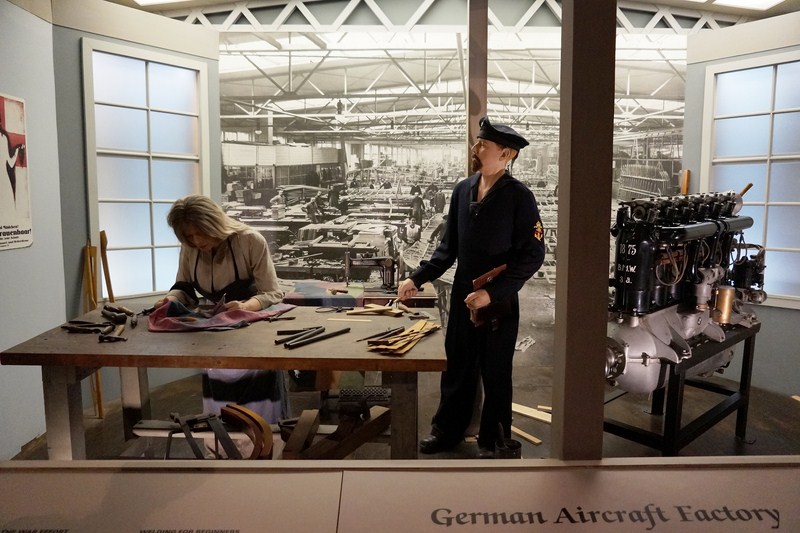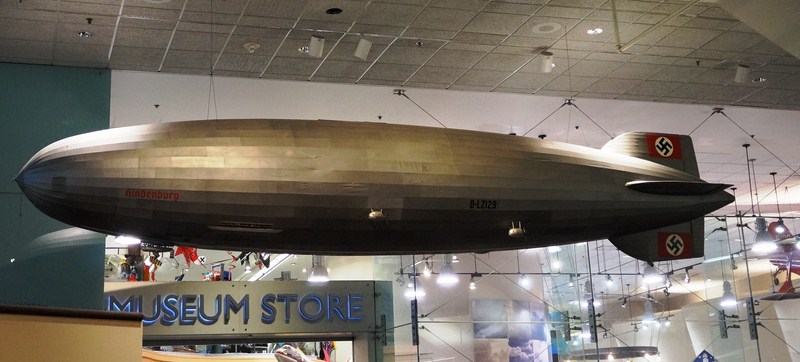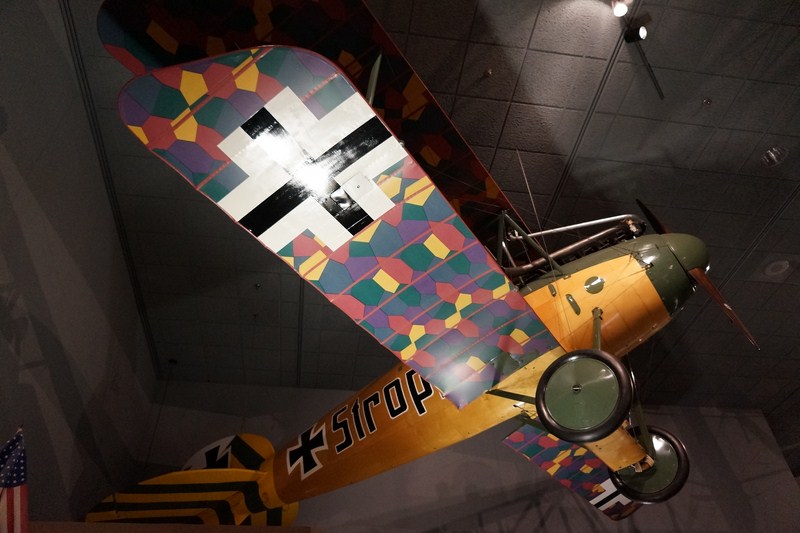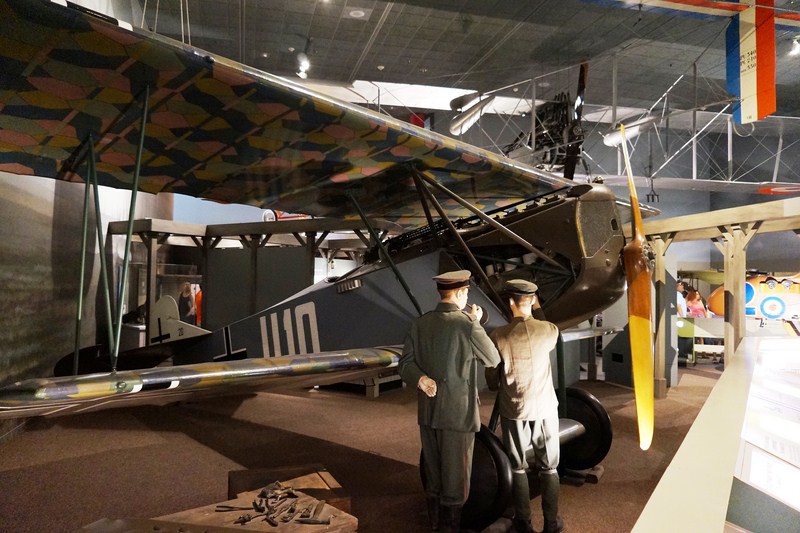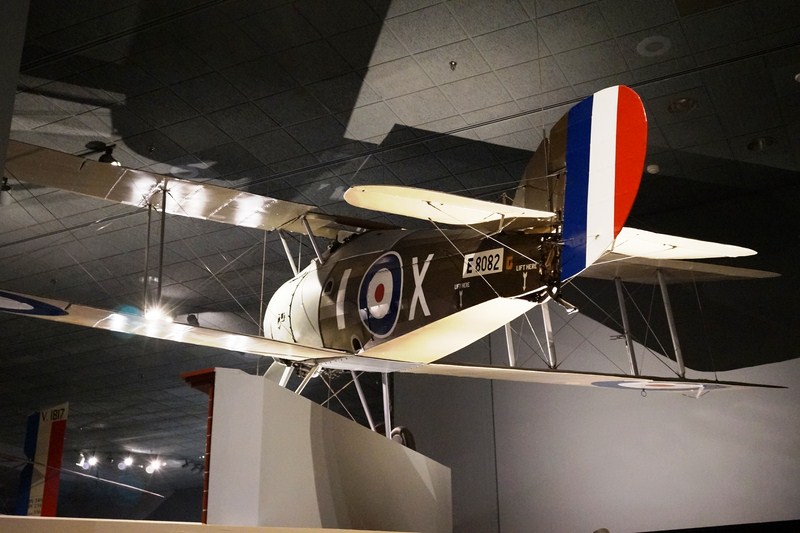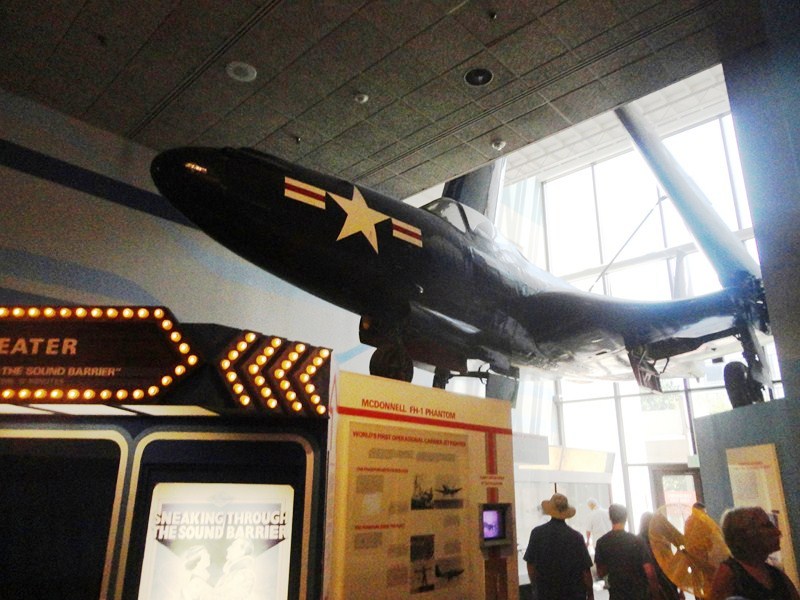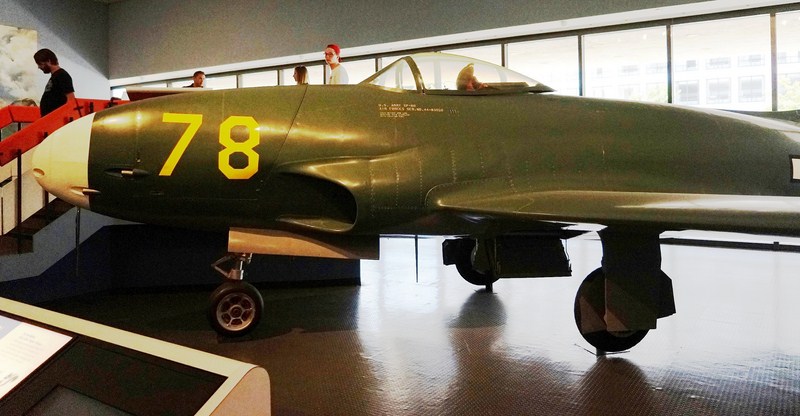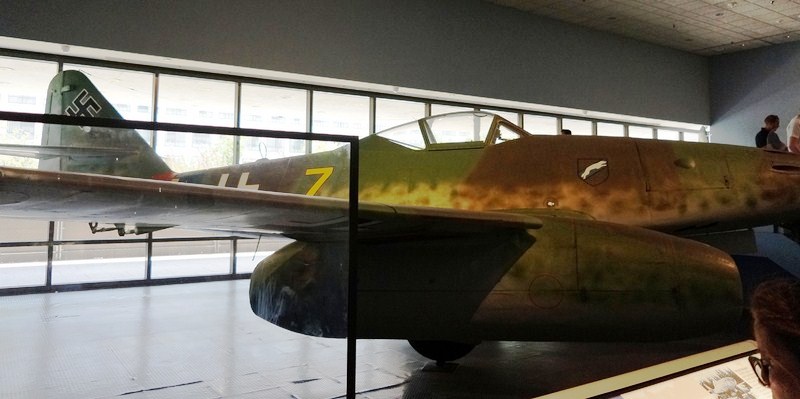The 2.5-hectare (6.1-acre), beautifully landscaped National Gallery of Art Sculpture Garden, the most recent addition to the National Gallery of Art, is located on the National Mall, on the opposite side of Seventh Street, between the National Gallery of Art’s West Building and the Smithsonian Institution‘s National Museum of Natural History.
Check out “National Museum of Natural History”
The gorgeous garden, redesigned by landscape architects Laurie Olin and his firm OLIN after more than 30 years of planning, was completed and opened to the public on May 23, 1999.
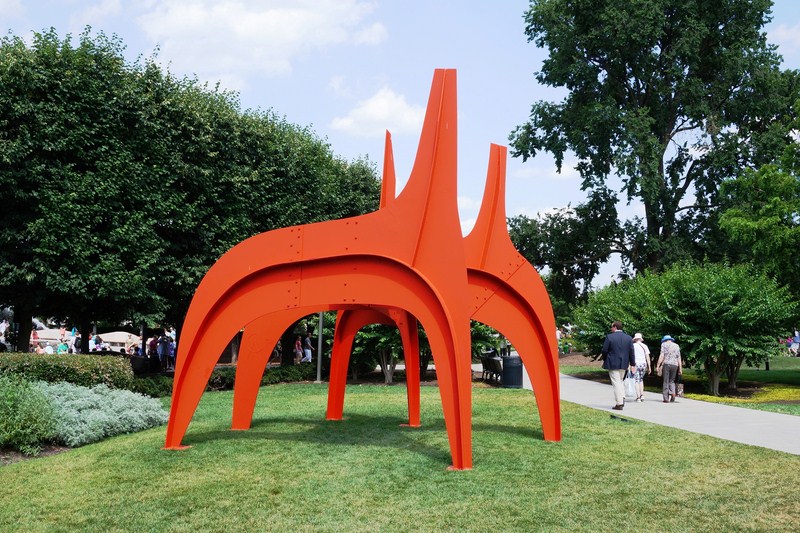
Cheval Rouge (Red Horse), an outdoor mobile by Alexander Calder (1974), exhibits an appealing grace and, though steadfastly abstract, evoke a friendly resonance with natural forms. Here the sleek, tapering legs and tensile up-thrust “neck” recall the muscularity and power of a thoroughbred.
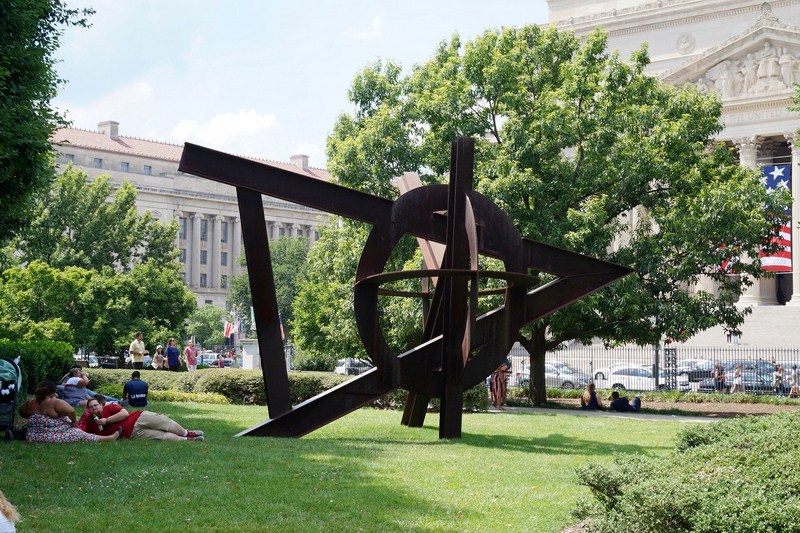
Aurora, by Mark di Suvero (1992 – 1993), is a tour de force of design and engineering with its sophisticated structural system that distributes eight tons of steel over three diagonal supports to combine massive scale with elegance of proportion. Several beams converge within a central circular hub and then explode outward, imparting tension and dynamism to the whole. The title comes from a poem about New York City by Federico García Lorca (Spanish, 1898–1936). The steel forms a letter “k”(the artist has said the work is a portrait of his wife, Kate).
The location provides an outdoor setting for exhibiting several monumental pieces from the museum’s modern and contemporary sculpture collection.
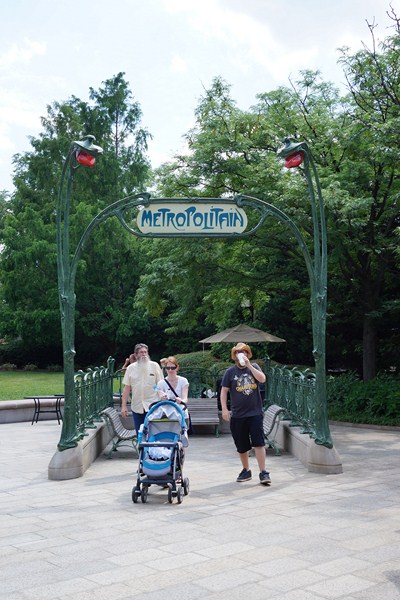
An Entrance into the Paris Metropolitan, by architect Hector Guimard, was one of three entrance styles he designed for the Paris Metro that were industrially produced in painted cast iron and bronze until 1913. The designs were meant to clearly mark the new subway entrances and make the novel form of mass transportation more attractive to riders.
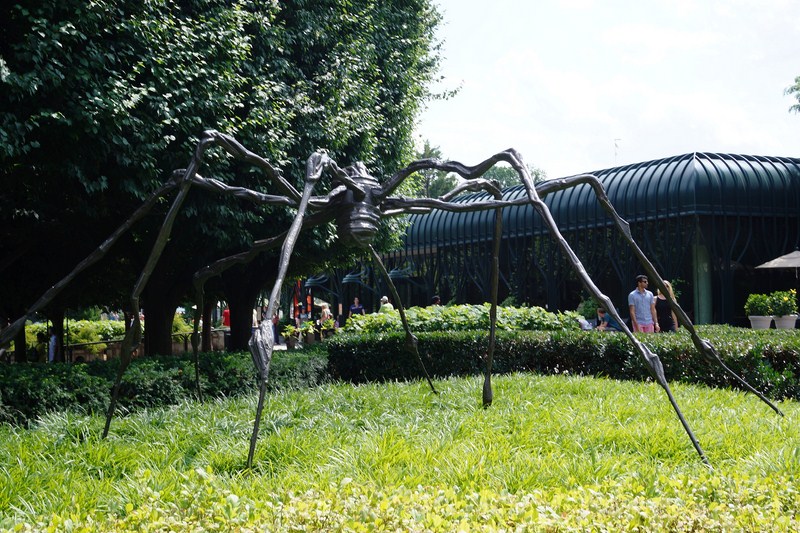
Spider, by Louise Bourgeois (1996 – 1997), appears as looming and powerful protectresses, yet is delicate and vulnerable. Louise Bourgeois used the spider as the central protagonist in her art during the last decades of her life.
Native American species of canopy and flowering trees, shrubs, ground covers, and perennials were planted at the garden.
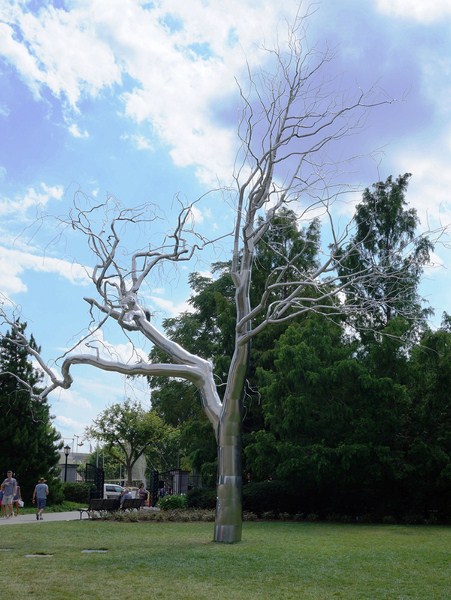
Graft, by Roxy Paine (2008–2009), was added to the Sculpture Garden on the 10th anniversary of its opening. It is part of a series of stainless steel sculptures the artist refers to as “Dendroids,” a term that describes a tree-like, branching form, but also evokes an artificially engineered or mutant body.
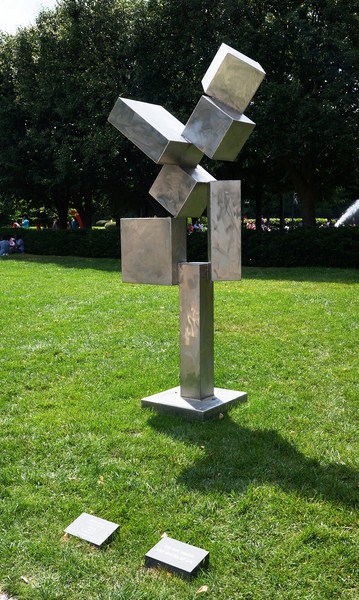
Cubi XI, a steel abstract sculpture by David Smith, is a stack of three cubes and four rectangular boxes welded together and installed on a cube-shaped base. Part of the Cubi series of 28 sculptures, it was constructed in 1963 and was installed on April 21, 1964.
The collection is centered on an elegant circular reflecting fountain which is complemented by arching pathways of granite and crushed stone.
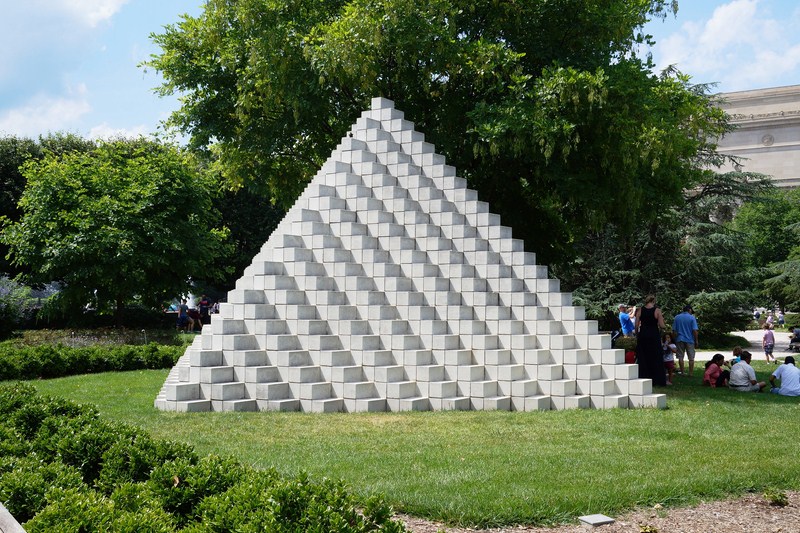
Four-Sided Pyramid, by Sol LeWitt, 1997 – 1999), was constructed on site by a team of engineers and stonemasons. This terraced pyramid, which also alludes to the ziggurats of ancient Mesopotamia, relates to the 1961 repeal of early 20th-century setback laws for New York City skyscrapers.
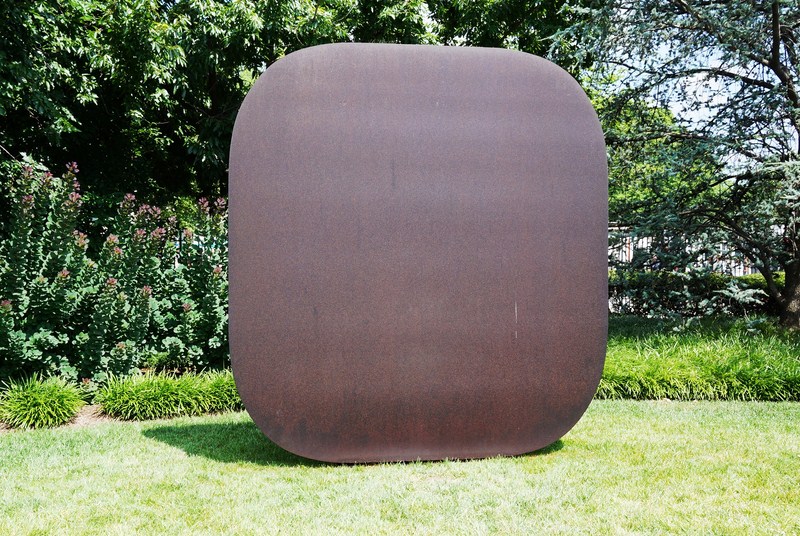
Stele II, by Ellsworth Kelly (1973), is loosely based on a French kilometer marker, an object Kelly observed during his years in Paris after World War II. This sculpture, also essentially planar and upright will, over time, weather from exposure to the elements, developing an evenly corroded, non-reflective surface.
During the winter months of December to March, the fountain is converted to an ice-skating rink which predated the construction of the garden. The outdoor Pavilion Café, which lies adjacent to the garden, offers year-round service.
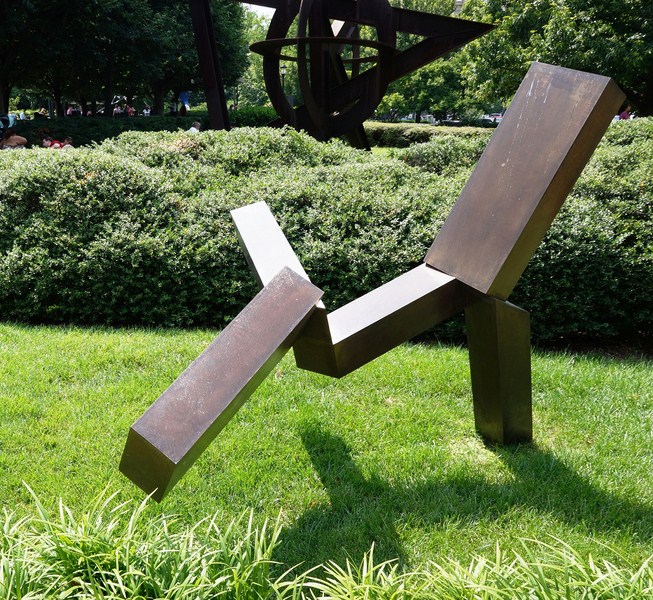
Untitled, by Joel Shapiro (1989), may bring to mind a human figure in motion, yet at the same time it can be understood as an abstract sculpture that explores the properties of balance and gravity. Originally constructed from plywood sheets, the elements of this work were carefully cast to retain the wood grain pattern.
With a panoramic view of the Sculpture Garden, the cafe serves freshly made salads, soups, flatbreads, and sandwiches, with indoor and outdoor seating and no timed passes required.
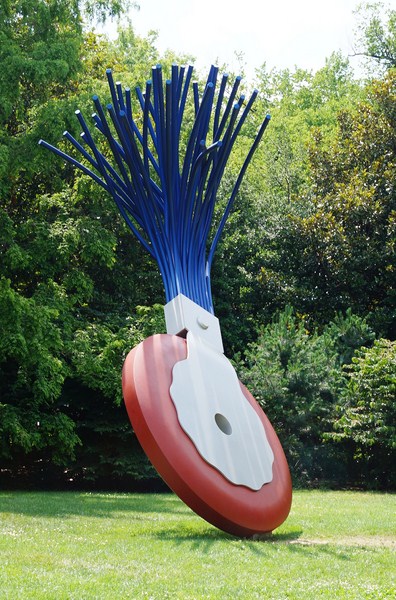
Typewriter Eraser, by Claes Oldenburg and Coosje van Bruggen (1999), was based upon Claes’ childhood memories of playing with the the now obsolete typewriter eraser in his father’s office. Here the giant brush arcs back, conveying a sense of motion, as if the wheel-like eraser were rolling down the hill and making its way toward the gate of the garden.
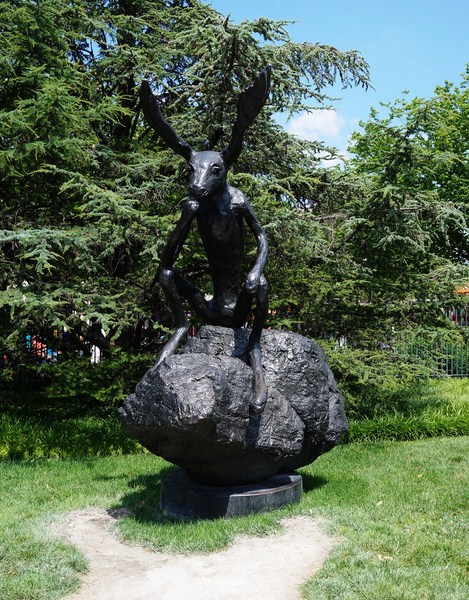
Thinker on a Rock, by Barry Flanagan (1997), substitutes the hare for Auguste Rodin’s Thinker (1880), making an irreverent reference to one of the world’s best-known sculptures (a version of which may be seen in the West Building sculpture galleries).
The surrounding landscaped area exhibits 20th century sculptural pieces by Marc Chagall (Orphee, 1969), David Smith (Cubi XI, 1963, Cubi XXVI, 1965), Mark Di Suvero (Aurora, 1992–93), Roy Lichtenstein (House I, 1996 – 1998), Polish artist Magdalena Abakanowicz (Puellae, 1992), Sol LeWitt (Four-Sided Pyramid, 1965), Tony Smith (Wandering Rocks, 1967 and Moondog, 1964), Roxy Paine (Graft, 2008–2009), Joan Miró (Personnage Gothique, Oiseau-Eclair, 1974 – 1977), Louise Bourgeois (Spider, 1996 – 1997), Robert Indiana (AMOR, 1998 – 2006), Barry Flanagan (Thinker on a Rock, 1997), Joel Shapiro (Untitled, 1989), Lucas Samaras (Chair Transformation Number 20B, 1996), Scott Burton (Six-Part Seating, 1985 – 1998), Ellsworth Kelly (Stele II, 1973), Alexander Calder (Cheval Rouge, 1974), George Rickey (Cluster of Four Cubes, 1992), Hector Guimard (An Entrance to the Paris Métropolitain, 1902 – 1913) and by Claes Oldenburg and Coosje van Bruggen (Typewriter Eraser, Scale X, 1999).

Personnage Gothique, Oiseau-Éclair, one of the largest sculptures of Joan Miro (1974 – 1977), features a bird cast from an object the artist created, while the top portion was cast from a cardboard box and the arch-shaped form from a donkey’s collar. The objects combine to suggest a figure while, at the same time, the empty box and unoccupied harness imply absence.
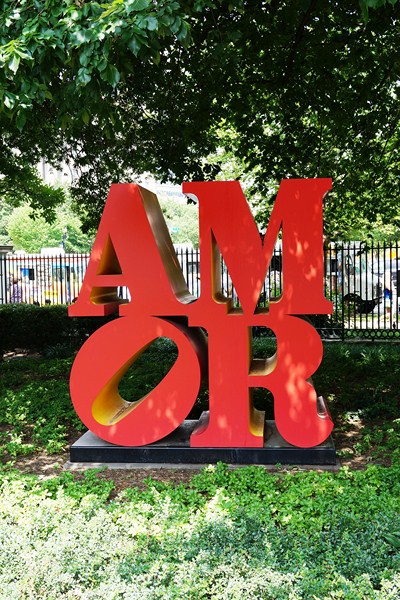
AMOR, by Robert Indiana (1998 – 2006), is a play on the artist’s famous LOVE sculpture, Indiana’s design, with its distinctively inclined O, was constructed from red and yellow polychrome aluminum.
National Gallery of Art Sculpture Garden: Constitution Ave NW &, 7th St NW, Washington, D.C. 20408. Tel: +1 202-289-3360. Open daily, 11 AM – 4 PM. Admission is free.


